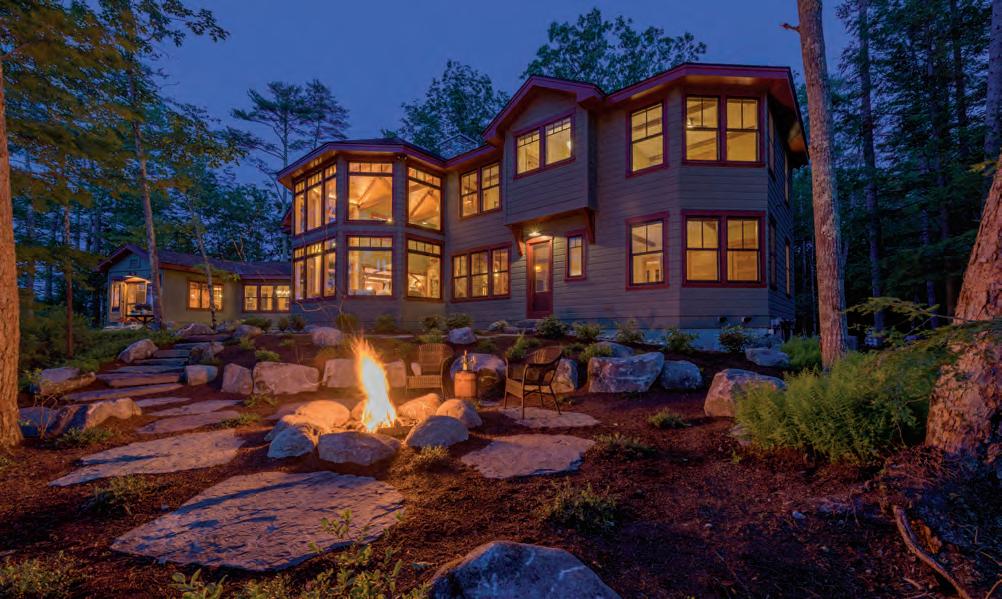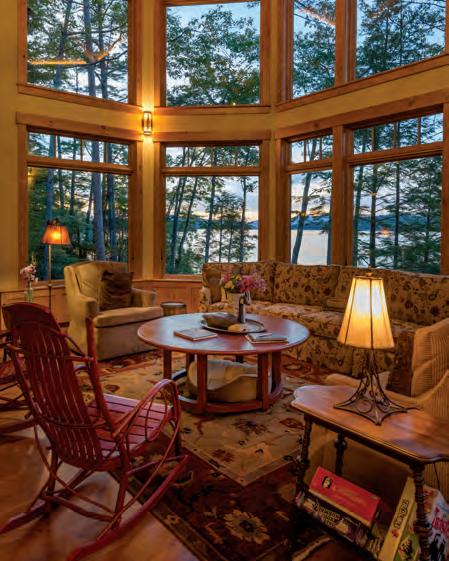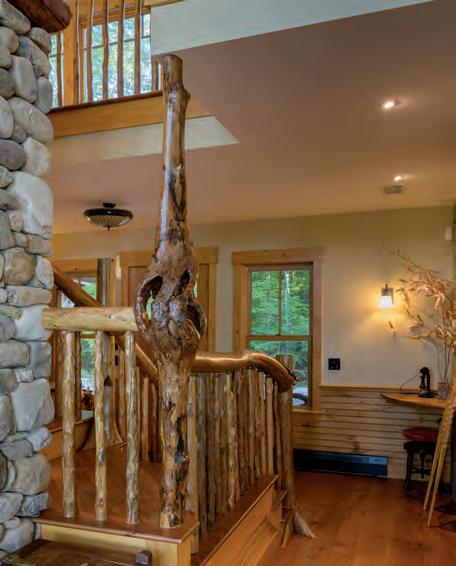

A HISTORIC FARMHOUSE RESTORATION


Rumford Stone has a sweet selection of natural stone, quartz, and porcelain surfaces. Choose from a wide array of colors from today’s top manufacturers to create eye-catching countertops that can be enjoyed for years to come. Homeowners, professional kitchen designers, and installers looking for selection, expertise, and service, trust Rumford Stone to take their creative vision and deliver finely crafted surfaces for every room in the house. Begin exploring the endless possibilities at the Rumford Stone Design Center and Slab Yard. If you or your clients can dream it, it’s probably here. Contact your local kitchen dealer or stop by our showroom today.
Showroom: 95 Sheep Davis Road, Route 106 Pembroke, NH . Slab Yard: 284 River Road, Bow, NH . 603.224.9876 . RumfordStone.com

Hands-On Craftsmanship

Quality Comes Standard
Testing Beyond Standards
Cabinets for Universal Design







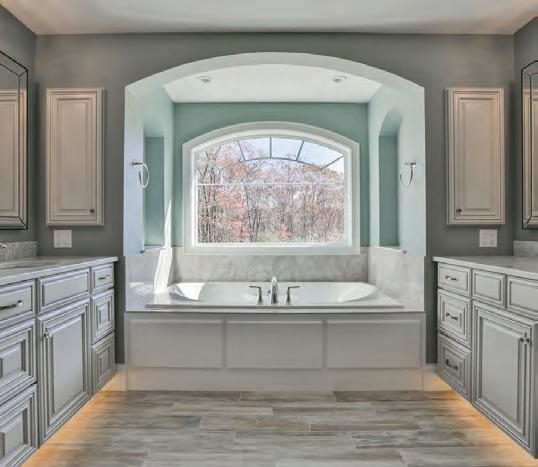
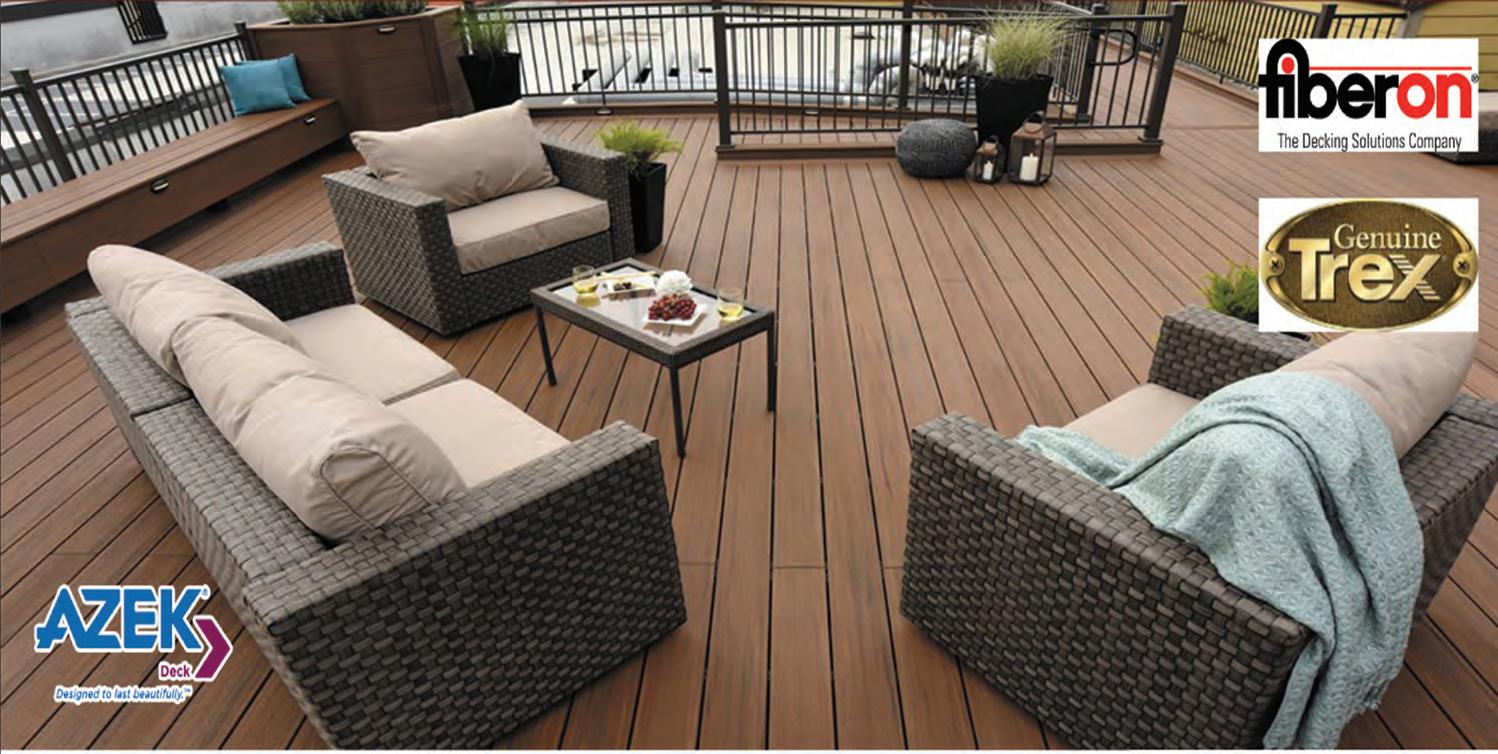


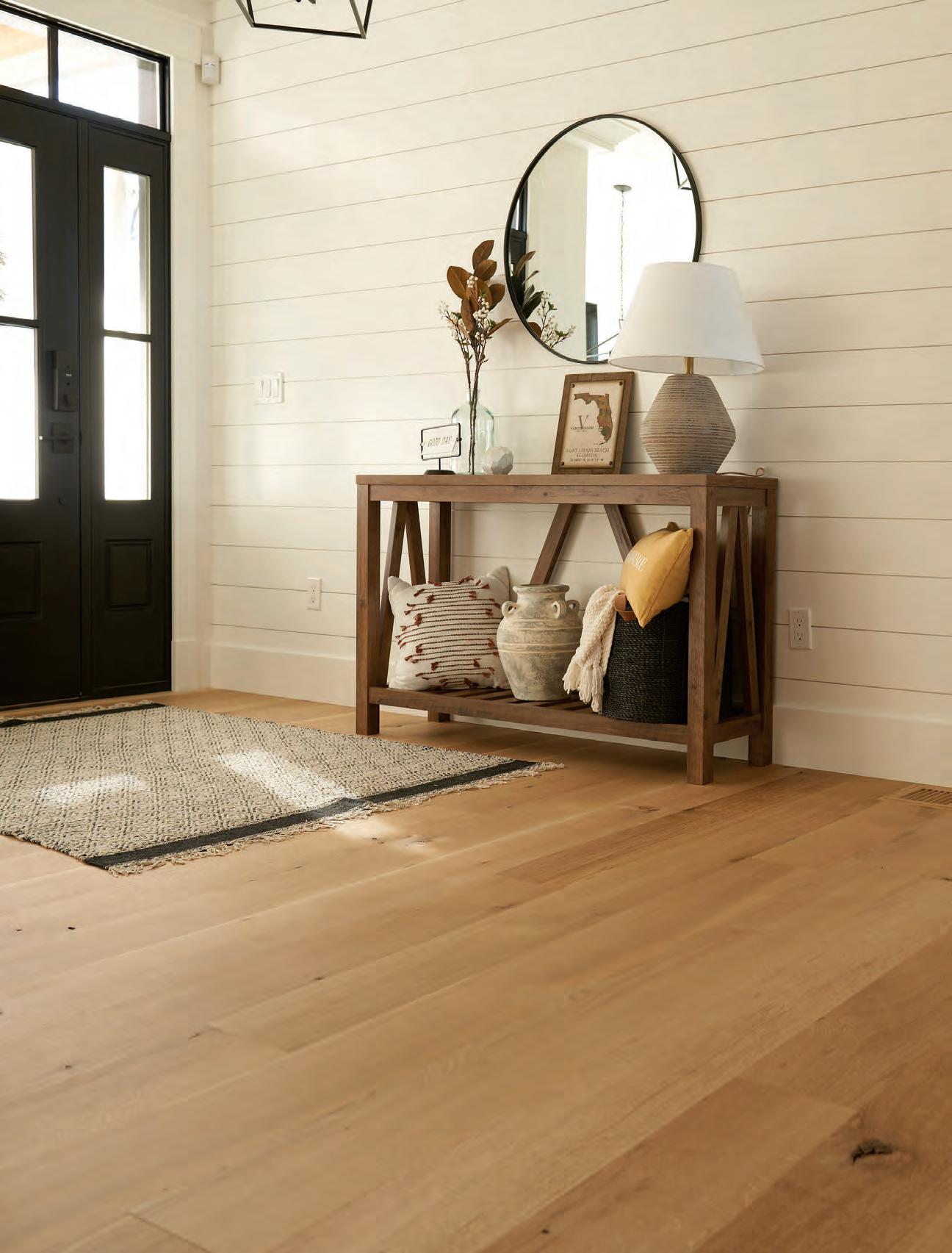

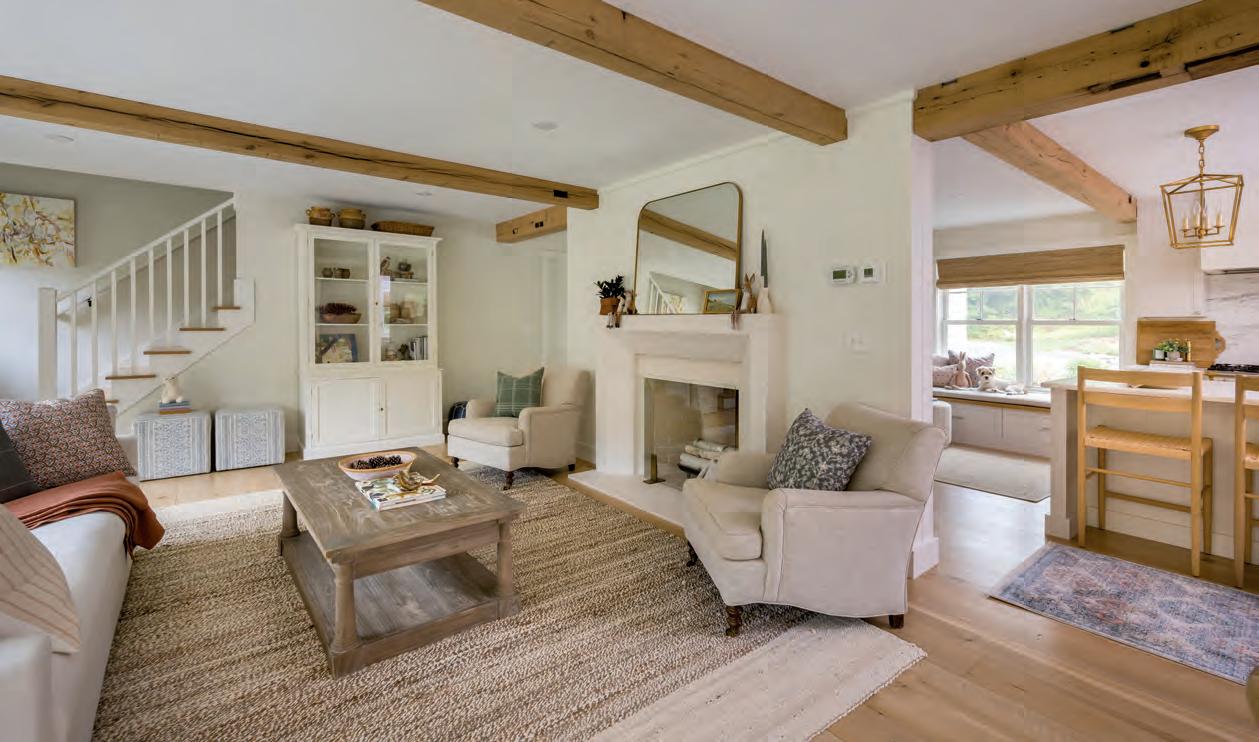
Design with Distinction
Studio Sage is a small, full-service design firm, with a focus on specialty, individualized interior design. We strive to curate innovative design solutions tailored to our client’s specific lifestyle. We pride ourselves on a collaborative approach to projects, helping our clients discover, develop and execute their own unique aesthetic. Because no two projects are the same, we are equally challenged and inspired by the work that we do. From concept, completion and finishing with our white-glove art curation we are proud to serve clients all over New England.
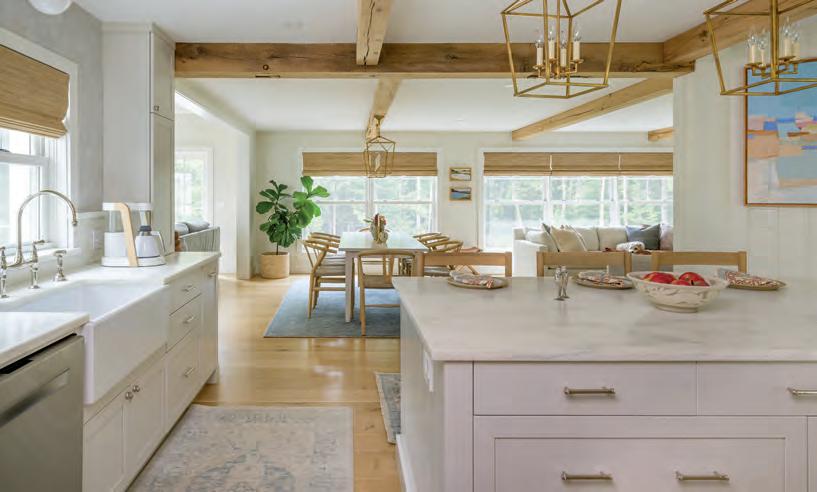
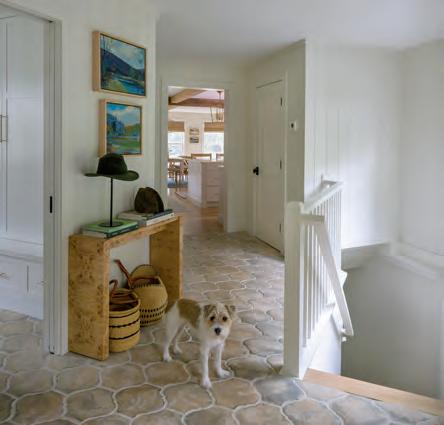

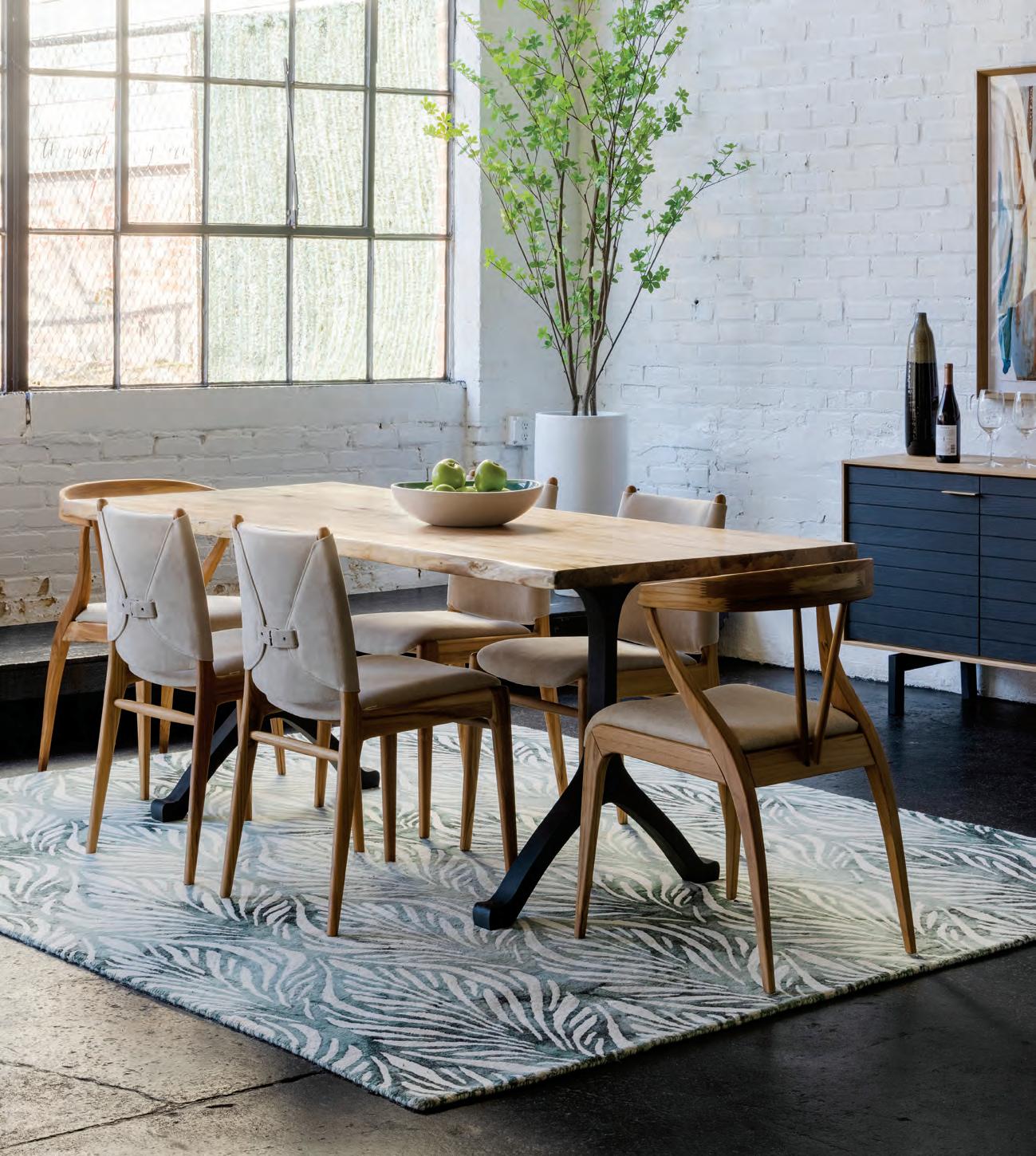
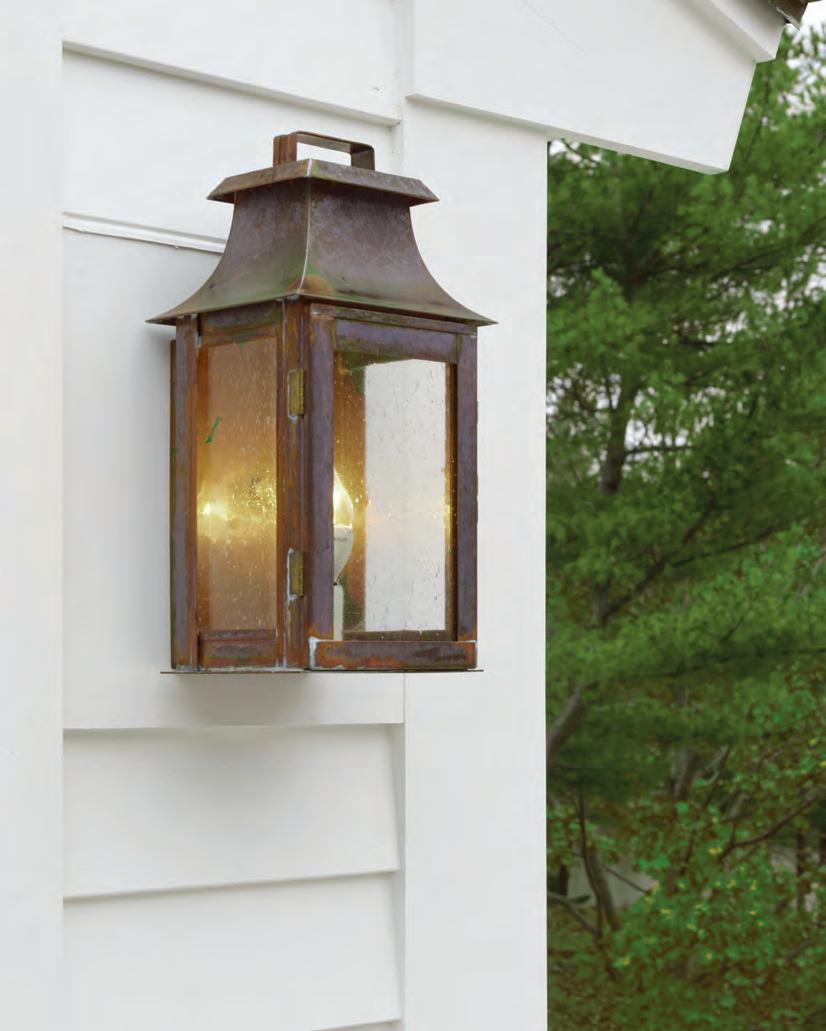

Lighting the Way You Live
Northern New England’s Lighting and Design Specialists
437 SHATTUCK WAY, NEWINGTON, NH | 833-492-7938
MONDAY – FRIDAY 8:30 AM – 5:00 PM | SATURDAY 9:00AM – 5:00 PM | SUNDAY: CLOSED
221 WASHINGTON STREET, CLAREMONT, NH | 833-492-7946
MONDAY – FRIDAY 8:00 AM – 5:00 PM | SATURDAY & SUNDAY: CLOSED

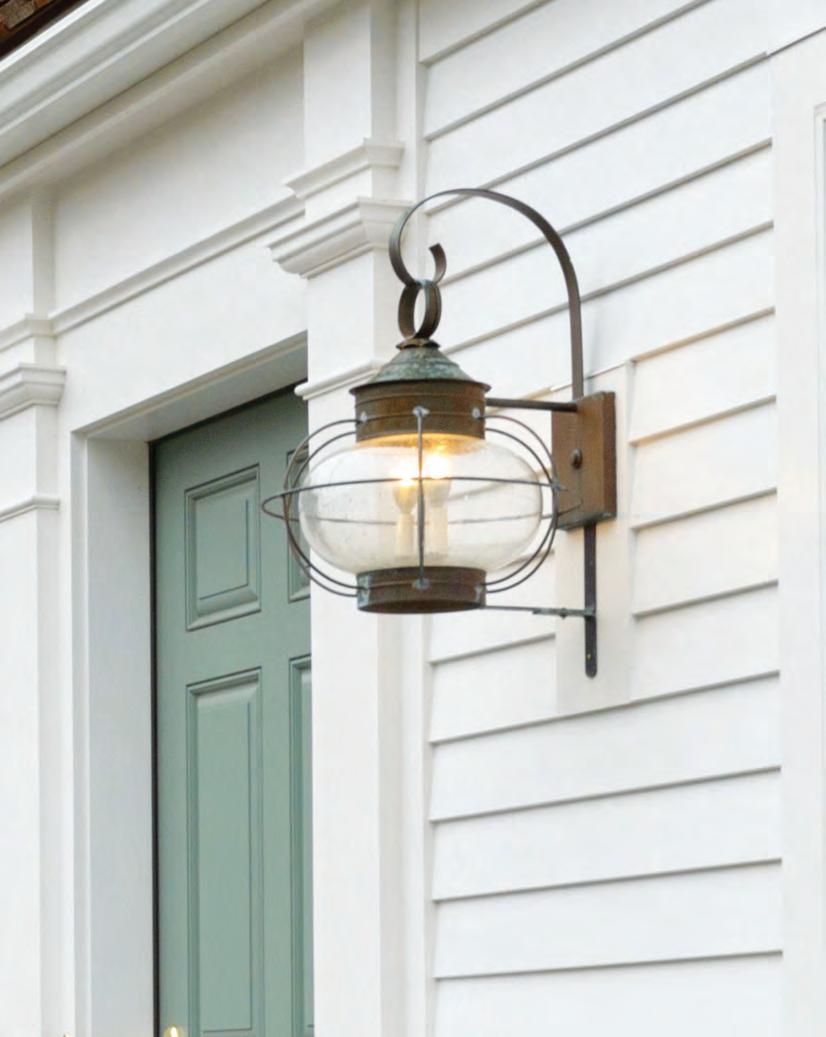

A Few Perfect Pieces Can Transform Your Home
Whether your home is on a lake, in the mountains or in the center of a beautiful New Hampshire town, you want your rooms to reflect your lifestyle and personal taste. Our stores will inspire you, spark ideas and provide solutions. Learn why the construction of quality furniture makes a difference and enjoy design expertise from a staff whose only goal is to make you love your home. Whether you are looking for one perfect piece or furnishing an entire home, we invite you to discover all that Winchendon Furniture has to offer.

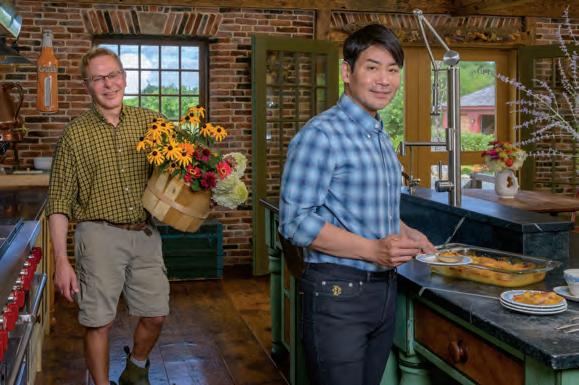


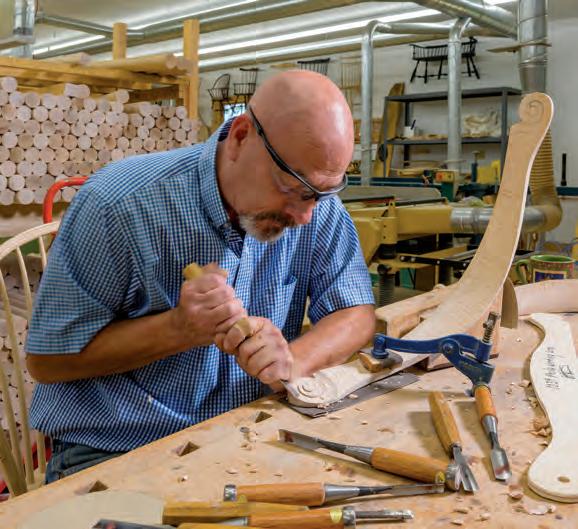

58 This Old House in Andover
An 18th-century farmhouse brings together period charm and carefully collected antiques. By Brion O’Connor | Photography by John W. Hession
72 It Takes a Village
A young family enjoys their light and bright Lakes Region house, newly renovated, both indoors and out. By Janice Randall Rohlf | Photography by John W. Hession FEATURES
22 From the Editor 26 Favorite Finds Items for the Holidays By Amanda Andrews 34 Home Cooking The Holiday Dinner Party By Mary Ann Esposito 44 By Design Finally Functional By Lynne Snierson
Photography by Greg West
52 Garden Rx Carnivorous Plants By Robin Sweetser
Photography by John W. Hession
84 Master of His Craft Expressions in Furniture By Emily Reily
Photography by John W. Hession
92 Mark Your Calendar Events Around the State
96 At Home in New Hampshire Ode to the Truth of Imagination By Dan Szczesny
Illustration by Carolyn Vibbert
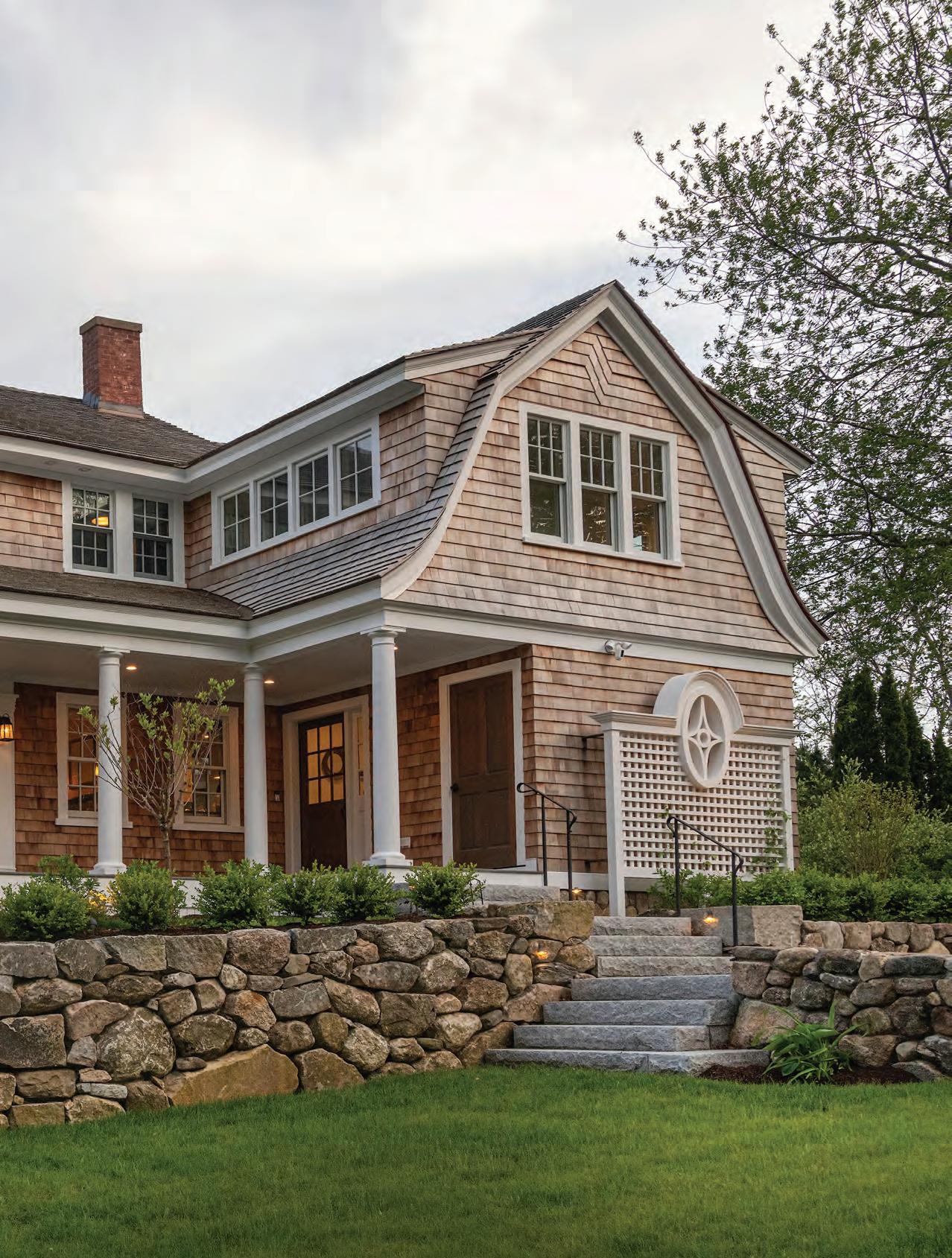
residential commercial interior design
Rob Karosis Photography
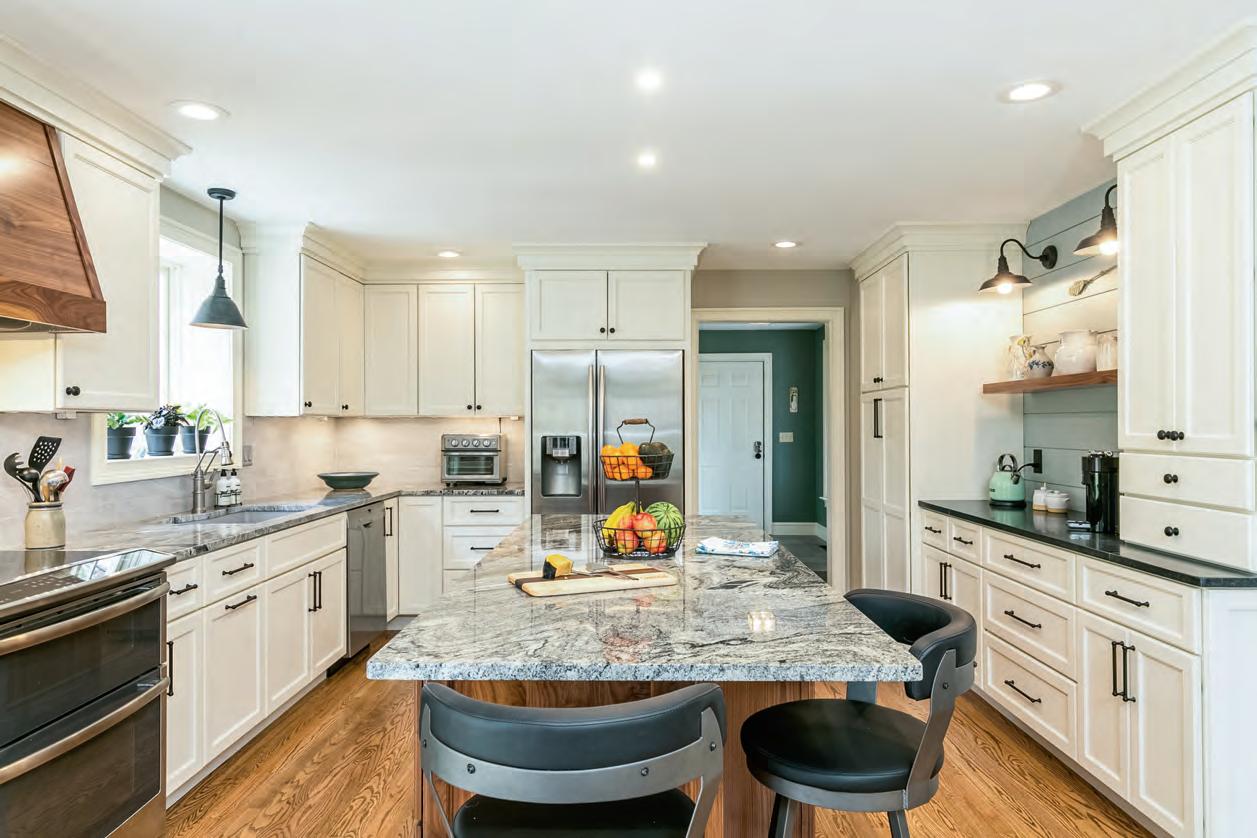




CONTRIBUTORS



Amanda Andrews is the associate editor for the New Hampshire Business Review, a Yankee Publishing publication, the parent company of New Hampshire Home.
Mary Ann Esposito is the host of the public television series “Ciao Italia,” now in its 29th season, and the author of 14 cookbooks, including her most recent, “Ciao Italia: Plant, Harvest, Cook!” She lives in New Hampshire. Visit her website at ciaoitalia.com.
Lynne Snierson is a freelancer who covered the NFL and Thoroughbred horse racing during her award-winning career as a sports writer. The Laconia native, who loves animals and is passionate about their welfare, lives in Salem with her retired champion Shetland sheepdog Mavis. She is also a regular writer for New Hampshire Magazine.


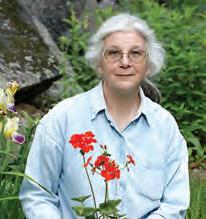
Brion O’Connor is a freelance writer and journalist whose work has appeared in many publications, including Men’s Journal, Sports Illustrated, ESPN, The Boston Globe, The New York Times, Bicycling, Men’s Fitness, Boston Magazine, New Hampshire Magazine and numerous in-flight magazines.
Emily Reily is a freelance journalist for several online music and entertainment sites, and has been published in New Hampshire Union Leader, New York Times for Kids and the Washington Post Magazine’s “Opening Lines” section. A former newspaper photojournalist, copy editor and page designer, Emily lives in Dover.
Robin Sweetser writes on gardening for the Sunday Concord Monitor and is a contributor to the Old Farmer’s Almanac, among other publications. A former Seacoast resident, she now lives and gardens in Hillsborough.



Dan Szczesny is a journalist, author and speaker who has written several books of travel memoir, poetry and essays. His newest book is “NH Rocks That Rock: An Adventure Guide to Twenty-Five Famous Boulders of the Granite State.” Learn more at danszczesny.wordpress.com.
Carolyn Vibbert is a Portsmouth illustrator whose work also appears on packaging for food and wine brands such as Barbara’s, Stone Cellars and Williams Sonoma.
Greg West is a photographer who believes that “in every room, in every building, there is a visual character that makes the space unique and worth a second glance.” He may be reached at gregwestphotography.com.
NOVEMBER/DECEMBER 2022
V OL. 16 | NUMBER 6
nhhomemagazine.com
VICE PRESIDENT/PUBLISHER Ernesto Burden
EDITOR Janice Randall Rohlf
ART DIRECTOR John R. Goodwin
PHOTO EDITOR John W. Hession
PHOTOGRAPHER Morgan Karanasios
CREATIVE SERVICES DIRECTOR Jodie Hall
SENIOR GRAPHIC PRODUCTION ARTIST Nicole Huot
CONTRIBUTORS
Amanda Andrews, Mary Ann Esposito, Lynne Snierson, Brion O’Connor, Emily Reily, Robin Sweetser, Dan Szczesny, Greg West
SALES DIRECTOR Jessica Schooley (603) 624-1442 ext. 5143 • (603) 345-2752 jessicas@yankeepub.com
ADVERTISING & EVENTS SALES DIRECTOR Jenna Pelech
OPERATIONS MANAGER Ren Chase
SALES & EVENTS COORDINATOR Paul Milone
BUSINESS & SALES COORDINATOR Paula Veale
DIGITAL OPERATIONS AND MARKETING MANAGER Morgen Connor
VP/CONSUMER MARKETING Brook Holmberg
VP/RETAIL SALES Sherin Pierce
BILLING SPECIALIST/IT COORDINATOR Gail Bleakley
EDITORIAL CORRESPONDENCE Janice Randall Rohlf, editor
New Hampshire Home 250 Commercial Street, Suite 4014 Manchester, NH 03101 (617) 543-3902 • janicerohlfnhh@gmail.com
SUBSCRIPTIONS
Subscriptions, New Hampshire Home PO Box 37900, Boone, IA 50037-0900; Call (877) 494-2036 or email customerservice@nhhomemagazine.com; subscribe online at nhhomemagazine.com
HAMPSHIRE GROU P An Employee-Owned Company
© 2022 Yankee Publishing, Inc.
New Hampshire Home is published bimonthly by Yankee Publishing, Inc.; 250 Commercial Street, Suite 4014, Manchester, NH 03101; (603) 624-1442. All rights reserved. Reproduction in whole or in part without the publisher’s written permission is prohibited. The publisher assumes no responsibility for any mistakes in advertisements or editorial. Statements and opinions expressed in this magazine do not necessarily reflect or represent those of this publication or its officers. While every effort has been made to ensure the accuracy of the information contained in this publication, Yankee Publishing, Inc.: New Hampshire Home disclaims all responsibility for omissions and errors.
NEW

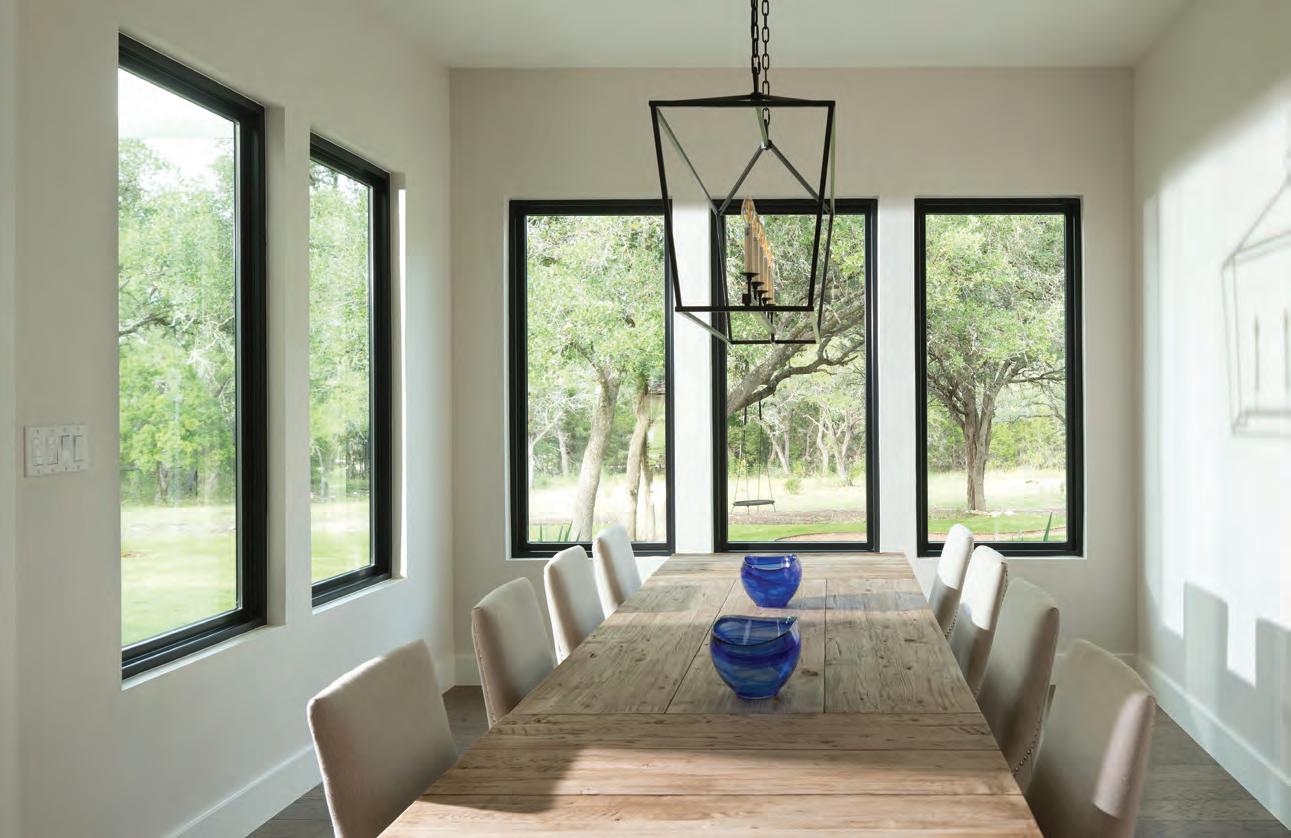


The experts at Ferguson Bath, Kitchen & Lighting Gallery are here to help create a home that’s as extraordinary as you are. Any project, any style, any dream—bring your inspiration to Ferguson Bath, Kitchen & Lighting Gallery. Visit build.com/ferguson to schedule your personalized showroom experience today.
YOUR LOCAL SHOWROOM: BURLINGTON MANCHESTER PORTSMOUTH
Allaria Bath
Nice to Meet You

I’M THE NEW KID ON THE BLOCK here at New Hampshire Home and couldn’t be more delighted to join a talented team at a top-notch publication. As a child, I spent many summers with my family at Wheelwright Pond in Lee. We stayed in a cabin my dad built with his father and brother, and while it was extremely rustic (read: no indoor plumbing until my mother put her foot down), fond memories from those long-ago days are still vivid in my mind.
Needless to say, home remodels have come a long way since my father reluctantly ditched the outhouse for a teeny-tiny bathroom squeezed into a corner of our cabin. This issue celebrates houses that have been refreshed, renovated and redesigned. These renovations often come about when homeowners are faced with a decision to move or stay put and invest in updating their house—functionally, esthetically or both—to suit their current lifestyle.
This was the situation for Leah and Jon Cushman. They had simply outgrown their beloved house in the Lakes Region when they added two children to the family. Their tastes had evolved along the way, too. The couple’s requirements for a house that would be comfortable now, and into the future, changed. They tapped builder Jonathan Bennett to spearhead a major renovation that, among other initiatives, added a family room where a screened porch once stood, created better flow in the kitchen and introduced more and better windows to bring much-needed sunlight into the house. A dedicated team of builder, architect, interior designer and landscape professionals worked their magic, and you can admire the results on page 72.
As our kitchens take on an increasingly important and multifaceted role, individuals are casting a critical eye on the heart of the home and asking themselves if the room suitably addresses their needs, not only for meal preparation but also as a main gathering space for family and guests. Johnna Dourdoufis faced this dilemma in her Stratham home. After nearly 20 years with the same kitchen, she finally bit the bullet, hiring Cathy Stathopoulos to help. The B&G Cabinet designer called on her more than 35 years in the business to meet the challenges posed by this project. “Having it come out like this was transformational,” she says. You can see what she’s talking about on page 44.
The requisite nesting that occurred during the pandemic spawned a whole new interest in remaking our home environments—from painting walls to knocking them down and everything in between. Even before this, however, Dr. Joseph Spychalski was working with a team of restoration specialists to shore up a more than 200-year-old house in Andover and outfit it with thoughtfully curated antique furniture and other treasures that respected the Colonial-era home.
Rebuilding historic homes is a very specialized niche in the realm of home remodels, one that requires not only expertise but also patience. Just ask Dr. Spychalski, who spent seven years making habitable a house that, he says, “had never seen a central heating system and only had electricity on a portion of the first floor.” His story, on page 58, is not to be missed.
Just like the meticulous restoration experts who revived the Andover farmhouse’s Colonial spirit, Douglas P. Dimes has a lifelong passion for a lost art: making furniture by hand. Specifically, Dimes, like his father before him, designs and crafts museum-quality Windsor chairs and other pieces using 18th-century standards of quality. Emily Reily interviewed Dimes for this issue (see page 84).
As I write this, I’m about to spend the weekend participating as a judge in the Parade of Homes organized by the Lakes Region Builders & Remodelers Association. In addition to admiring the houses, I look forward to seeing some spectacular fall foliage.

Janice Randall Rohlf Editor


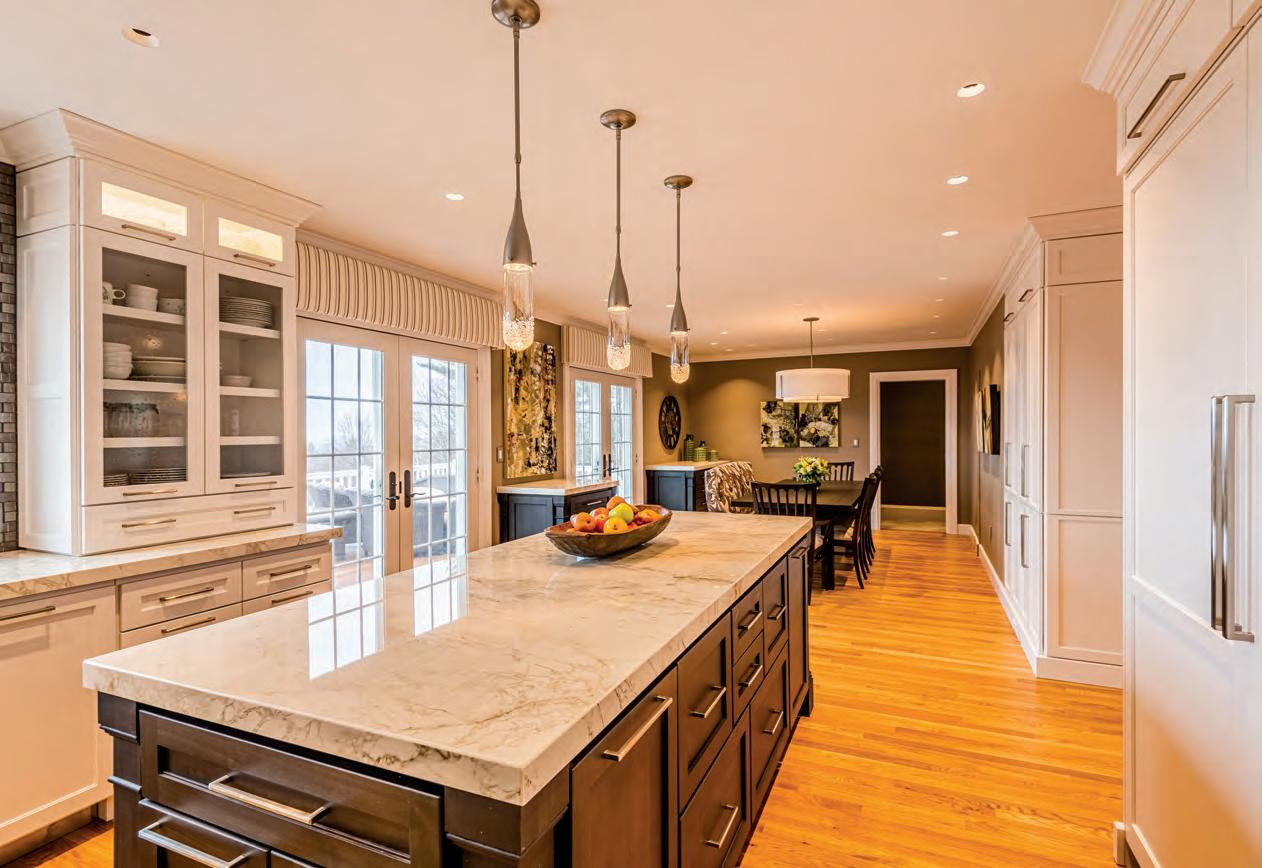

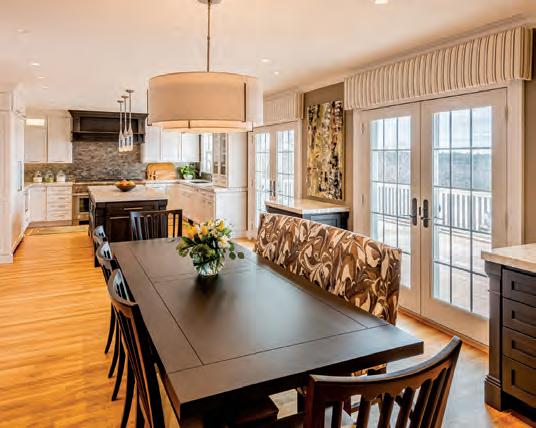


Look for vintage items, like this seafoam green stoneware, as a unique gift to give friends or family. Stone Ridge Attic in Peterborough etsy.com/shop/stoneridgeattic
Make an entrance with this handcrafted door harp, sure to bring a musical air to any home. Uncommon Goods uncommongoods.com

Holiday Gifts

Find unique pieces, like these wooden candle lanterns, that will wow any gift recipient. Revived Furniture in Londonderry revivedfurniturehomedecor.com

Imagine getting cozy wrapped in this chunky knit blanket, watching the snow fall while sipping hot cocoa. Vanella Handmade in Hooksett etsy.com/shop/VanellaHandmade

Help your friends and family plan their next adventure with this scratch-off map of popular destinations.
Kristin Douglas Art etsy.com/shop/KristinDouglasART
Infuse spirits to use in craft cocktails for your next party, or gift these flavorful infusion kits to loved ones. Alapage Boutique in Bedford · alapageboutique.com


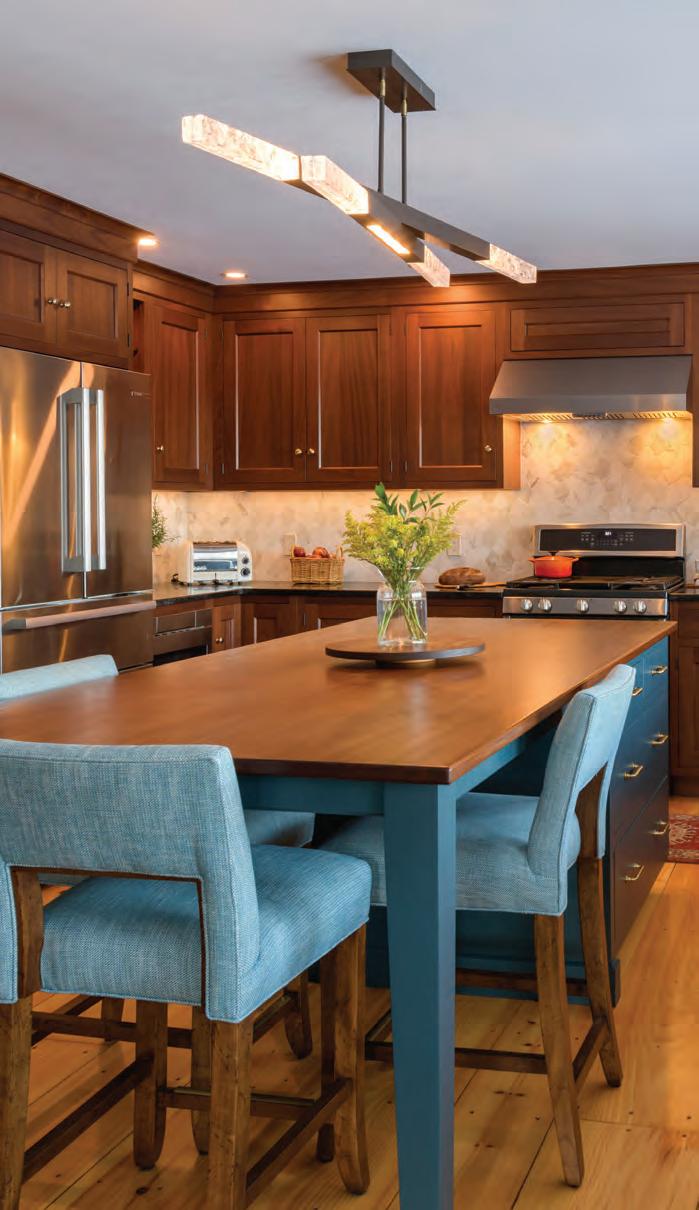
Help a friend display their favorite coffee mugs and pint glasses in their kitchen with a custom-made rack from local artisans. 318Custom in Milford · etsy.com/shop/318custom



Keep surfaces free from clutter with this elegant tray that also helps you serve snacks or drinks to your guests. Fritz Hansen · fritzhansen.com

Give the gift of warmer days with Fabrizia Spirits’ glorious Limoncello. Fabrizia Spirits in Salem · fabriziaspirits.com


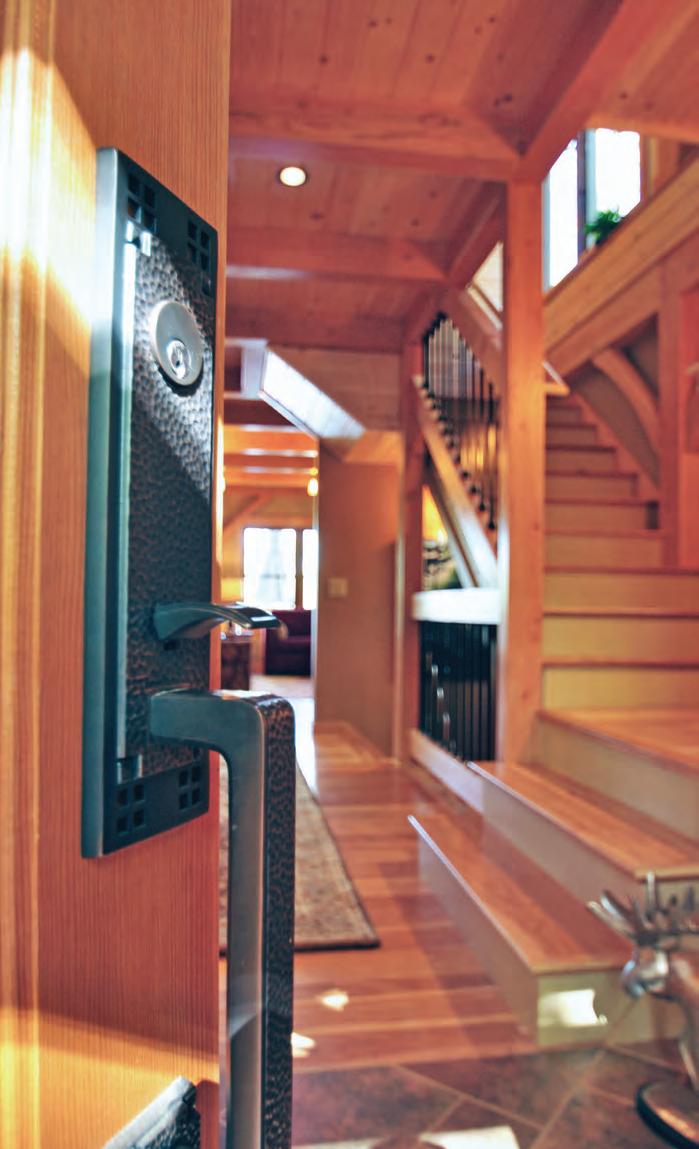


Write your stress away with this unique essential oil diffuser pen.
Sorellina Boutique in Londonderry sorellinaboutique.com
One-of-a-kind pieces like this handcrafted porcelain vase are sure to emphasize elegance in your home. Turin & Turin Clayworks in York, Maine turinclayworks.com High-quality wooden charcuterie and cutting boards make the ideal gift for the cook in your life. Pottery Barn in Salem potterybarn.com

Bring the party everywhere you go with this all-in-one mobile bar cart. Uncommon Goods · uncommongoods.com



Schedule a private tasting with friends in the original 17th-century, post-and-beam barn at Flaghill to experience award-winning wines and spirits.
Flaghill Distillery & Winery in Lee · flaghill.com

These wood and marble coasters are a perfect house-warming gift. Homebody in Concord homebodynh.com


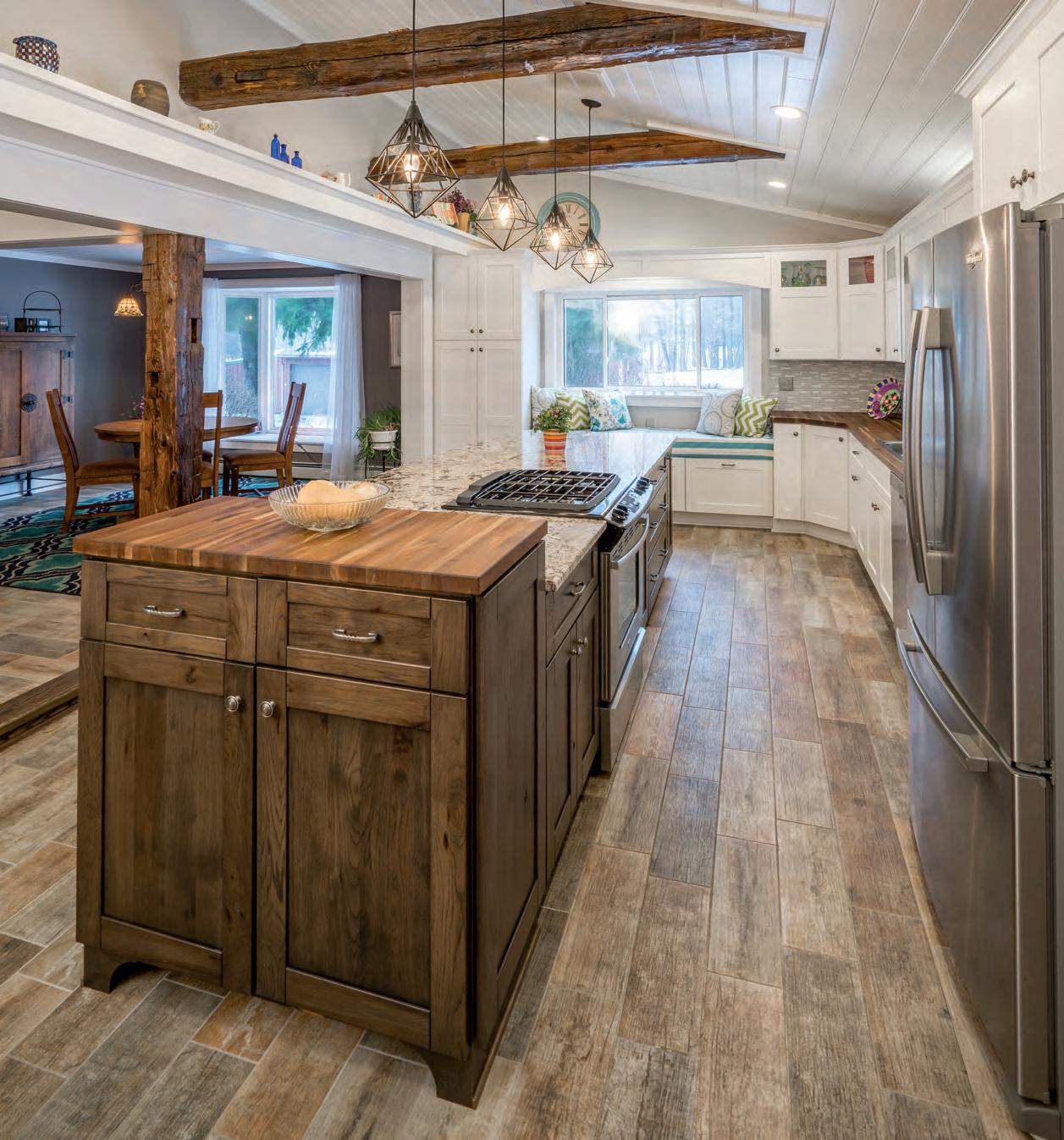
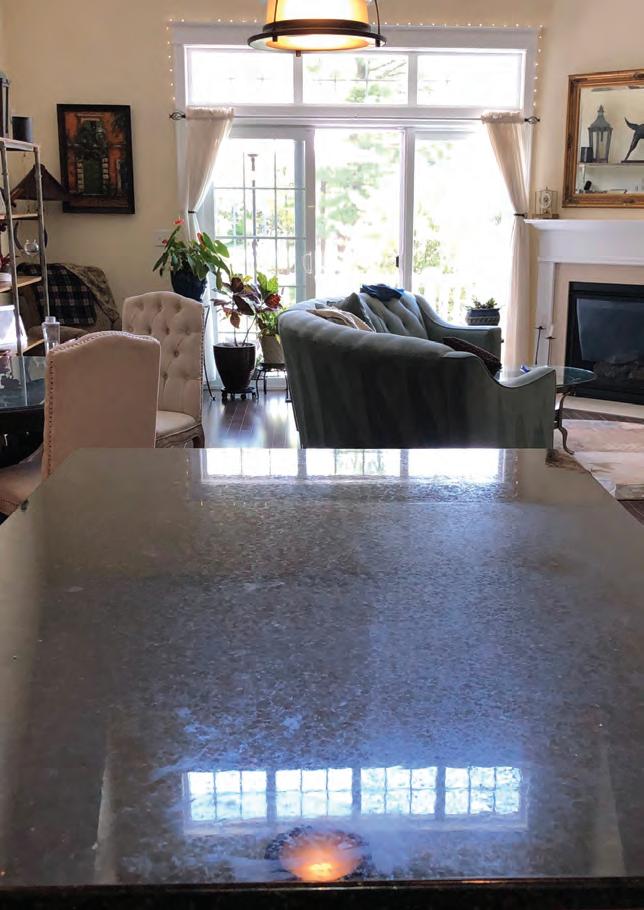

§




The Holiday Dinner Party
Inviting your guests to bring a dish to share will make it special.
Holiday gatherings with family and friends are back after a long hiatus of hunkering down due to the pandemic. So, is it any wonder that people want to party in a big way? One of my favorite ways to entertain during the holiday season is to host an old-fashioned dinner party, but instead of doing all the work myself, I invite my guests to bring a dish to share. That way everyone gets in on the fun and “owns” the dinner.
The success of a dinner party is all about details like what can be prepared ahead of time, how to decorate the table, what beverages to serve and how many guests to invite.
For the bring-a-dish concept of a dinner party, the host is responsible for the beverages and the main dish, while the guests have fun bringing sides, salad or dessert. The main dish choice will determine what sides are most compatible, travel well and don’t need a lot of fussing like lots of time in the host’s oven or microwave.
My advice is to keep the guest list short. Invite too many guests and someone will invariably get lost in the conversation. Eight is an ideal number because food preparation is more manageable for both the host and guests. Table size and seating can also be a factor in determining the number of guests.
For the holidays, something special is in order when you want to make a presentation statement. A beef Wellington, a glazed ham, roast leg of lamb and roast duck are all classics and require lots of attention at the last minute. This year with food costs being so high,
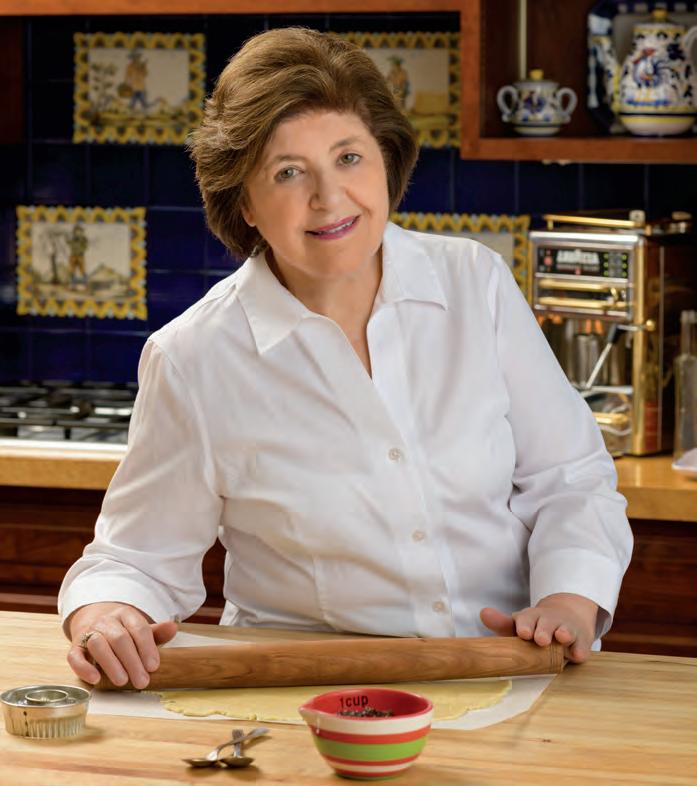
something elegant but won’t break the bank makes a lot of sense.
For me, a pork tenderloin rubbed with herbs and spices, wrapped in slices of bacon or prosciutto and served with fried apple slices will do nicely. Pork tenderloin is reasonably priced, and two will easily serve eight people. An added bonus is that the tenderloin can be prepped two days before and popped into the oven before the guests arrive.
BY MARY ANN ESPOSITO | PHOTOGRAPHY BY JOHN W. HESSION
Once the main dish is decided, guests can bring something compatible to go with it. For a pork tenderloin, roasted Brussels sprouts, a mixed vegetable casserole, a cauliflower and potato casserole, a rice and mushroom casserole, or sautéed broccoli are all great choices.
A green salad sprinkled with pomegranate seeds adds a festive touch and for dessert, nothing says holiday like a no-bake ice cream cake. Let the party begin! NHH

Holiday Ice Cream Cake SERVES 8
This no-bake frozen “cake” must be on our holiday table—it is a family favorite and I can’t think of the holiday without it. Put it together a month ahead of time and stash it in the freezer. There are only two ingredients: good peppermint ice cream and store-bought chocolate wafer cookies. I guild the cake and serve it with warm hot fudge sauce, because Christmas only comes but once a year.
1 box plain chocolate wafer cookies
1 quart peppermint stick ice cream, softened
Hot fudge sauce (optional)
Whipped cream (optional)
Chopped walnuts (optional)
1. Line a loaf pan or round or square cake pan with plastic wrap and leave at least 2 inches of an overhang.
2. Place a layer of cookies in the base of the pan. Don’t worry if they do not fill in the entire area. Spread a layer of ice cream over the cookies.
3. Repeat, making layers of cookies and ice cream. Make the top layer cookies.
4. Bring the overhanging edges of plastic wrap over the top of the pan to cover and press on pan with your hands to compact the layers.
5. Wrap the pan tightly in aluminum foil and freeze until ready to serve.
To serve:
1. Remove the foil and invert the pan onto a serving dish. Remove and discard the plastic wrap.
2. Cut the cake into slices and serve with warm hot fudge sauce and/or whipped cream and nuts.
Bacon-Wrapped and Honey-Glazed Pork Tenderloin with Apple Rings SERVES 8
No need to spend a fortune to make this juicy pork tenderloin that will make a statement as the star of your holiday table.

Glaze
4 tablespoons honey
4 tablespoons honey mustard
Fried Apple Rings
4 tablespoons butter or more as needed
6 Cortland apples, cored and sliced into ¼ inch thick rounds
Tenderloin
2 11/2 pounds pork tenderloin
4 large, peeled garlic cloves
1/2 cup fresh rosemary, needles only
11/2 tablespoons fennel seeds toasted and crushed
2 teaspoons coarse salt
11/2 tablespoons coarse black pepper
4 tablespoons extra virgin olive oil or more as needed
8 not too thin slices bacon or prosciutto
1. In a small bowl, mix the honey and mustard together and set aside. (Can prepare 2 days ahead.)
2. Melt 4 tablespoons of the butter in a nonstick sauté pan, and cook the apple slices in batches if necessary until they are golden brown and glazed looking. Transfer the slices to a dish and set aside. (Can be made early in the day and reheated in the microwave just before serving.)
3. Dry the pork tenderloins with a paper towel and set aside.
4. On a cutting board, mince the garlic, rosemary and fennel seeds together. Place the mixture in a small bowl and add the salt, pepper and 3 tablespoons of the olive oil to make a paste. With your hands, rub the paste evenly all over the tenderloins. Wrap each one crosswise with 4 slices of the prosciutto or bacon. (At this point, the tenderloins can be wrapped in plastic wrap and refrigerated for up to 2 days before roasting.)
5. Preheat oven to 425oF.
6. Place a rack in a roasting pan and brush the rack with the remaining 1 tablespoon olive oil.
7. Place the tenderloins on the rack and baste each one with the glaze. Bake for 15 to 20 minutes or until a meat thermometer registers 145oF for medium rare. (Overcooking the meat will make it dry.) Remove the tenderloins from the oven to a cutting board and allow them to rest, covered loosely with aluminum foil for about 10 minutes. Cut across the diagonal to serve accompanied with the fried apple slices.
Recipe courtesy of Mary Ann Esposito


Photograph by Heidi Cooper Photography

Mashed Cauliflower and Potato Casserole
SERVES 8
Cauliflower and potatoes marry well in this hearty casserole that is perfect as a side dish for the glazed pork tenderloin. It can be prepared and baked ahead of time and kept warm until serving.
¼ cup extra virgin olive oil, plus extra for drizzling
1¼ cups fresh breadcrumbs
8 cups coarsely chopped cauliflower
2 cups small-diced, peeled Yukon Gold potatoes
Salt and freshly ground black pepper to taste
2 large eggs, lightly beaten
1 cup grated Parmigiano-Reggiano cheese
½ cup minced, fresh flat-leaf parsley
¼ teaspoon ground nutmeg
12 slices provolone cheese
1. Preheat the oven to 375°F. Oil a 9-by-13-inch baking dish.
2. Sprinkle ¼ cup of the breadcrumbs evenly in the baking dish and place in the refrigerator.
3. Bring a large pot of water to a boil. Add the cauliflower, potatoes and 1 tablespoon salt and cook until very tender, 10 to 12 minutes. Drain in a colander, then transfer the cauliflower and potatoes to a large bowl. Mash the cauliflower and potatoes with a potato masher or large fork.
4. Cool the mixture slightly, then stir in the olive oil, eggs, ½ cup of the grated cheese, the parsley, nutmeg, and salt and pepper.
5. Use your hands to spread half of the cauliflower mixture evenly in the baking dish on top of the breadcrumbs. Layer and overlap the cheese slices over the top. Spread the remaining cauliflower mixture over the cheese, then sprinkle the top evenly with the remaining 1 cup breadcrumbs and remaining ½ cup grated cheese. Drizzle a little olive oil over the top.
6. Bake for 35 to 40 minutes, or until the top is golden brown. Cool slightly. Scoop from the pan to serve.
Recipe courtesy of Mary Ann Esposito


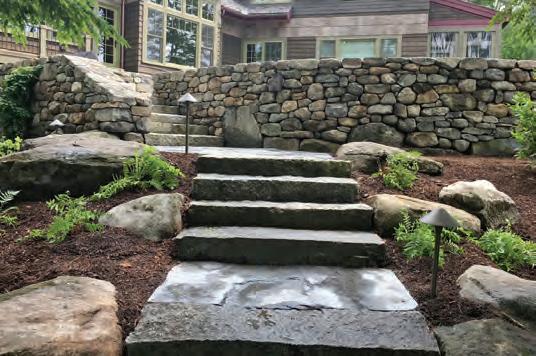





Brussels Sprouts and Leek Casserole
SERVES 8
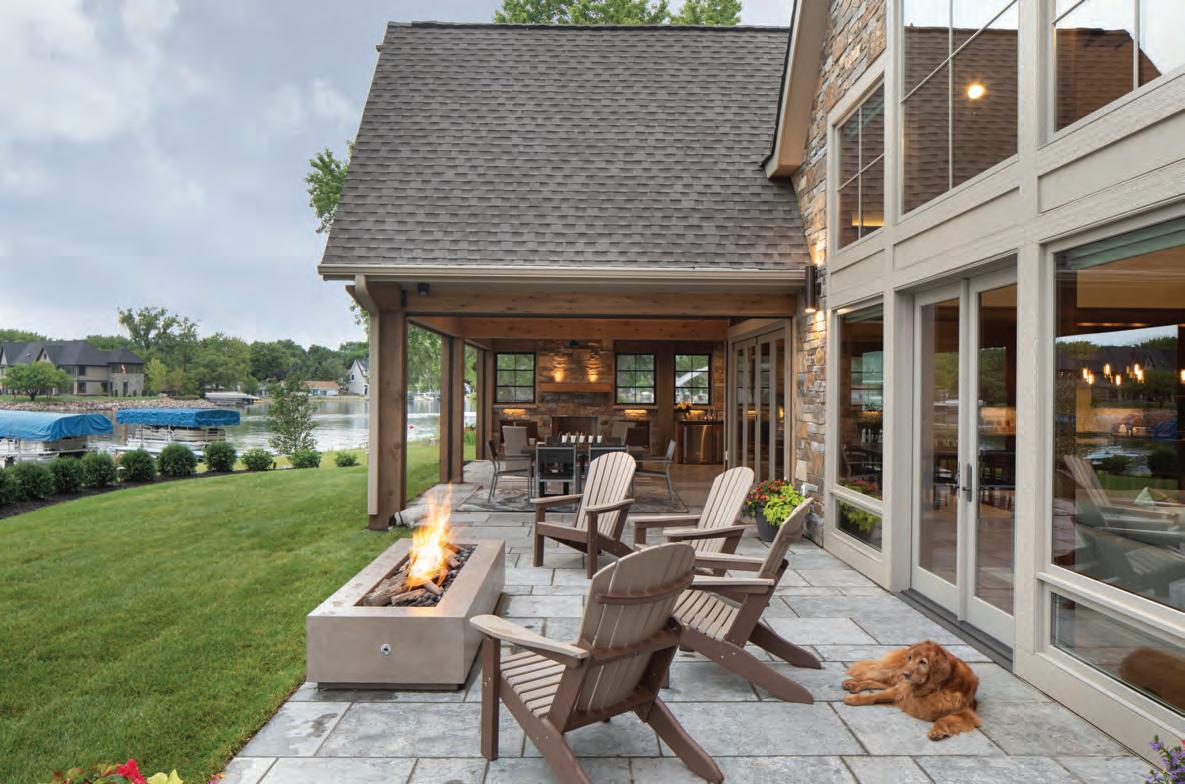


This fabulous Brussels sprouts and leek casserole is my go-to casserole for fall and winter holiday cooking. Sweet tasting and velvety smooth, even Brussels sprouts
2 tablespoons extra virgin olive oil
2 large leeks, white part only, thinly sliced
1 pound (about 25) Brussels sprouts, washed, cored, cut in half and thinly sliced
½ cup dry white wine
Salt to taste
Cream Sauce
2 tablespoons butter
¼ cup flour
2 cups low-fat milk
1 cup light cream
½ teaspoon grated nutmeg
Salt to taste
1 cup shredded Swiss cheese
½ cup shelled natural pistachio nuts
1. Heat the olive oil in a large sauté pan and, when it is fragrant, add the leeks and Brussels sprouts and cook until the mixture begins to wilt. Raise the heat to high, add the wine and allow it to almost evaporate. Lower the heat to medium. Stir in the salt. Set aside.
2. In a quart saucepan, melt the butter over medium heat, whisk in the flour and cook until a paste forms.
3. Next, slowly whisk in the milk and cream and continue whisking over medium heat until the mixture begins to thicken. Then, stir in the nutmeg, salt and half the cheese.
4. Stir the cream sauce into the Brussels sprouts mixture and combine well.
5. Transfer to a buttered 9-by-12 casserole dish and spread evenly. Sprinkle the remaining cheese over the top.
6. Bake covered in a 350oF oven for 20 minutes.
7. Remove foil and sprinkle nuts evenly over the top and continue baking an additional 10 minutes until the top is browned and the mixture is bubbly. Serve hot.
Recipe courtesy of ciaoitalia.com


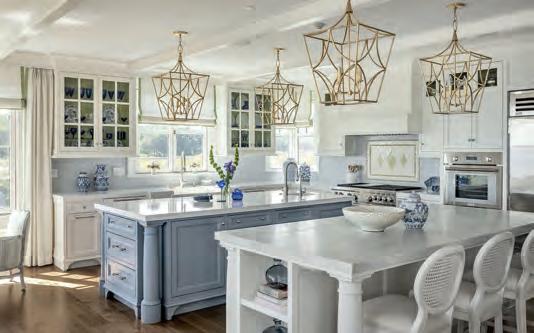
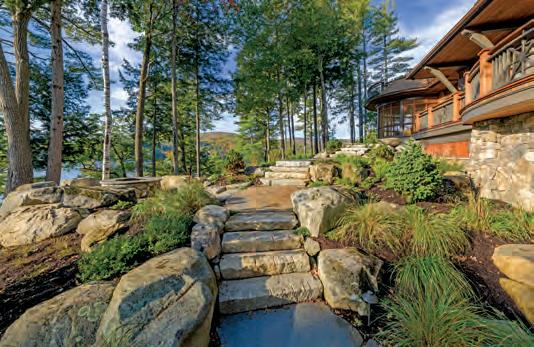
Make sure your project gets the recognition it deserves— New Hampshire Home will celebrate an array of design excellence at the Design Awards gala in April 2023. Mark your calendar and stay tuned for details.




Jesse R. Lindland, President/CEO OICONSTRUCTION.COM
603-875-4734
Outside In Construction
611 Suncook Valley Road, Alton, NH
Q:Is it more cost effective to renovate an existing home or tear down and build a new one?
A:That is a question we are frequently asked as a custom home builder in the Lakes Region. Whether it be an existing home you own or one you are looking to purchase, there are a few key points that we use to determine the best approach. The first is the foundation and footprint; with construction you work from the ground up. If the home has an existing concrete or solid CMU block foundation in good condition with a good sized footprint, typically a design can be assembled that utilizes the space for a new and/or
expanded layout. The second is the existing structure on the foundation. This can be a little more complex and involves framing, rooflines, etc., and whether these can be re-used or modified to allow for the remodeled space you are looking to have. The last point is whether the property has sentimental value to the owner; sometimes this can be the ultimate factor in determining whether you keep or tear down and rebuild a new home.
Q:How do I select the decorative surfaces, colors, and fixtures?
A: Every company has a different process for doing this, and at Outside
In Construction we are very proud to have streamlined this process. We offer a substantial amount of support
to our clients, which is done a few different ways. First, our Selection Coordinator Aimee will work with every client to guide them through the process of choosing all the different finishes in their home. Second, we have a large vendor family located all around the Lakes Region with whom we've worked for many years. Third, we utilize an online project management portal called BuilderTrend. Each client has a portal that they can login to at any time and see their entire project, including schedule, weekly updates, pictures, change orders and selections. Our clients work with Aimee to meet with vendors, choose their fit and finish and have everything presented to them online to review, approve and modify.
❛❛
Whether you are starting with an idea in your head, a sketch on a napkin, or a complete set of plans, we will work with you to take the project to the finish line and build the home of your dreams.
At Outside In Construction we are here from concept to creation. Whether you are starting with an idea in your head, a sketch on a napkin, or a complete set of plans, we will work with you to take the project to the finish line and build the home of your dreams. We are a full-service design & build firm with over 22 years of experience in the Lakes Region.

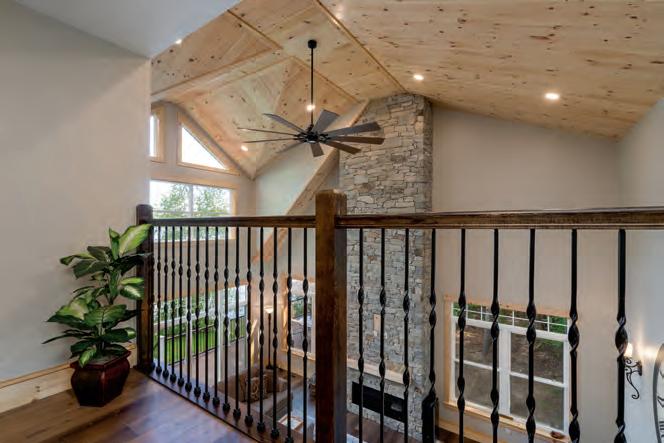


BY
Finally Functional
LYNNE SNIERSON | PHOTOS BY GREG WEST PHOTOGRAPHY

Minor layout changes produce major impact in this Stratham kitchen
When her children were small, every time Johnna Dourdoufis wanted to open the double oven doors, she panicked, and had to first yell out, “Don’t come into the kitchen!”
“I had in-wall double ovens that were in the doorway between the mudroom and the kitchen,” she explains. “I was afraid one of my kids would run into a hot oven.” Family holidays with lots of little ones underfoot made her particularly nervous. “My kitchen was functionally bad. Even worse, it was dangerous.”
Johnna and her husband, Peter, built their 4,100-square-foot Stratham home in 2002. In the fall of 2019, they decided to finally renovate their kitchen, but the Covid pandemic and ensuing supply chain shortages kept the project from beginning in earnest until June 2020.
“It was way, way beyond time for an upgrade,” says Johnna. “Most of the appliances and most of the cabinets were broken. I was using my son’s microwave from college because mine had died.”
The existing space presented a multitude of problems. In addition to the hazardous oven doors, the refrigerator was angled in such a way that when its door was opened it bumped into the kitchen island. All the appliances and the sink were located on the same side of the kitchen, creating a logjam, and there was room for only one person at a time at the cooktop. Even the hardware was in the homeowners’ words, “ugly.”
While they understood that a major renovation was called for, the Dourdoufises were put off at first by what certain professional remodelers were telling them. “A lot of them wanted to do a
Left: The kitchen was redesigned to support day-to-day life and family gatherings in a stylish, comfortable and simple setting.
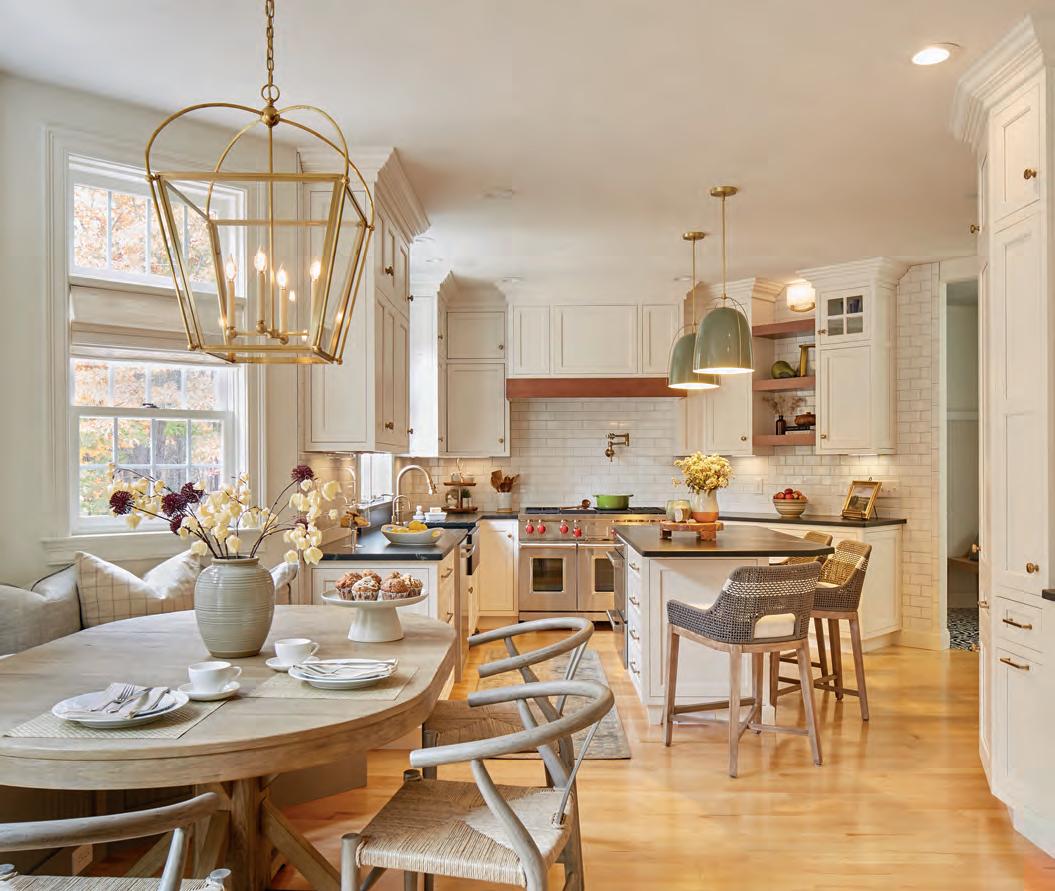

massive renovation that included changing walls, changing stairs and more, and that would have put us way over budget,” says Johnna. “Finally, we found Cathy.”
Cathy Stathopoulos of B&G Cabinet in Newburyport, Mass., is a certified kitchen and interior designer.
“It was a challenge,” says Stathopoulos, who was most concerned about the room’s difficult angles and lopsided layout of appliances. “I knew when I walked in that the only way I was going to make this work in the existing space without having to do major surgery would be to get the refrigerator out of that location and move it to the other wall.”
But what seemed a relatively easy solution became less so when she realized that a stairway behind that wall ate up
Top: Moving the refrigerator and adding white cabinetry opens up the space for better workflow and a more inviting kitchen. Above: The refrigerator is tucked into the bank of tall pantry cabinets to free up counter space.




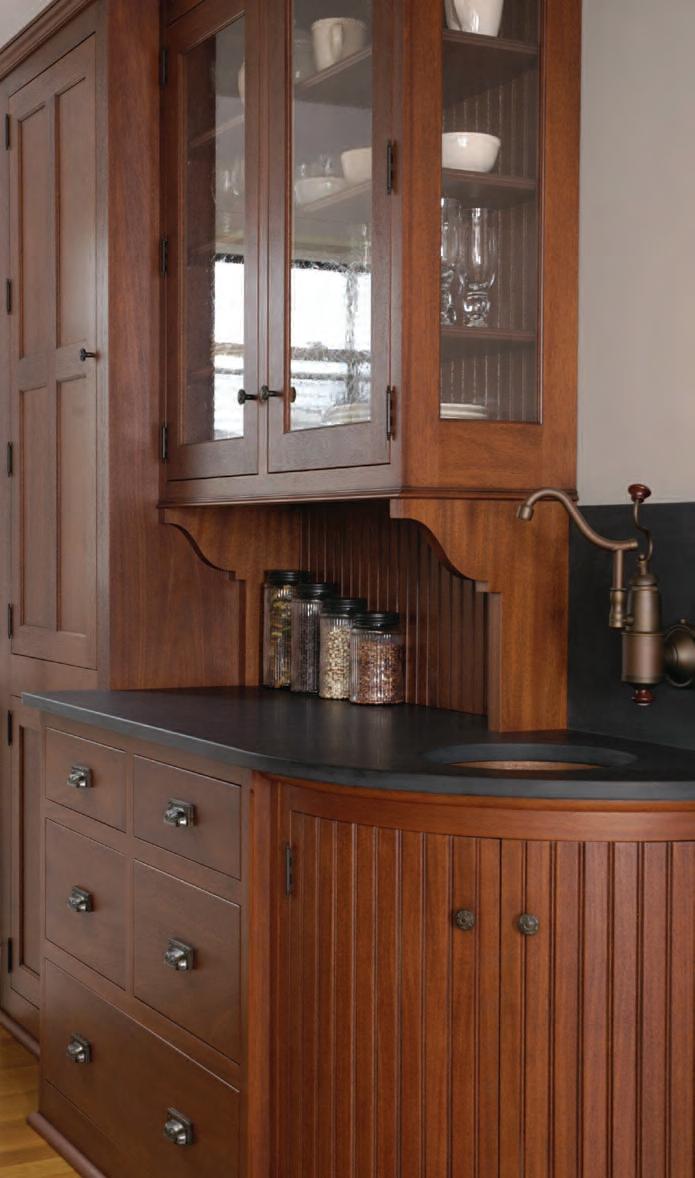
BY DESIGN
some of the depth she needed for the fridge. There was also a gas line going up to the master bedroom fireplace. The conundrum was how to find room for the refrigerator without moving the stairs and the gas line.
Then Stathopoulos had an aha moment. Simply moving the doorway over by a foot gave her the 12 inches she needed for the refrigerator. “That was the key to this project,” says the designer. “That one simple thing changed the whole landscape.”
Shawn Billings, owner of Credible Construction in Dover, was the builder on the project, which required that the kitchen be taken down to the studs. In addition to moving the gas line and taking care of the venting for all the appliances, he and his team moved a wall, got rid of the arched doorways and put in new tiles. “We did all the drywall and moved all the electrical and the plumbing,” he says.
Johnna Dourdoufis herself did 99 percent of the interior design, and her exquisite taste is evident in the simple elegance of the finished product.
“I knew I wanted to mix traditional elements with modern ones,” she says. For example, the standard subway tile backsplash and the traditional Cabico Shaker-style cabinets mingle with midcentury modern “wishbone” dining chairs from allmodern.com, also the source of the chairs around the island. “They’re a modern chair that has some traditional elements, too. I mixed and matched,” she says.
Johnna opted for Sub-Zero and Wolf appliances, and when it came to selecting the countertops, as a native New Englander, she felt there was only one choice: soapstone. The color is stormy black, and she found it at Jewett Farms + Co in Dover. “The piece for the island has a big striation through it,” she describes, adding that it resembles lightning striking. “It’s absolutely beautiful. It’s the showstopper.” As for the team at Jewett Farms + Co, she says “they were


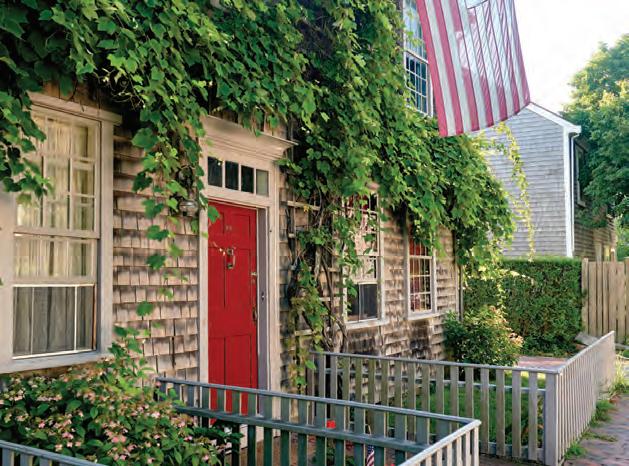


amazing, and the fabrication that was done is impeccable.”
The size and shape of the newly designed island creates a better workflow than before. To deal with the kitchen’s funky angles where two walls are wrapped around the main staircase, Stathopoulos placed cabinets there and brought them all up to the ceiling.
“Cathy didn’t try to fight the angles. She said we’re going to work with them and we’re going to incorporate them into the design,” shares Johnna. “And now the sections that she wrapped around the back of the staircase are beautiful.”
Given the especially detailed and challenging design, Stathopoulos knew that installer Mark Lyons of B&G Cabinet, who is renowned for the quality of his work, was the only man for the job.
“I have to give kudos to our installer. Mark is a cabinetmaker by trade, so he’s got those skills,” she says. “He’s a fussy person, and we needed that on this job. I insisted we have Mark do the install, and Johnna was thrilled with him.”
All the parties are overjoyed.
Says Stathopoulos, “I’ve been designing since 1986 and can’t count how many projects I’ve done, but this one
was definitely a ten. It was such a challenge, with so many details and complications that needed to be fixed and completed. Having it end up like it did was transformational.”
Johnna Dourdoufis says it’s her dream kitchen. “It’s not only a place of function, it’s an inviting space. Now it feels like home.” NHH
RESOURCES
B&G Cabinet • bgcabinet.com
Credible Construction • crediblekb.com
Jewett Farms + Co • jewettfarms.com
Sub-Zero and Wolf • subzero-wolf.com
This nook creates a dedicated space for a coffee/breakfast center.

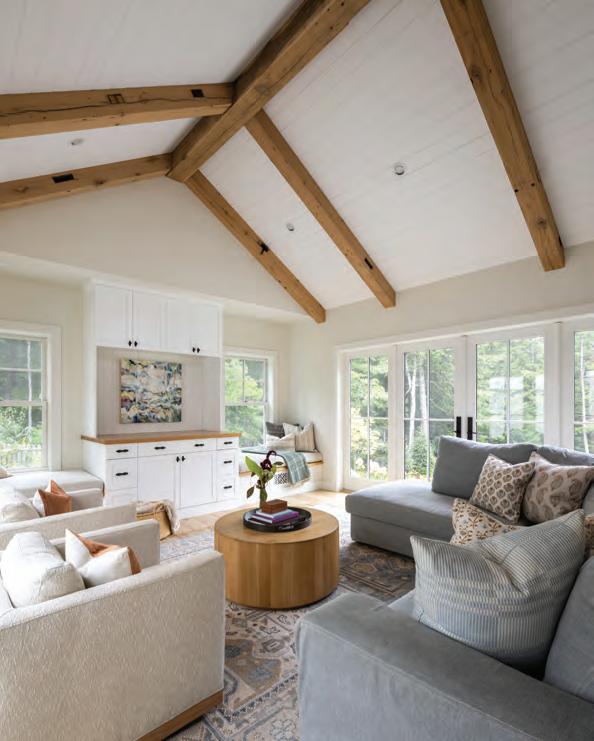
Fascinating Flora
Carnivorous plants make for clever fly catchers

Retired pathologist George Newman is a man with many interests. A passionate plantsman and photographer, he has hiked all the 4,000 footers in New Hampshire, and he has traveled to Quebec and Newfoundland admiring rare plants that grow in these harsh environments. Dedicated to the conservation and preservation of wetlands, he was a trustee of the Bedford Land Trust and belonged to the Piscataquog Land Conservancy. A long-standing member of the New Hampshire Orchid Society, native orchids are among his plant passions, and he also has a collection of tropical orchids in his greenhouse.
He has planted his 3.5-acre property in Bedford with many unusual native plants, some of which are thriving far north of their normal regions. The soil in one section has enough moisture to sustain bogloving plants including some of his favorite insect-eating, carnivorous plants.
Along with native northern pitcher plants (Sarracenia purpurea) that have been growing outside in his bog garden for 30 years, he also has tall yellow trumpet pitchers (S. flava) and the green pitcher plant (S. oreophila) whose normal ranges are from Alabama to the North Carolina border. These southern insecteaters happily survive outside year-round,
BY ROBIN SWEETSER | PHOTOGRAPHY BY JOHN W. HESSION
in the bog garden next to plants native to Canada and some that grow atop Mount Washington. “It certainly is a strange mix of plants,” he says.
Predatory Plants
We are used to bugs eating our plants, but what about plants that eat bugs? All carnivorous plants grow in either extremely acidic or overly alkaline boggy soils that provide the plants with no nutrients. To survive these conditions, they have evolved ways to feed themselves by trapping insects.
Growing up in the Bronx, Newman first encountered this unique group of
The Venus flytrap is probably the best known meat-eating plant thanks to Hollywood, but don’t worry, we have yet to find one big enough to catch a human.
plants at the New York Botanical Garden when he was 10 years old, and he began collecting them soon after. Now, he has one of the largest collections of carnivorous plants in New England composed of more than 30 species and hybrids. Some of his plants are over 50 years old. He has quite a few South American pitcher plants (Heliamphora) growing in his greenhouse, but his real love is the North American pitcher plant (Sarracenia). He has collected most of the species that are native to the United States, many of them rescued from construction sites and road projects. “I have some tall yellow pitchers (S. flava) that I collected in 1974 from areas that are now gone,” he says. Pitcher plants are most often found growing in boggy meadow openings in southern pine forests. “They really are fire dependent,” he says. “Fire kills off the trees, provides fertilizer and opens the bogs to sunlight.” He only collects responsibly from the wild with the permission of landowners, and many of his plants are hybrids he has propagated himself. “It takes about 5 to 10 years to get a nice-sized plant from seed,” he explains. Newman grows most of the southern natives in containers. They are dormant in winter, spending the cold months in his basement or in a cool part of the greenhouse. When the weather warms, they are brought outside for the summer where they attract and eat a multitude of small gnats, flies and mosquitoes. “Wasps, hornets and yellow jackets are their specialty,” he says.
Tricky Trappers
Each species of carnivorous plant has developed its own methods of entrapment. Pitcher plants are considered passive, pitfall trappers. Insects are lured into the funnel-shaped pitcher by sweetly scented nectar, and as they feed, they slide further down the neck of the plant and are unable to climb back out due to downward-facing hairs. Eventually, they fall into a pool of liquid at the bottom, drown and are digested by the plant. Sundews (Drosera) are another plant in Newman’s collection. They are considered
semi-active trappers, a kind of living flypaper. They lure their prey with sweet drops of sticky glue dangling on tentacles growing along their leaf edges. Once an insect is stuck, the tentacles wrap around to smother it, and it is slowly digested. Hardy in zones 3-8, the round-leaf sundew (D. rotundifolia) is a North American native found growing wild in many states including New Hampshire.
Butterworts (Pinguicula) are another sticky trapper that exude glue from tiny hairs all over their leaves, making them
appear shiny, like they have been oiled or buttered. After an unlucky insect has been caught, the leaf edges will roll over to cup it while it is digested. Newman has five species of butterworts, all native to the southeast United States.
No carnivorous plant collection is complete without some Venus flytraps (Dionaea muscipula), and Newman has quite a few. They are considered active snap traps. Unlike the blood-thirsty man-eater in “Little Shop of Horrors,” these ground-hugging plants are quite

Dr. George Newman of Bedford has an extensive collection of carnivorous plants including hundreds of tall pitcher plants, many of which he has grown from seed.
GARDEN R x
small—only a few inches across with pairs of one-inch-long, hinged leaves. Sweet nectar lures in an insect where it brushes against the trigger hairs. Nothing happens after the first touch, but the trap snaps shut the second time the hairs are touched. Fine teeth along the edge of the leaves keep the victim locked in place. As the captured bug struggles, the trap closes tighter. The plant then exudes a digestive enzyme to dissolve its victim, so it can absorb its nutrients. After successfully sucking up three or four bugs, the leaves will die off and new traps will grow.
Native to a small region in North Carolina, they are considered endangered and should never be collected from the wild. “There is no reason to do that since they are easily grown from seed or tissue culture,” Newman says. The Venus flytrap is a great introduction to the captivating
world of carnivorous plants. They are widely available at garden centers around the holidays. “As long as you do your homework and know what the plants need to survive, you should be successful,” he says.
From Bog to Book
When Daniel DiPietro was a student at Dartmouth College, he worked in the Life Sciences greenhouse caring for the carnivorous plant collection. It was an interest that started long before college. Like Newman, as a child he also was a frequent visitor to a botanical garden near his home which instilled an early love of plants and nature. “I didn’t start growing carnivorous plants specifically until my sophomore year of high school. I was introduced to them by my friend Alvin Liu, who had been collecting carnivorous
plants since he was around seven years old. He gave me a small Cape sundew (Drosera capensis) to care for and the rest is history!” DiPietro says. Though he has added other plants to his collection, sundews are still a favorite. “I think sundews are among the most beautiful plants anywhere. I love how delicate they look and the way their dew shimmers and reflects the light,” he says. “To the untrained eye, all sundews look very similar. However, they’re actually an incredibly diverse group of plants. They come in all shapes, sizes, colors, patterns and environments, and they’re found on every continent except Antarctica.” He also finds their ability to move fascinating. “Some longerleaved species, like Drosera regia and Drosera spiralis, can practically tie knots around captured insects over the course of a few hours,” he explains.

The Cape sundew was Dartmouth grad Daniel DiPietro’s introduction to carnivorous plants. He has since co-authored a book about them.

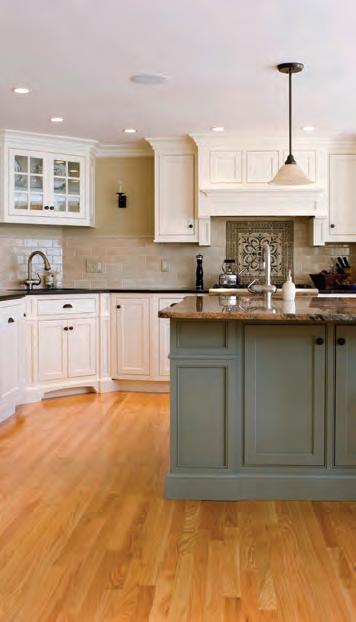



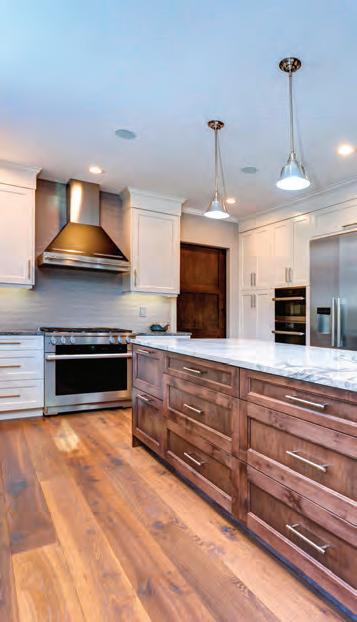
Start Your Own Carnivorous Journey
Here are a few tips from Newman and DiPietro:
• Know if your plants are temperate or tropical. Do your research and learn what environments your plants evolved for, then emulate them. If you do this, you can never go wrong.
• Only use pure water—preferably distilled water, rain water or water from a reverse osmosis filter, since minerals and chemicals in tap or well water can kill the plants.
• Provide plenty of light, either full sun or grow lights.
• A dormant period. Most northern carnivorous plants, include Venus flytraps, need to rest in a cool place from late fall to early spring. Tropicals do not need a rest period.
• Constant moisture but not submerged. Even during the winter dormant period, they should be kept in a shallow dish of water. Never let them dry out.
• Proper potting mix. Newman prefers a mix of live or dried sphagnum moss, sphagnum peat and pool filter sand.
• Remove flowers after blossoming, unless you want to keep the seeds.
• Never feed the plants bits of raw meat! They would rather have insects.
The New England Carnivorous Plant Society hosts a show and sale every October at the New England Botanic Gardens at Tower Hill in Boylston, Massachusetts. Mark your calendars for next fall!
Glistening drops mimicking nectar entice insects onto the sundew’s sticky tentacles, which then enfold, smother and digest them.

At first, DiPietro grew all of his carnivorous plants in tanks with artificial lighting, but now he has a huge collection of tropical carnivorous plants that he grows in his 10-by-20-foot greenhouse. “I used to have a small collection of outdoor pitcher plants, sundews and flytraps, but
the winter dormancy was troublesome since my house was on the New Jersey shore and it would regularly receive very strong wind gusts. During dormancy, wind can be far more deadly than extreme cold,” he says. “After experiencing losses each season, I decided to give my
remaining outdoor plants to Alvin. He has a great outdoor collection with hundreds of Sarracenia, and lots of flytraps and sundews, too.”
DiPietro’s interest in carnivorous plants is so strong that by the time he was 20, he and his friend Liu co-authored a book about them called “Drosera of the New Jersey Pinelands, USA.”
“Alvin and I had heard about large carnivorous plant populations in Southern New Jersey, an ecological hot spot for them. The summer after we graduated high school, we went on a field trip to Colliers Mills Wildlife Management Area in Jackson Township.” They enjoyed that trip so much that they began visiting other documented sites. “Later on, we started using Google satellite maps to explore undocumented bogs and wetlands,” he says. “At some point, we realized that we were accruing a lot of unique knowledge and habitat and ecosystem insights that nobody had thought to document, so we decided to write a book doing so.” Even though Liu is currently in medical school, they have discussed writing another book in a few years. In the meantime, both regularly post photos on Instagram under @alusplants and @plantsofdan and they have a website www.carnivorousjourney.com which is full of information.
Whether you are eight or 80, these fascinating plants are fun for all ages. To see them in the flesh, you needn’t tramp through a bog, just plan a visit to Dartmouth College in Hanover. They have about 30 species of carnivorous plants in the tropical section of the Life Sciences greenhouse. It is open to the public Tuesday, Wednesday and Friday from 11:00 a.m. to 3:00 p.m. Be sure to bring the kids. As was the case with Newman and DiPietro, it may start them on a plant-loving path. NHH
RESOURCES
Dartmouth College Life Sciences Greenhouse dartmouth.edu/greenhouse
International Carnivorous Plant Society carnivorousplants.org
New England Carnivorous Plant Society necps.us


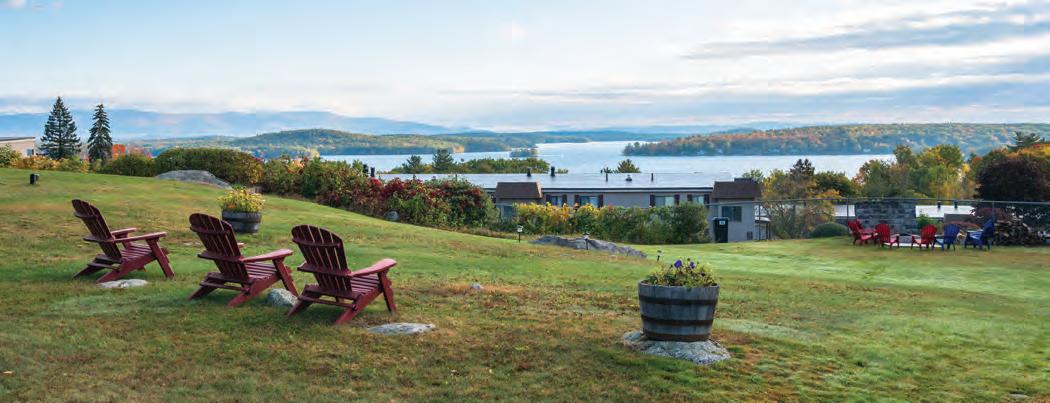

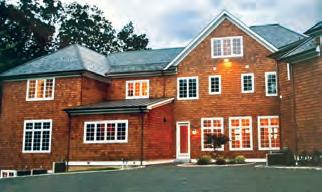
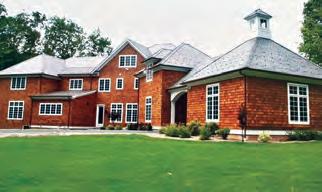
thi s Old Hou s e in A NDOVE R
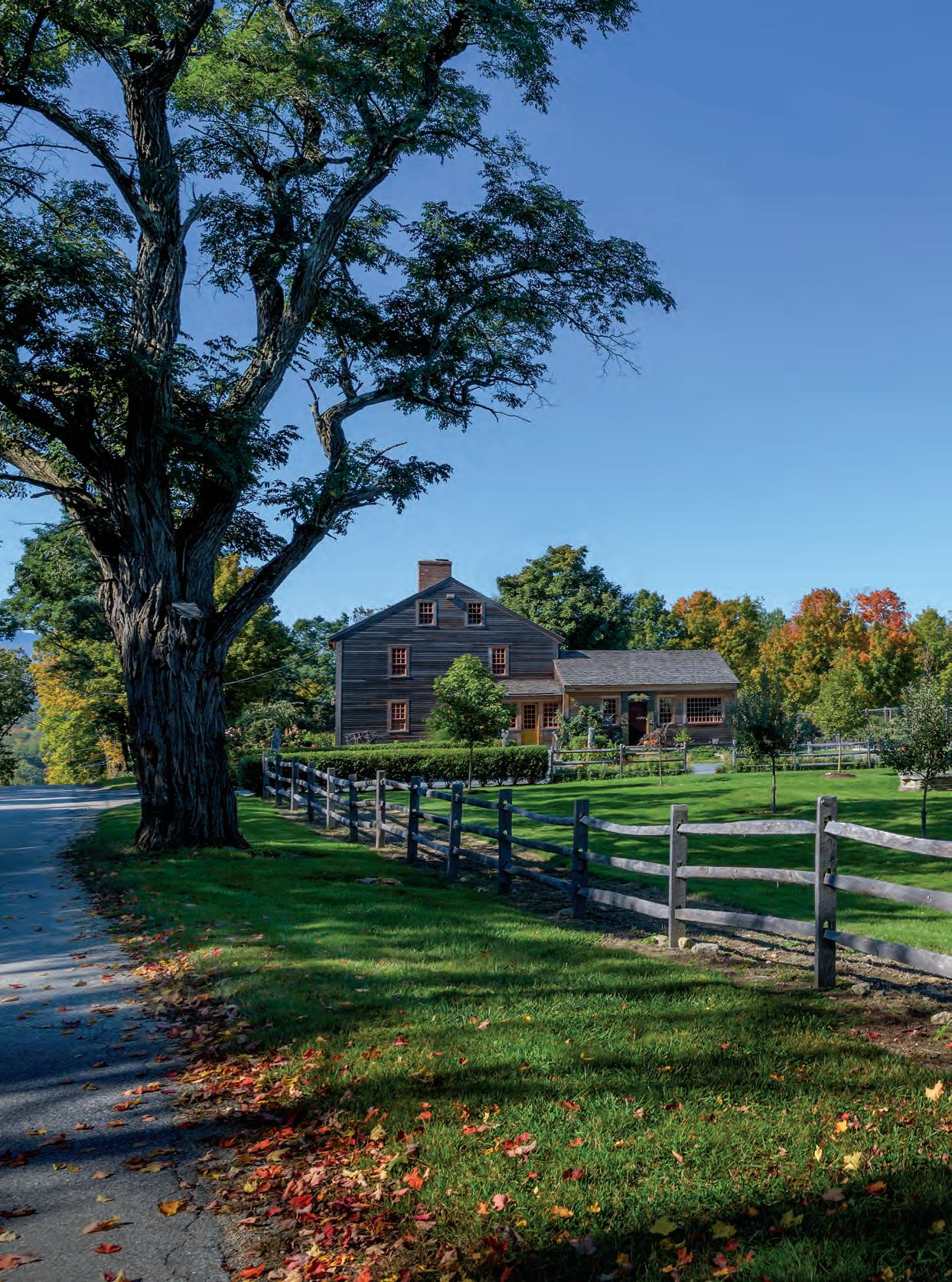
An 18th-century farmhouse brings together period charm and carefully collected antiques.
BY BRION O'CONNOR | PHOTOGRAPHY BY JOHN W. HESSION
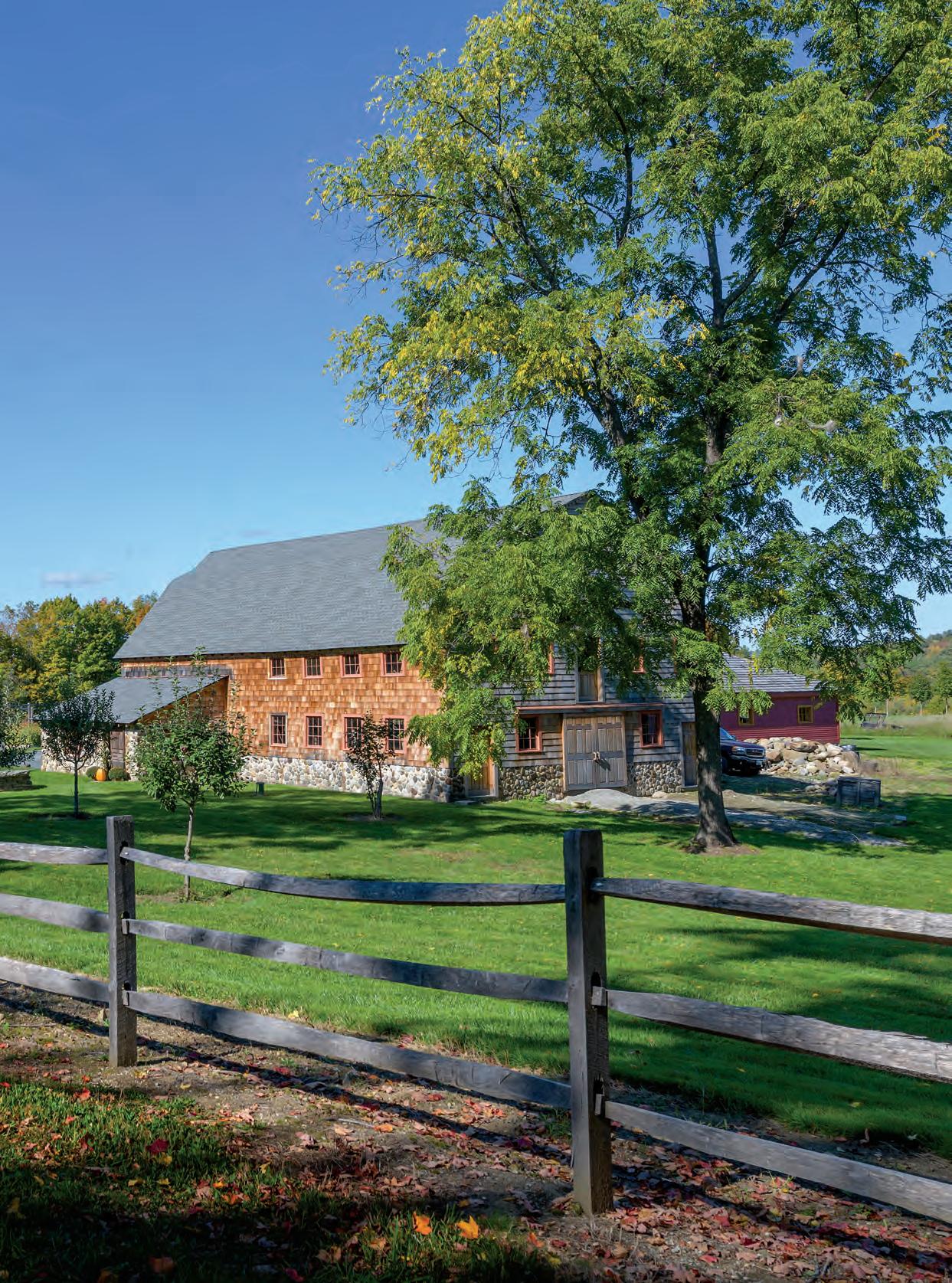

WE ALL HAVE STORIES, PERSONAL HISTORIES. The same can hold true for relationships and inanimate objects like antique furnishings, lamps, dining sets and paintings. Even homes. Just ask Dr. Joseph Spychalski.
Spychalski today lives in a spectacular 225-yearold farmhouse in Andover, lovingly restored over seven years with his husband, Dr. Joe Chittkusol. But Spychalski’s road to Andover, and the one-ofa-kind 18th-century Americana antique collection that fills their farmhouse, is a long and intriguing one, a journey filled with numerous twists and turns. That road reveals a fascinating history.
“I do think that many collectors of Early American furniture, or those living in period homes, enjoy moments of feeling like we are living back in time,” says Spychalski. “When you buy an old home, or an old piece of furniture, it’s difficult to say you own it. Rather, it owns you. You’re but another individual in a long history of that chair's or home's existence. We become mere stewards of its existence.”
A native of Cheektowaga, near Buffalo in western New York, Spychalski grew up “in a modern mid20th-century home. New furniture, flat floors, straight walls, doors that closed and stairs without squeaks.”

The circa 1790 farmhouse on 229 acres in Andover was renovated to be both a space to live in and one to display antique treasures. The barn is circa 1950.
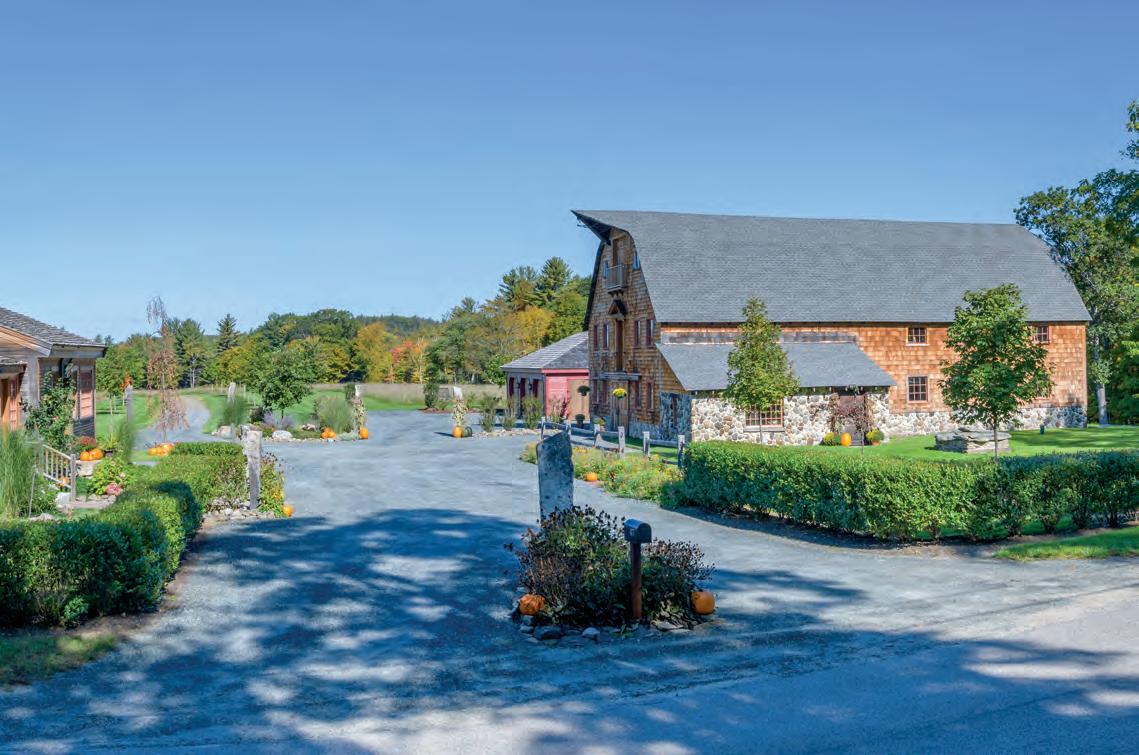


Left: The homeowners’ dogs, Jumpin' Jack and Jillian, mousing in the pumpkin patch.
Above: A window box with flowers and plants reflects the beauty of the surrounding landscape.

In the kitchen, the gilt whale was the weathervane on the homeowners' Nantucket house for 27 years, and the Nantucket baskets were made by Dr. Spychalski's parents.
Top right: Dr. Joseph Spychalski, left, and Dr. Joe Chittkusol love filling their home with flowers from the gardens and serving peach cobbler fresh from the oven.
Bottom right: Exposed brick, stone, copper and weathered beams come together effortlessly in the "dream" kitchen Spychalski says he's been designing since he was 8 years old.
“I remember experiencing a sense of intrigue when I entered into the world of an old home, a really old home, an 18th-century home, 225 years plus,” he says. “There was a sense of presence, of people before me having shared the same space.”
After becoming a general physician, Spychalski, now 59, returned to school for cosmetic dermatology. He bought a new home on Nantucket in 1993, and he began dividing his time and practice between Orchard Park and the island. Nantucket’s older homes piqued Spychalski’s interest in antiques. An ad in “Maine Antique Digest” for a Queen Anne highboy led to a fortuitous 1995 meeting with George Spiecker, an antiques dealer based in North Hampton, NH, who specializes in early American furniture, weathervanes and nautical paintings and accessories.
“Dr. Joe was a sponge. The more we talked, the more questions he had,” says Spiecker, adding that the two men and their families have become close friends. “His passion and desire to be part of his collection was contagious.”
A collection takes shape
Bitten by the antiquing bug, Spychalski began filling his Nantucket house with period pieces. He spent countless hours with Spiecker, attending auctions from New York City to small country barns, developing his eye for classic antique traits such as surface, originality and proportion. Eventually, Spychalski decided to recreate a Colonialera living room in his Nantucket home, providing an older feel to better match his ever-expanding collection of antiques.
“I have this beautiful home on the island. The inside is bright and white and as clean as you can imagine, with that beachy, summery look,” he says. “I was falling in love with (antique) furniture, so I got the idea to make something new look old. Just the opposite of what people usually do.”
A mutual friend introduced Spychalski to Wayne Gauthier, a contractor based in Concord, NH, known for his work with Colonial-era homes, in 2008. Though he originally built new homes, Gauthier quickly gravitated to historic structures.
Above:
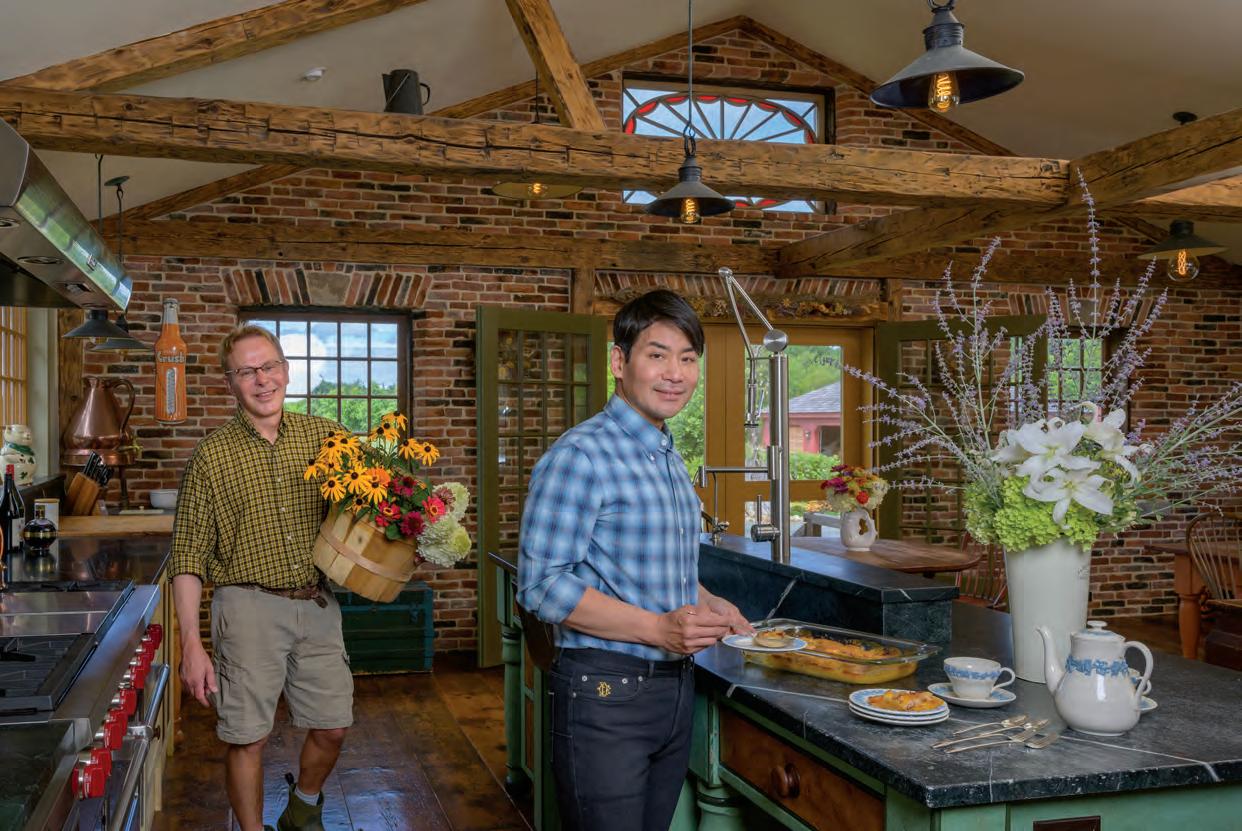
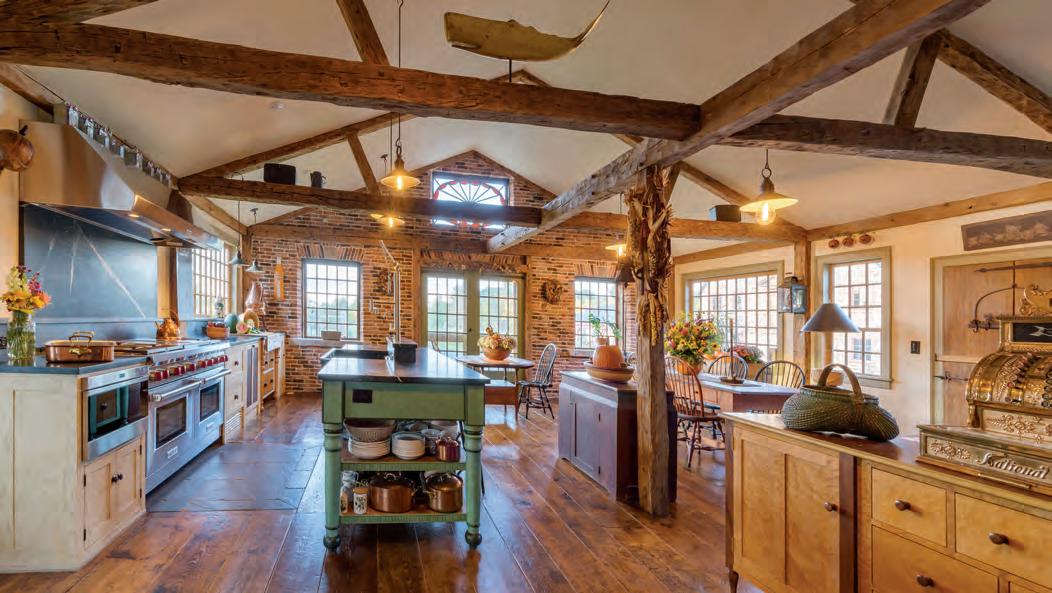
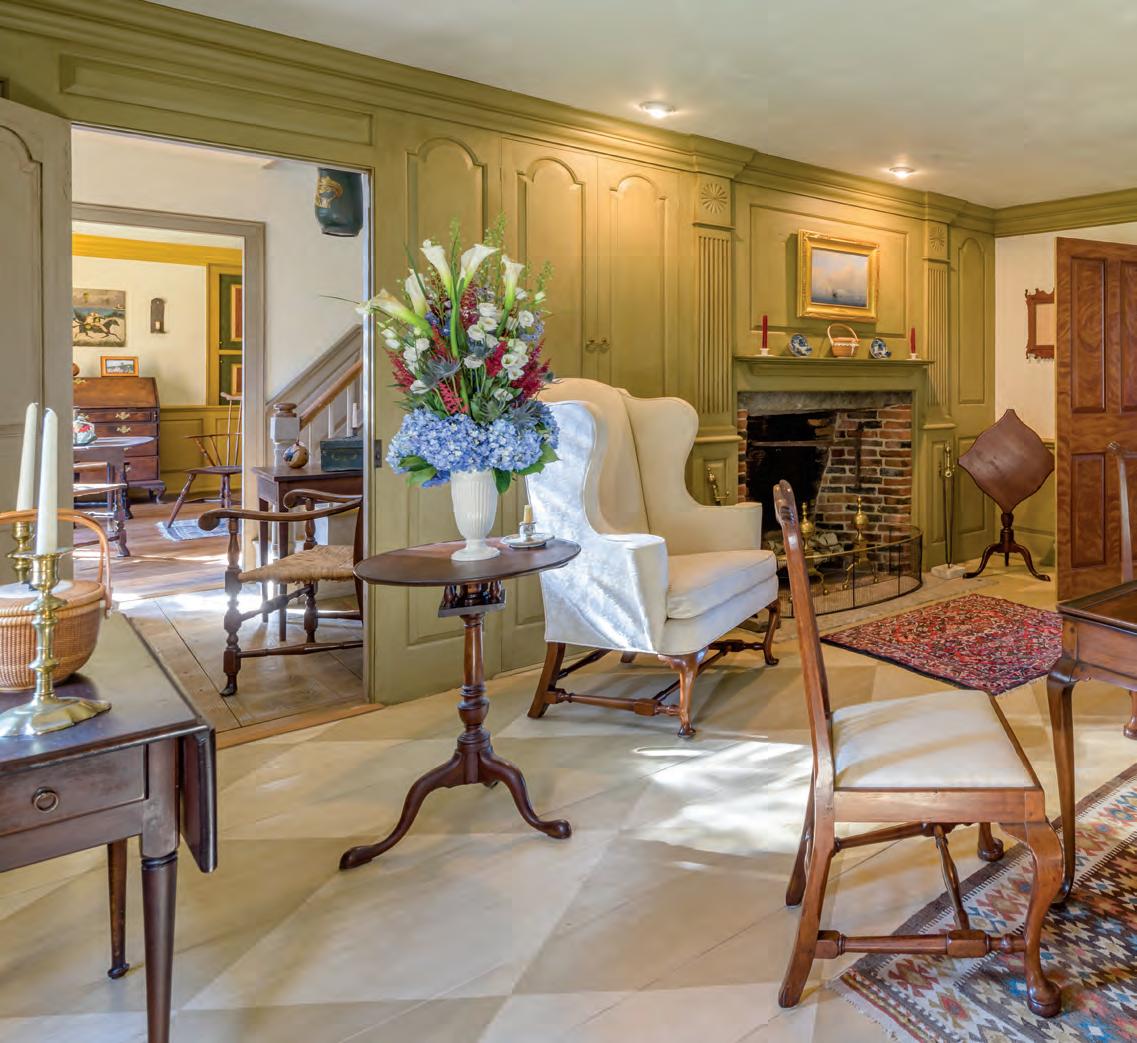
“I just find them interesting,” he says. “Colonial houses, there’s something new to figure out with everything you do on them. They’re not level and they’re not square, everything is a challenge. I love that.”
Spychalski’s initial plan was to renovate only the Nantucket living room, but he was so enamored with Gauthier’s work that he asked him to do the kitchen and then other rooms, including the bedrooms. Gauthier spent 18 months at the Nantucket home, completely converting the interior “to look like an authentic 18th-century home,” Spychalski says. “I could not have been happier.”
Meanwhile, Spychalski had met the man who would become his husband. The couple bought a condominium in Boston. They would spend weekdays in the city, where Spychalski practiced urgent care, and then escape on weekends to the island
where he had a cosmetic dermatology practice. However, Spychalski admits that despite Gauthier’s superb work, the Nantucket home was still the architectural equivalent of a square peg in a round hole, with the home’s exterior clashing with the interior’s Colonial vibe. The same was true for the couple’s relationship with Nantucket.
“As lovely and charming as the place is, it’s changing. It’s becoming much more congested,” says Spychalski. “It just wasn’t our scene the way it used to be. We were talking about someday maybe selling off the island property and moving someplace that was a little quieter.”
That’s when Spychalski’s relationship with Gauthier proved serendipitous. There was a dilapidated old farmhouse in Andover, NH, that Gauthier was hired to demolish. Those “teardowns” are an essential part of Gauthier’s work, providing the
Above and top right:
The formal parlor in Colonial days, today the room holds a collection of 18th-century American antique furniture. The corner cupboard is a re-creation of an antique piece using 250-year-old, repurposed pine and chestnut boards. Painter Kathleen Hill created the faux marbling of the shell.
Bottom right: Knut Ingemundsen, a New Hampshire native, managed all stone and brick restoration.
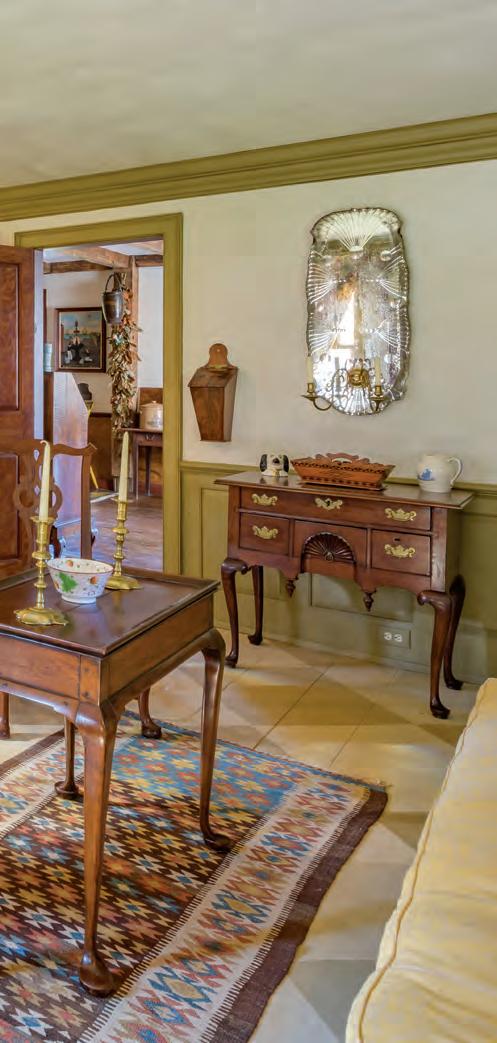
raw materials—old wooden planks and stone and bricks—he needs to renovate other homes.
But Gauthier had other ideas for the Andover house. He knew of Spychalski’s childhood dreams of owning an old home, with plenty of acreage and maybe a barn. Gauthier called Spychalski in the fall of 2010.
“I had developed this desire to bring an 18thcentury home back to life,” says Spychalski. “All of a sudden, there’s this rundown property in New Hampshire where I just saw all these bucket list-like dreams in this one package deal.”
Eye-opening first impressions
Spychalski vividly remembers the moment he stepped foot on the driveway of the property.
The house was in serious disrepair. The previous owners—the Andrus family—were dairy farmers.

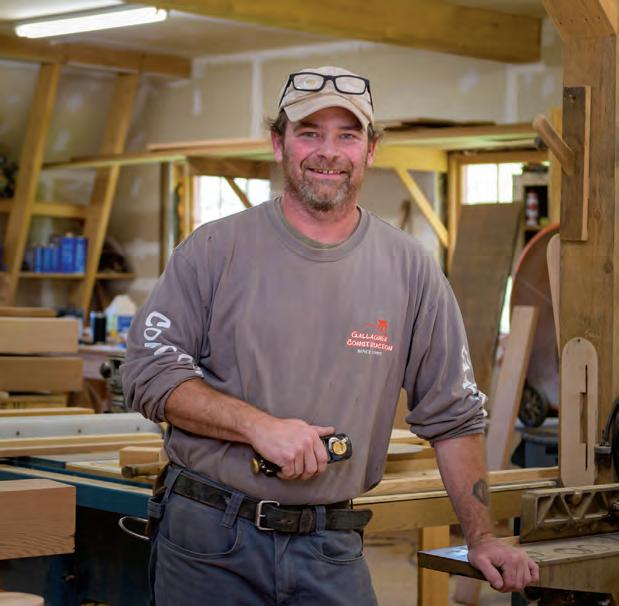
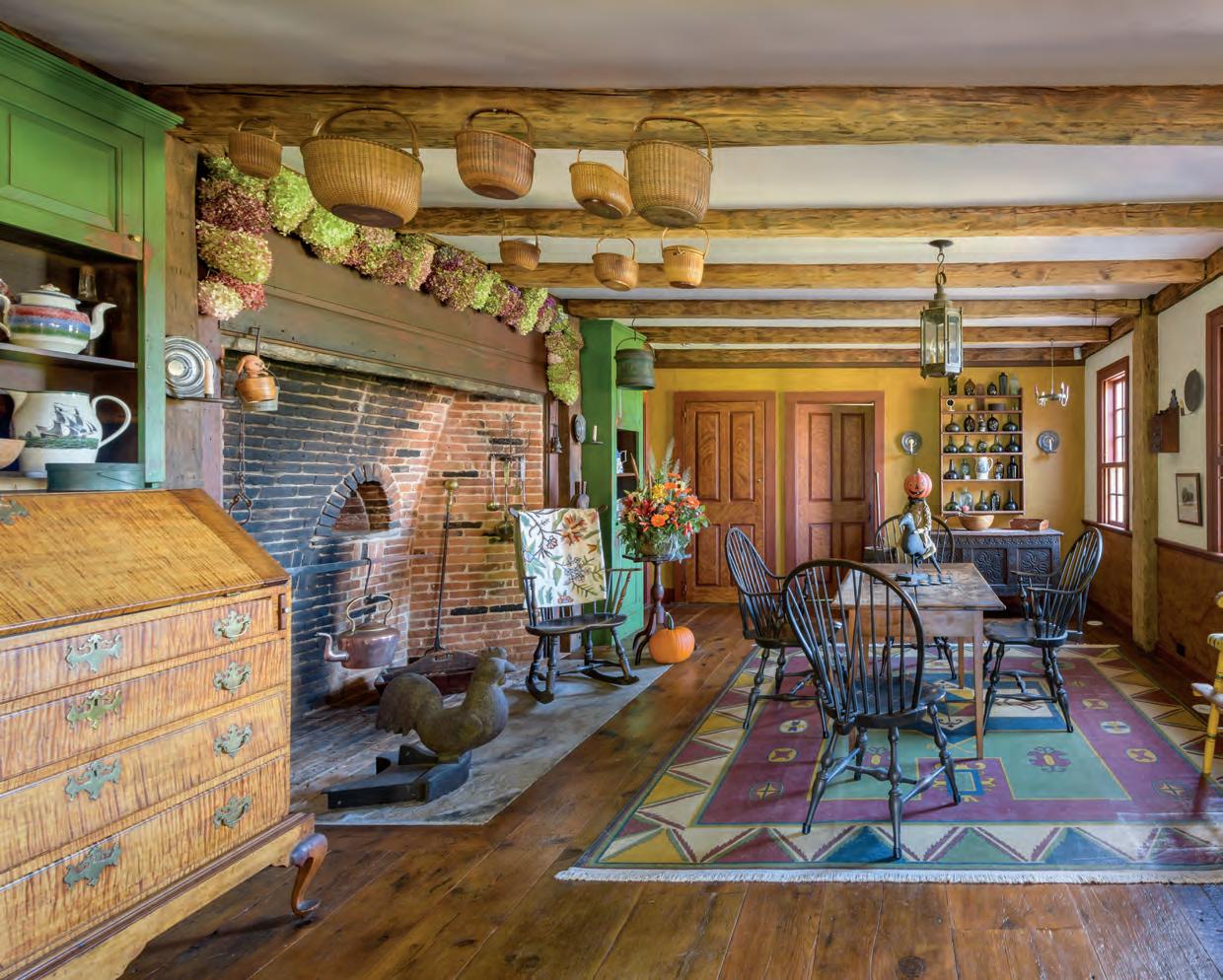
Florence Andrus, a widow, had moved to an assisted living facility, and her home was left uninhabited for roughly a decade. Mother Nature began exerting her inexorable influence. The vegetation was overgrown, and local critters overstayed their welcome, making the home and barn their own.
“Most passersby probably saw a teardown, a home and barn abandoned, glory days long past,” he says. “My heart started to pound and my mind began to race. I easily saw through the tall scrub brush, the home's warped clapboards, remnants of paint, broken windows, unhinged door, sunken granite stairs, cracking chimney and several chipmunks peeking out of holes chewed through the trim boards along the roofline. I marveled at the gambrel form of the barn's roofline. How long could that barn continue to stand?
“At the time, it didn't matter,” says Spychalski. “Visions of what this farm could be were piling up one on top of another, probably clouding
any sense of good judgment I had.”
The interior was filled with cobwebs, dust, mildew and the remnants of the last occupants.
For Spychalski, the scene erased the decades, bringing him back to his formative years.
“I grew up in the suburbs, but for some reason I had a fascination with barns, tractors, silos and wide-open fields,” he says. “And I thought that perhaps someday I could find myself a few acres, a barn and buy myself a tractor.”
Spychalski’s vision, however, wasn’t the same as his husband’s. Joe Chittkusol “spent his whole life growing up in the city,” says Spychalski. It was a scenario reminiscent of the 1960s sitcom “Green Acres,” with Eva Gabor and Eddie Albert, about a Manhattan lawyer buying a farm and coercing his city-loving wife to join him.
“When I first brought him here, he was not impressed at all,” says Spychalski. “But you have to understand Joe. He grew up in Bangkok,
Above: The Keeping Room, once the center of daily living in Colonial times, now serves as a relaxing location for an informal dinner, game of cards or simply relaxing with the dogs by the fire. The tiger maple Queen Anne desk is from the 18th century.
Top right: An antique shelf of onion bottles and New Hampshire flask bottles is arranged above a 17thcentury Pilgrim chest.
Bottom right: A covered porch greets visitors and leads them into the comforts of the Keeping Room.
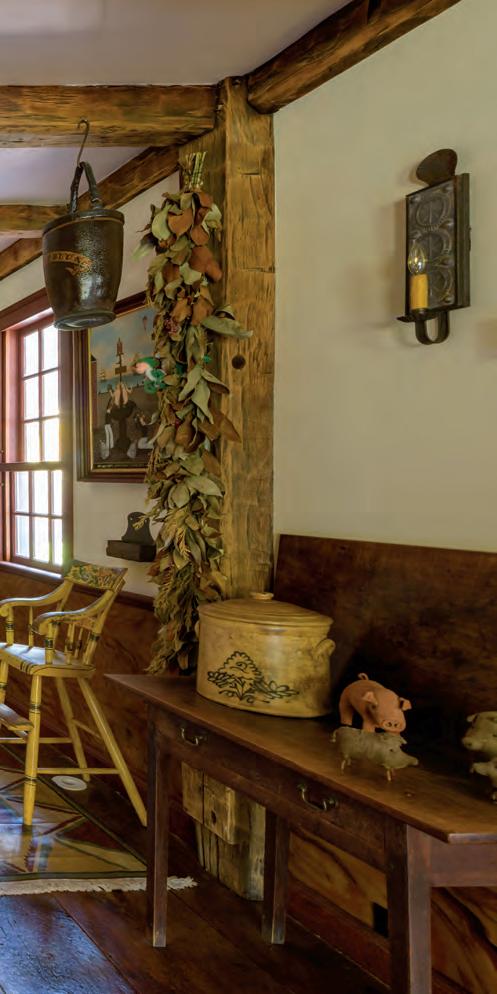
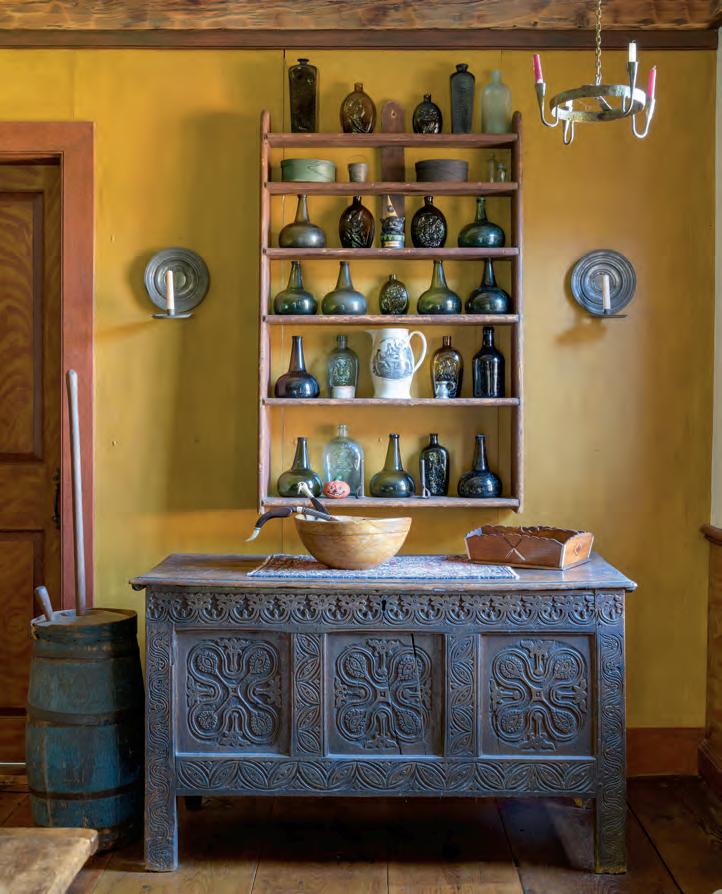
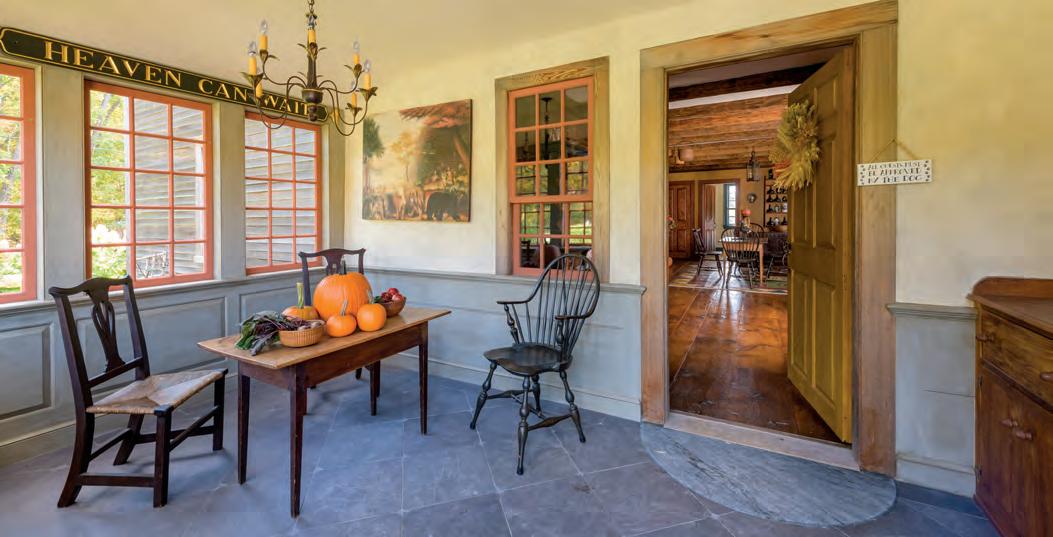
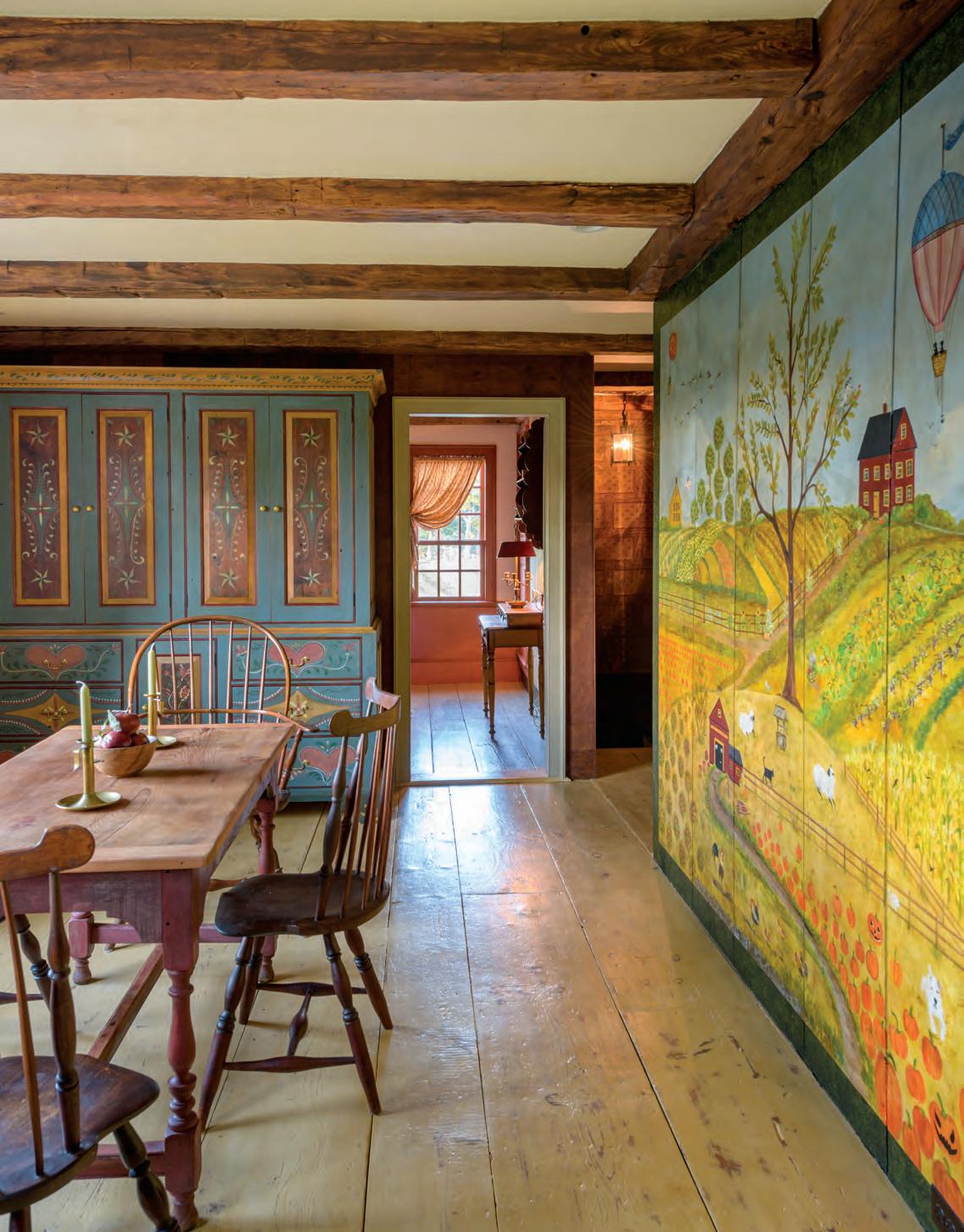
A second-floor reading room offers views into a bedroom and back stairwell, which retains a Civil War-era wallpaper. The contemporary wall mural was created by Kathleen Hill.
a big, bustling city, and then he spent his young adult life in Boston. He also comes from a very prominent Thai family, so he grew up with tremendous comfort and convenience. Now, all of a sudden, he’s out in the New Hampshire countryside with a rundown house that’s kind of eerie and creepy inside.”
Despite his reservations, Chittkusol supported his husband’s dream and that was all the encouragement Spychalski needed. “So I went for it,” he says. “And he did enjoy the last years of the renovation, when a layman’s eyes could see what was transpiring. He actually warmed up to it.”
It would take years for that moment of enlightenment to occur. Spychalski, understanding the investment required, realized the work would need to be done piecemeal. Gauthier was agreeable to that arrangement. The 71-year-old knew the project would likely take years, but he was willing to be flexible in order to create something special.
“I was able to put everything I learned my whole life into that house. All aspects of it,” says Gauthier. “Joe gave me carte blanche. We would sit down and discuss it, but basically, he just followed my lead with a lot of it and just let me go.”
For Spychalski, the seven years spent working together with Gauthier was a reflection of a relationship “built on trust and a mutual respect for each other’s skills, ideas and passions.”
“We started in July 2011, by getting these big steel dumpsters and pulling out all the windows,” he says. “Wayne brought in some guys and just cleaned out the whole house.
“There was no estimate, no building contract,” says Spychalski. “Every meeting ended with a shake of hands. It all seemed like an old-world Yankee way of doing things. It all seemed to fit into the period this home was built, a time when doing things was a little simpler.”
There were no architectural blueprints, no laptops detailing intricate plans of the final product. Concepts were sketched on a wooden plank, a scrap of paper, or Gauthier’s old, black-and-white composition pads. In retrospect, Spychalski says, the arrangement was “quite comical.”
Assembling a top-notch crew
Gauthier brought in several skilled craftsmen, including carpenter Jim Heslop, mason Knut Indemundsen and painter Kathleen Hill. The crew, like Gauthier, worked on Spychalski’s schedule, which meant they’d contribute to the Andover house as his budget allowed, and pursue other projects during interruptions.
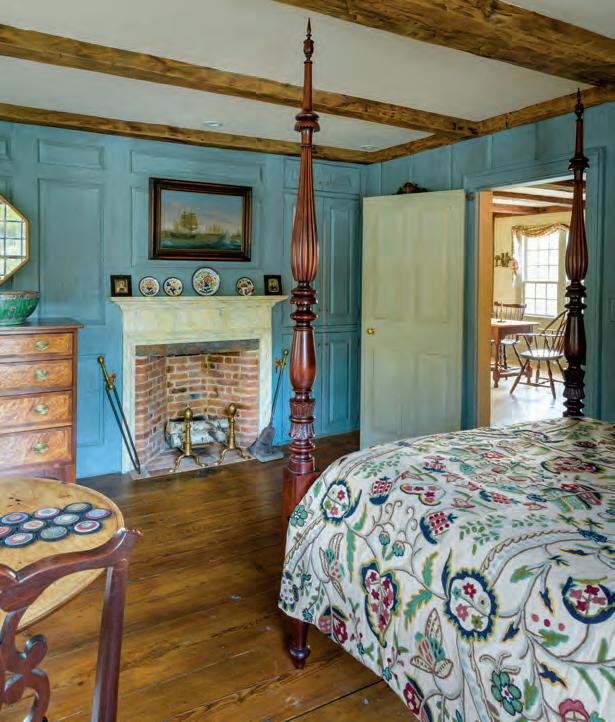

Top: The primary bedroom features a faux marble fireplace facade restored by Kathleen Hill. Antique Gaudy Dutch plates rest atop the mantel.
Above: General contractor and custom carpenter Wayne Gauthier, left, enjoys a relaxing moment with Dr. Joseph Spychalski.
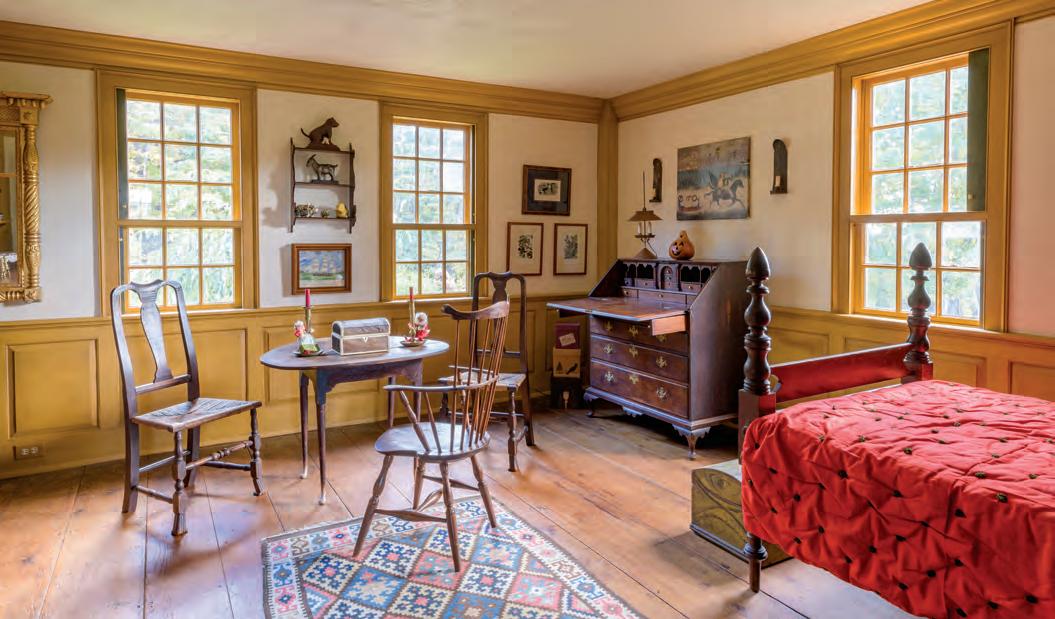
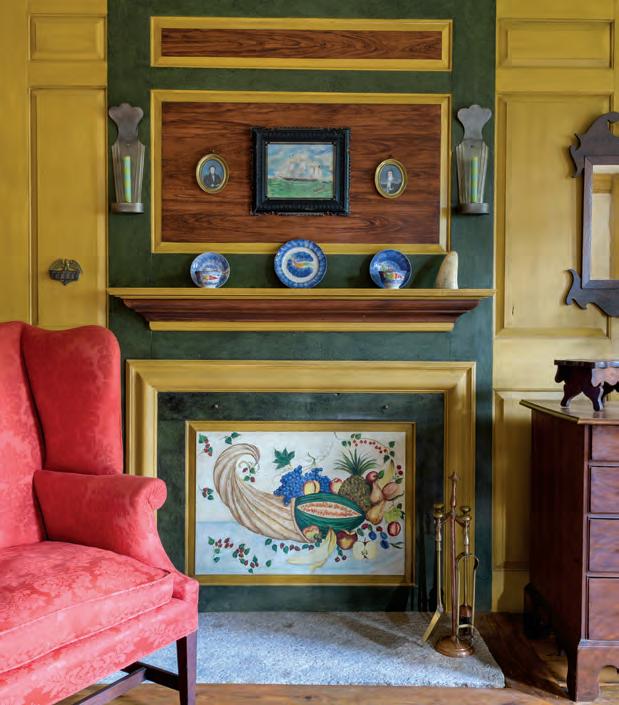
“Renovating an old home is never easy,” Spychalski says. “Everything is imperfect. For me, the charm of an old home falls within its imperfections.
“To renovate and make a room look too straight, too perfect, ruins the character that lends itself to creating that special ambience,” he says. “Wayne and Jim were masters. They understood they needed to make a home safe and functional, but maintain just the right degree of imperfection.”
Gauthier’s crew renovated the home from the ground up. “The key to what I do is, when you walk away, you should never know that I was even there,” says Gauthier. “We stripped Joe’s house right down to the frame, and rebuilt the frame. Everything in it looks like it was always there. But we created everything.”
The renovation, completed in 2018, reflects Gauthier’s belief that there is more at play than simply craftsmanship in a Colonial home. “This is not carpentry. It’s art,” he says. “To work with these materials and to make them fit. When you walk in the home, it’s got to feel warm, and it’s got to feel like it was always there. It’s taken me 50 years to learn how to do that.
“To me, it’s more of a piece of art than a house,” Gauthier says. “Each one of these houses has its own character. And it tells me a story as I’m building it.”
For Spychalski, the renovation “has been one
Top: In the first-floor guest bedroom, the 18th-century New Hampshire Queen Anne tea table is one of the owner's favorite antique pieces.
Above: The grain-painted fireplace facade was a common 19th-century design used to make pine resemble the more exotic woods often seen adorning affluent Colonial homes.
of my greatest life adventures. Even today, I never miss the opportunity to appreciate the privilege I’ve been given to live in such a special space.”
Every room in the house, he says, “holds endless memorable stories,” whether the tale is inspired by a particular antique, or a “moment working with the artisans who brought a rebirth to this lovely home.”
“It was my intention to guide a renovation that can add another 225 years to this home's history,” he says. “It’s impossible to know the stories this home has witnessed over the past two centuries. There’s an emotion that an old home creates that I have never experienced in a modern home. A ‘presence’ that’s hard to describe or define.”
It does, however, reveal Spychalski’s conviction that homes, especially homes with history, have more than just stories to tell; they have a soul. Spychalski’s antiquing mentor agrees.
“Joe bought a house that would fit his collection,” says Spiecker. “You literally have to find a place. Did the Nantucket house fit (the collection)? Nope. What Joe’s collection was really crying for was an old 18th-century center Colonial with the big chimneys. Just what he has now.”
The house, while true to its Colonial roots, is also an extension of Spychalski’s playful nature. While many antique collections can make a house feel like a museum, the Andover house, with its mix of traditional 18th-century pieces, contemporary paintings (including several Ralph Cahoon paintings of mermaids), weathervanes and several well-placed whimsical items, is anything but stodgy.
“What he’s created there is an awfully comfortable place to live,” says Spiecker. “It’s the building, it’s a garden. It’s all the things he’s poured into it, that’s the beauty of it. He brought it all to life.”
Spychalski was a stickler for authenticity. He insisted that Gauthier use rosehead nails whenever possible. Original wooden beams and planks and granite slabs were preserved. Recovered handmade bricks from the fireplaces, some featuring footprints of raccoons and turkeys, were repurposed in the home’s stunning kitchen.
“There is no modern functioning kitchen that can be of true 18th-century design. I felt confident, however, that we could create an environment that would blend the features of Colonial living with a modern-day lifestyle,” says Spychalski. “I wanted a kitchen that blended seamlessly into the footprint of the original period structure, but flowed into the landscape, showcasing the pastures and gardens.”
The finished product provided the perfect setting for Spychalski’s eclectic antique collection. He acknowledges a keen sense of accomplishment “when a finely restored period home, restored in a manner to preserve its original integrity, is complemented by furnishings that would have been true to its original character.”
Much to Spychalski’s relief, his husband also feels at home in Andover, successfully making the transition from “lifelong city boy to a country boy.”
“Joe fell in love with the countryside. I was always a gardener, and he started dabbling in gardening,” says Spychalski. “Now Joe loves to walk to the pasture with the dogs (a pair of Jack Russell terriers). He always calls it a sort of Zen experience, working the garden, smelling the dirt, hearing the birds.”
Most importantly, the two men continue to write their own history—a history now shared with an amazing collection of antiques and a warm, inviting old home in Andover. NHH

RESOURCES
George Spiecker • Member of Antique Dealers Association of American ADADealers.com
Heritage Metalworks hmwpa.com • (610) 518-3999
J.A. Garneau Companies (603) 934-2270
The homeowner would also like to thank:
Wayne Gauthier • general contractor, custom carpentry
Jim Heslop • cabinet maker, custom carpentry Knut Indemundsen • masonry and stone, custom carpentry
Kathleen Hill • decorative painter and paint restoration
A carved gilt eagle keeps watch over the garden at the side entrance to the kitchen.
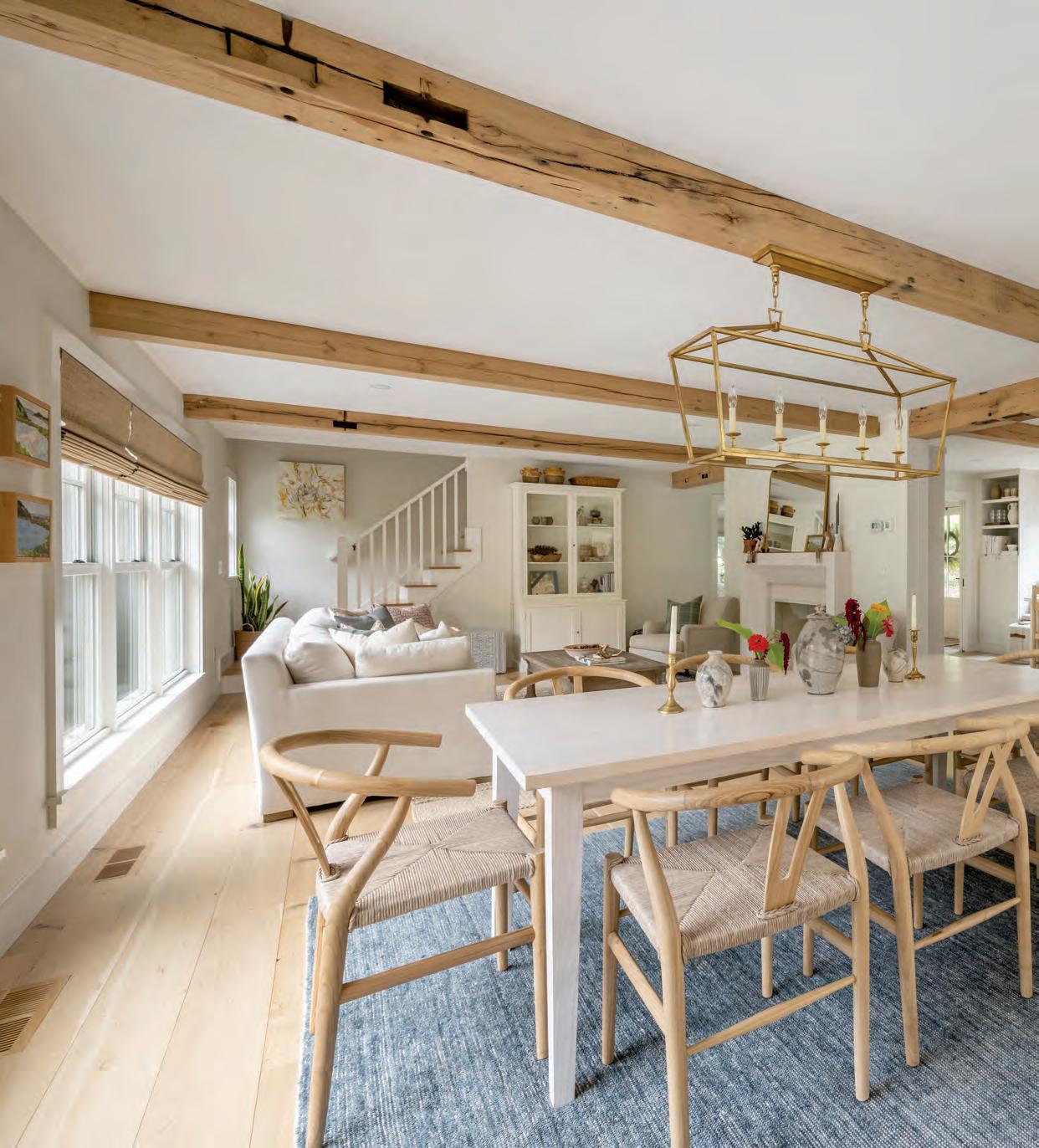
New windows allow sunlight to flood the open-concept living spaces that were previously dark and dated. The new white oak beams and floor also brighten up the home.
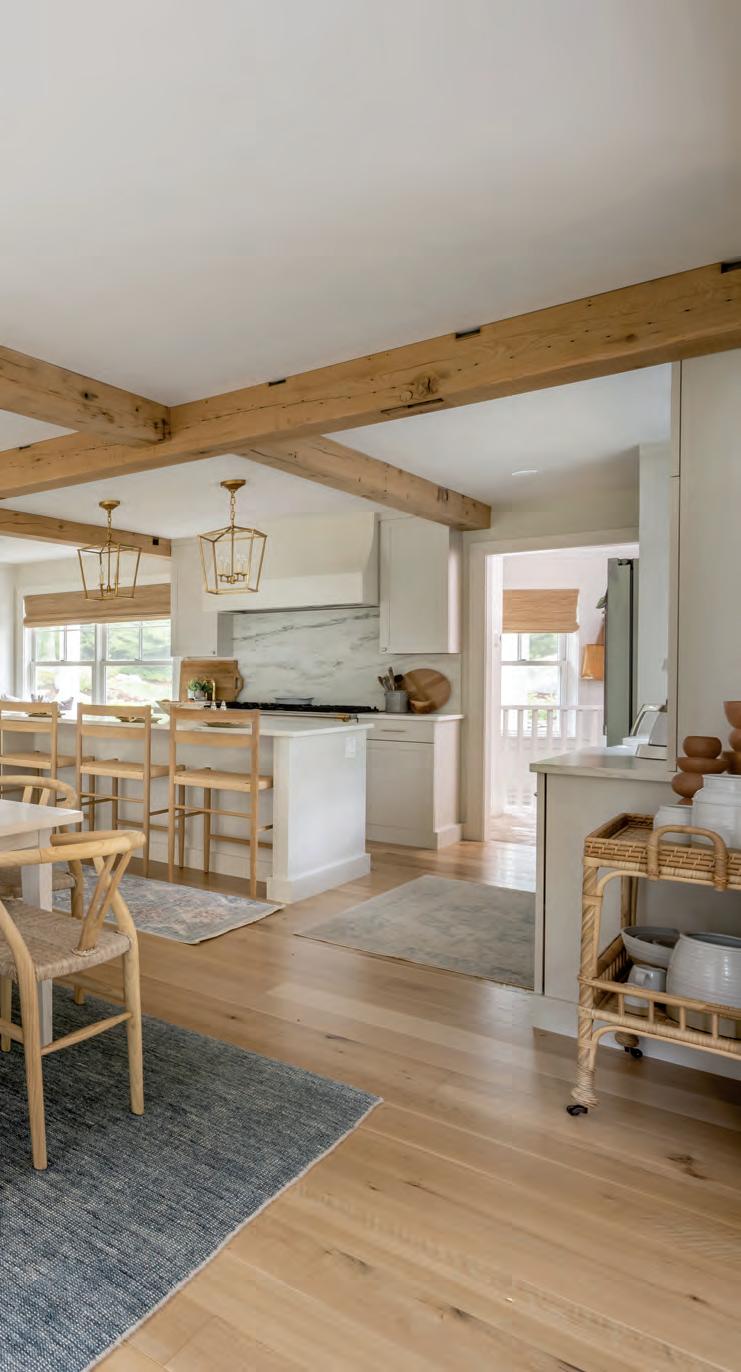
IT TAKES A VILLAGE
A young family enjoys their light and bright Lakes Region house, newly renovated indoors and out.
When Leah Cushman brought two chairs to Amanda Raymond’s interior design shop, Studio Sage, for reupholstering, she had no idea that upgrading from gray-and-white ticking stripe to nubby, off-white performance fabric would plant the seed for a new and enduring friendship. The two women with similar aged children hit it off—so much so that it led to collaborating on a total refresh of Leah’s New London home, which she shares with her husband, Jon, daughters Carter, 5, and Delaney, 3, and Bodie, a playful Jack Russell terrier. Those two chairs, sporting their new look, now have pride of place beside a cast stone fireplace in the bright and airy abode set on four acres of woodland not far from Sunapee’s eponymous lake and ski resort. Once husband and wife decided to launch head-first into a major renovation, they assembled a team that, in addition to Raymond, included architect Frank Anzalone, builder Jonathan Bennett and Chris Collins of Warner Stone for the landscape.
BY JANICE RANDALL ROHLF PHOTOGRAPHY BY JOHN W. HESSION
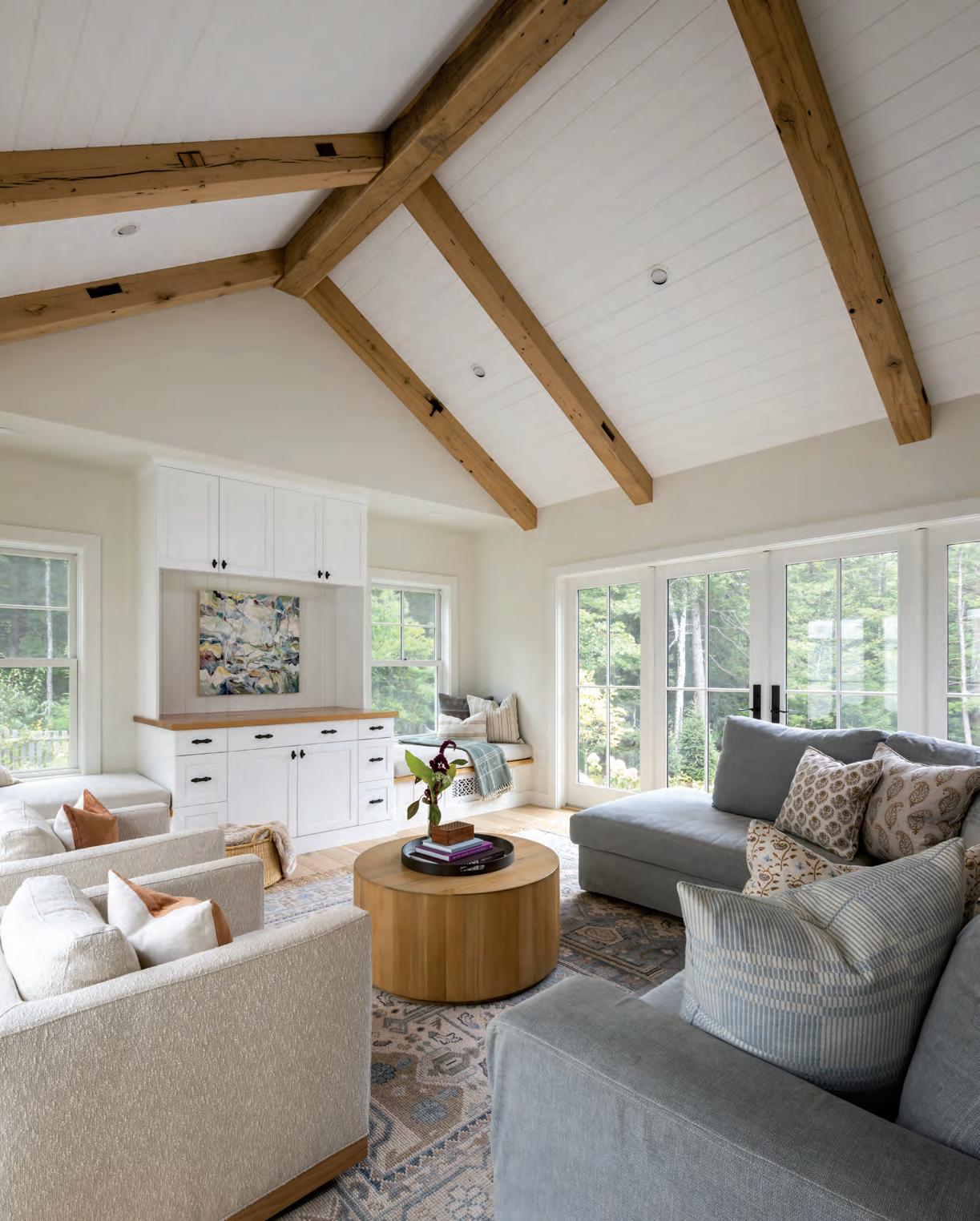
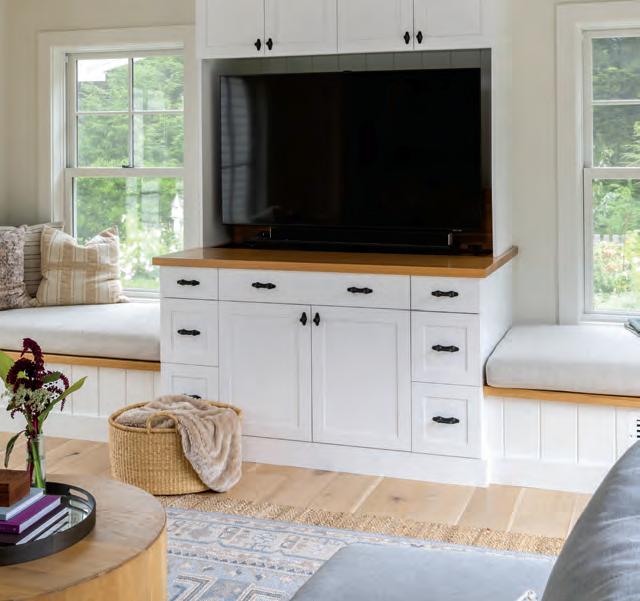
The Cushmans purchased the house in 2016, moving in right before their wedding. A few years later, with two little girls in the picture, the house was simply not working for them, neither functionally nor aesthetically. “It was a very dark house—dark shakes on the outside and green trim, a classic woodsy style, with a very dark interior, too,” says Leah, who has the sensibility of an artist, which she is. She loved the neighborhood, especially the house’s location on a cul-de-sac that reminded her of the Simsbury, Conn., house she grew up in. “I didn’t want to move, and I didn’t really want to build a new house, as great as that can be,” she says. “I was feeling really stubborn.”
Previously, the house had undergone a few minor renovations, and that’s when they met Jonathan Bennett, the builder who at that time renovated their primary bathroom. Concurrently, they made some cosmetic changes, like painting the house, inside and out, and replacing the carpeting. These quick fixes allowed them to buy some time, but eventually, they reached a point where more changes were needed to satisfy them and to reflect their vision for the future. “We figured we were going to spend the next 20 years here,” says Leah.
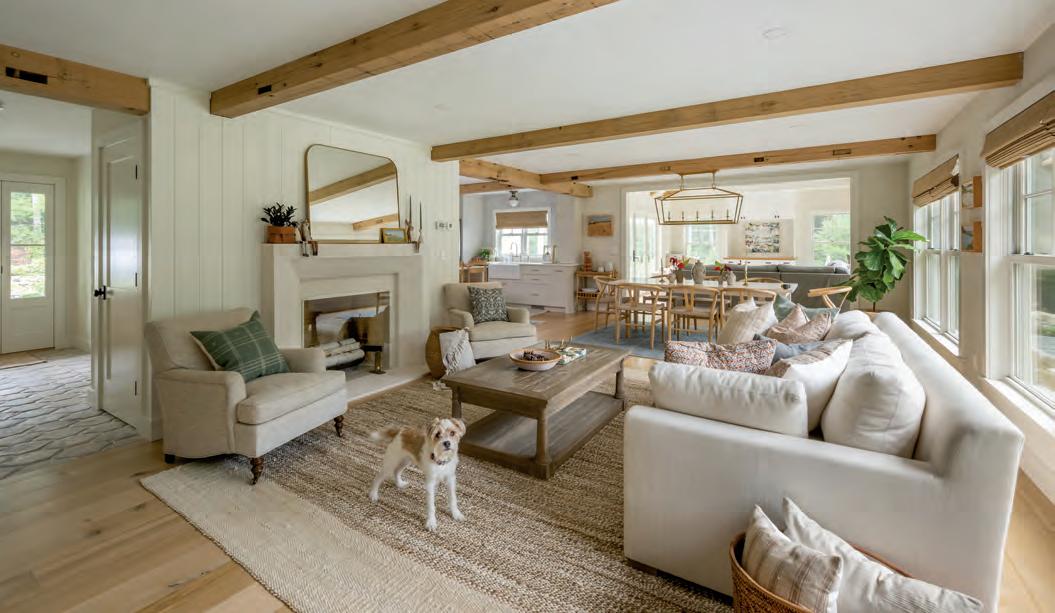
At left and above: Occupying space that was once a little-used screened porch, the vaulted family room is a sunny, comfortable place to relax. The TV disappears into the cabinetry when the family would rather read, play games or entertain.
Bottom: Studio Sage mixed neutral high-performance fabrics with textured rugs and softcolored accent pillows for a nice balance of warm and cool tones.
The Cushmans reached back out to Bennett, who became the homeowners’ go-to throughout the design-build process they were about to embark on. The builder and his team, known for meticulous work, replaced all the windows, redid the kitchen and, leading into it, added a mudroom, laundry room and bathroom.
For his part, architect Anzalone listened as the couple explained that among other issues they wanted resolved were a screen porch they didn’t use and the kitchen’s dysfunctional layout. “In general, nothing flowed,” says the architect. “They had all this square footage (3,400 square feet) but the house always felt tight and awkward. And no matter what time of day, it was dark inside.”
The first order of business was tearing down the little-used screen porch that was on its last legs and replacing it with a family room where the kids can play and guests can mingle away from, but within earshot of, the kitchen. The room’s vaulted ceiling covered in whitepainted V-groove brings a welcome airiness to the space that is further enhanced by two sets of French doors and new picture windows beefing up the glassiness of the southeast wall. Not only do the new doors and windows allow more sunlight to stream in, they are also more energy efficient, which enabled the homeowners to upgrade their heating system. Bennett installed central air conditioning and radiant-heat floors throughout.
It was easy to understand why the kitchen didn’t work. Walking in from the mudroom, “the first thing you saw was a black-topped island set at an odd angle that wedged you toward the sink,” describes Anzalone. “You could walk around it, but psychologically it blocked you.”
Repositioning the island was one piece of the puzzle in reconfiguring the kitchen, but it was the stove, a handsome white Lacanche range with brass trim, that played the larger role in how the kitchen is laid out. “I love old houses, and since this one isn’t old, I wanted a European-style stove that would have a transitional look,” says Leah, who was also attracted to the Lacanche’s powerful oven. “My passion is baking, so that was part of the motivation.”
With the range as the centerpiece, other elements fell into place. Supporting Leah’s desired lived-in aesthetic, the countertops and

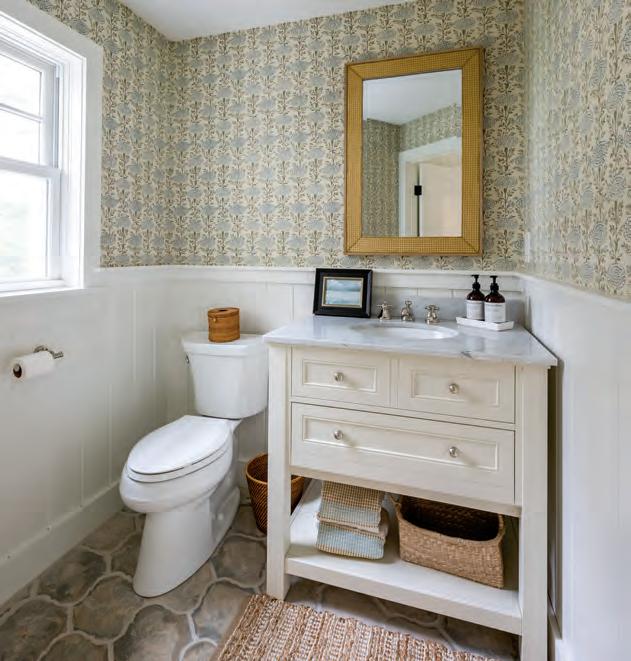
In the concrete-tiled entryway, Bodie, a Jack Russell terrier, greets guests as they arrive at the front door.
The finishing touch in the powder room is the Lisa Fine “Samode” wallpaper, hand-printed on clay-coated paper.
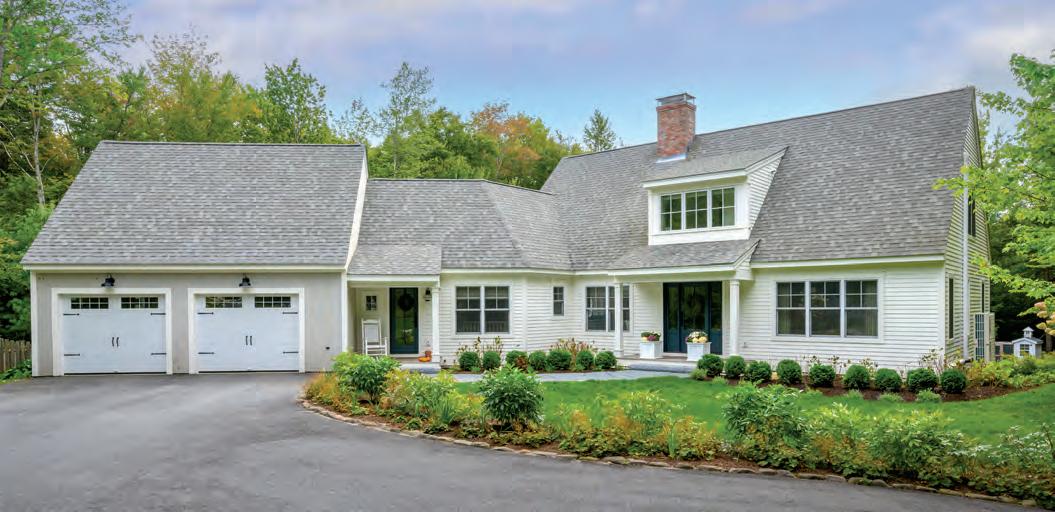

backsplash are marble, which will etch and wear nicely over time, even though it’s quite durable. The Fireclay farmhouse sink (there’s another in the laundry room) has a timeless look that complements the custom Cabico cabinetry from Shaker Hill Granite Company. In its new, more functional and prettier incarnation, the kitchen is an inviting space to prepare food and to grab a quick bite at the island. There’s a large built-in storage closet, a nook for cookbooks and a deep and inviting window seat with a view of the front gardens.
Glass-paneled pocket doors can be pulled to separate the kitchen from the front hall without blocking the view. Bennett and his team removed brickwork and old hemlock beams, installing white oak beams to complement the character-grade white oak floor. They also built a new range hood, covering it with smoothtextured and neutral-colored plaster.
A sweet transitional space with a wicker bar cart and a small Amy Wynne oil painting from nearby Candita Clayton Gallery leads into the dining area where a table and eight wishbone
Top: A fresh coat of paint and a makeover to the garage give the house a welcoming facade.
Above: In the backyard, a new hardscape design and plantings connect with the new family room addition.
chairs blends into the living spaces on either side, the family room and the living room.
“The home is open concept, and throughout you see a continuity of palette,” says Raymond, who carefully selected just the right shade of white paint for the space. In contrast to Seacoast homes, where Raymond might use a pure white hue and light, gauzy fabrics, here, in the more rustic lake environment, she opted for a white with some warmth to it and paired that with textured fabrics.
Leah weighed in on many decisions, including block print fabric for both some pillows and a pair of recovered ottomans. “What was great about this project was that Leah participated more in the design than a typical client would,” says Raymond. “She has an unbelievable eye and an artist’s vision.”
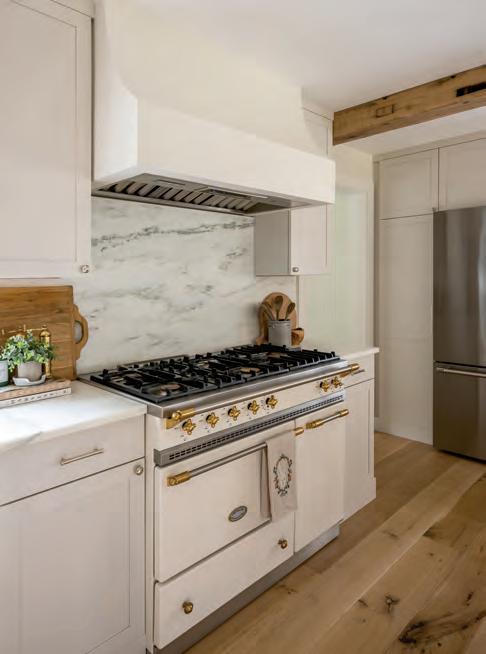
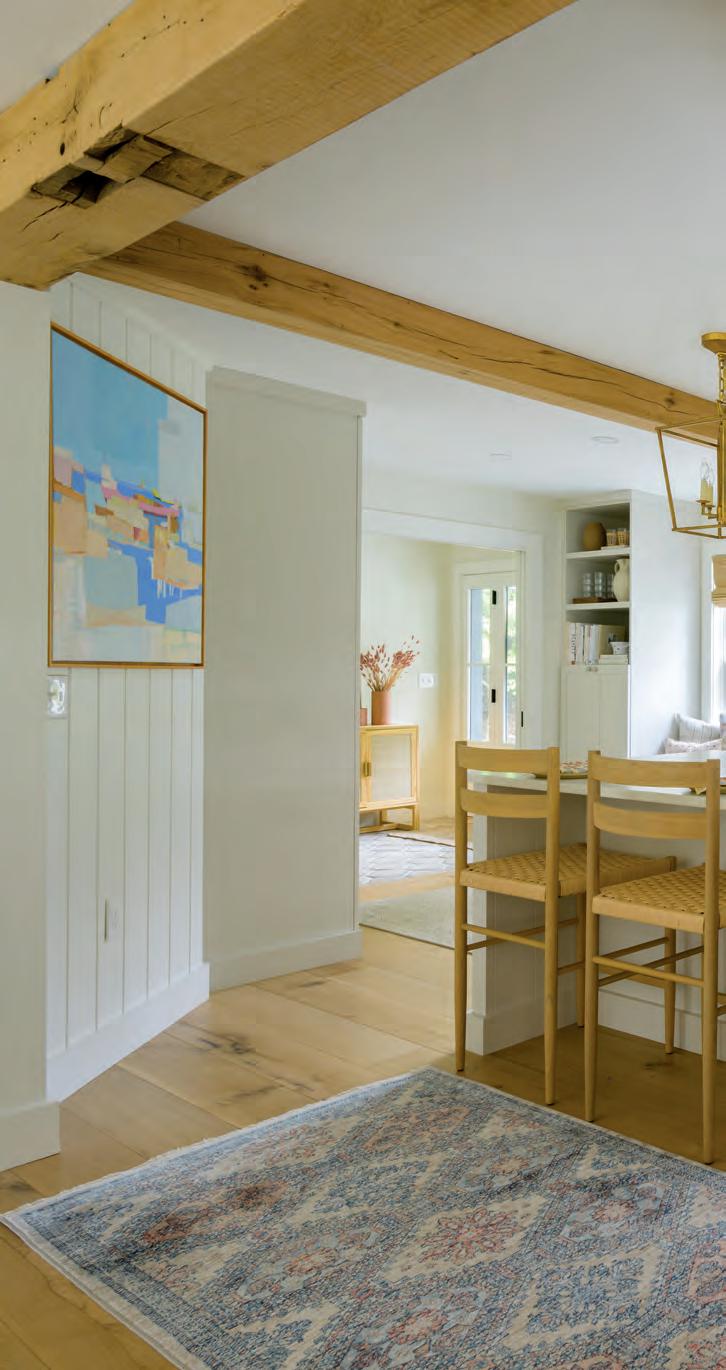
Stunning and professional grade, the brass-trimmed Lacanche range brings a touch of old-world style to the kitchen.
Right: A new and repositioned island allows a much more efficient circulation pattern from the mudroom area into the kitchen and beyond.
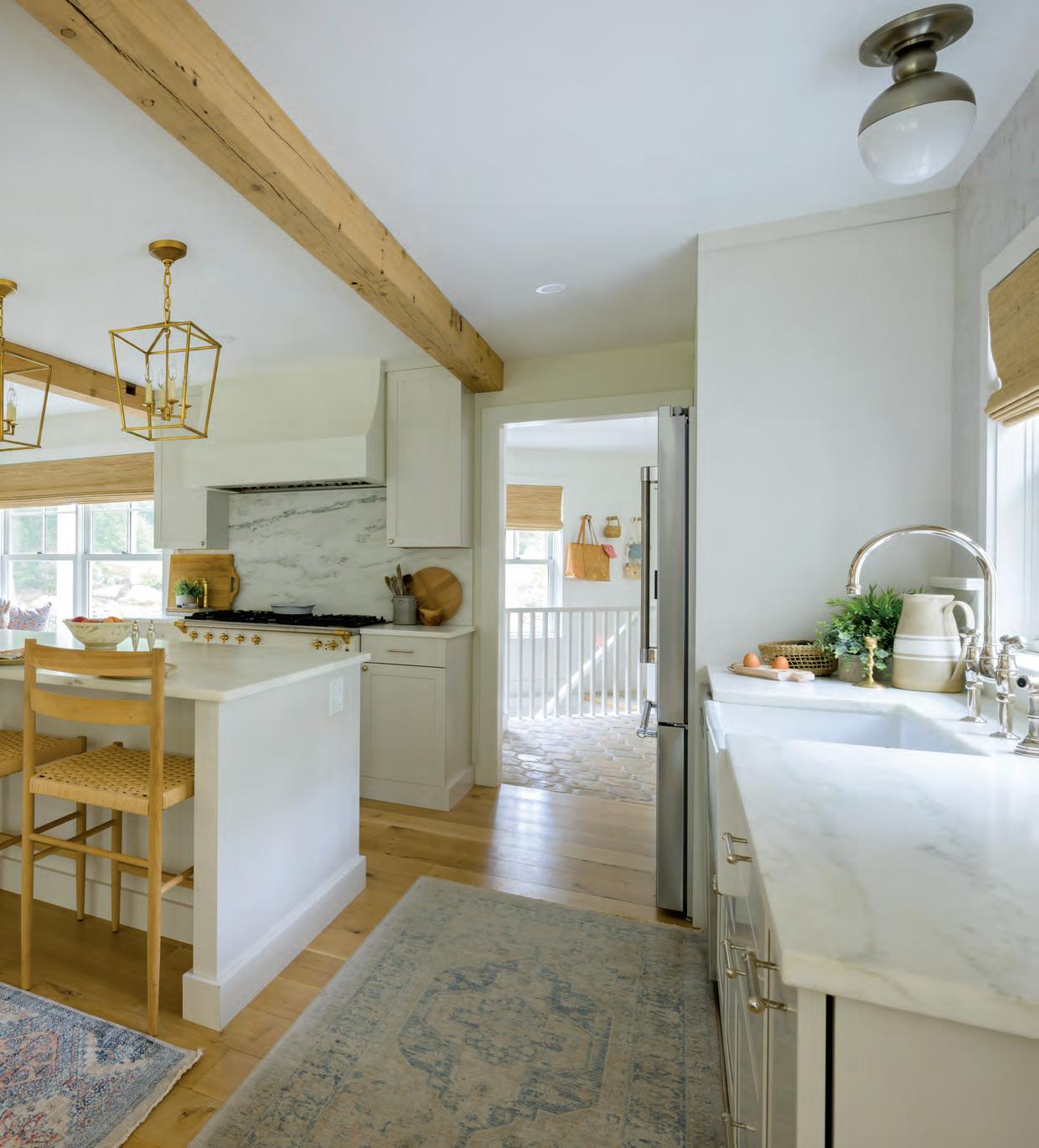
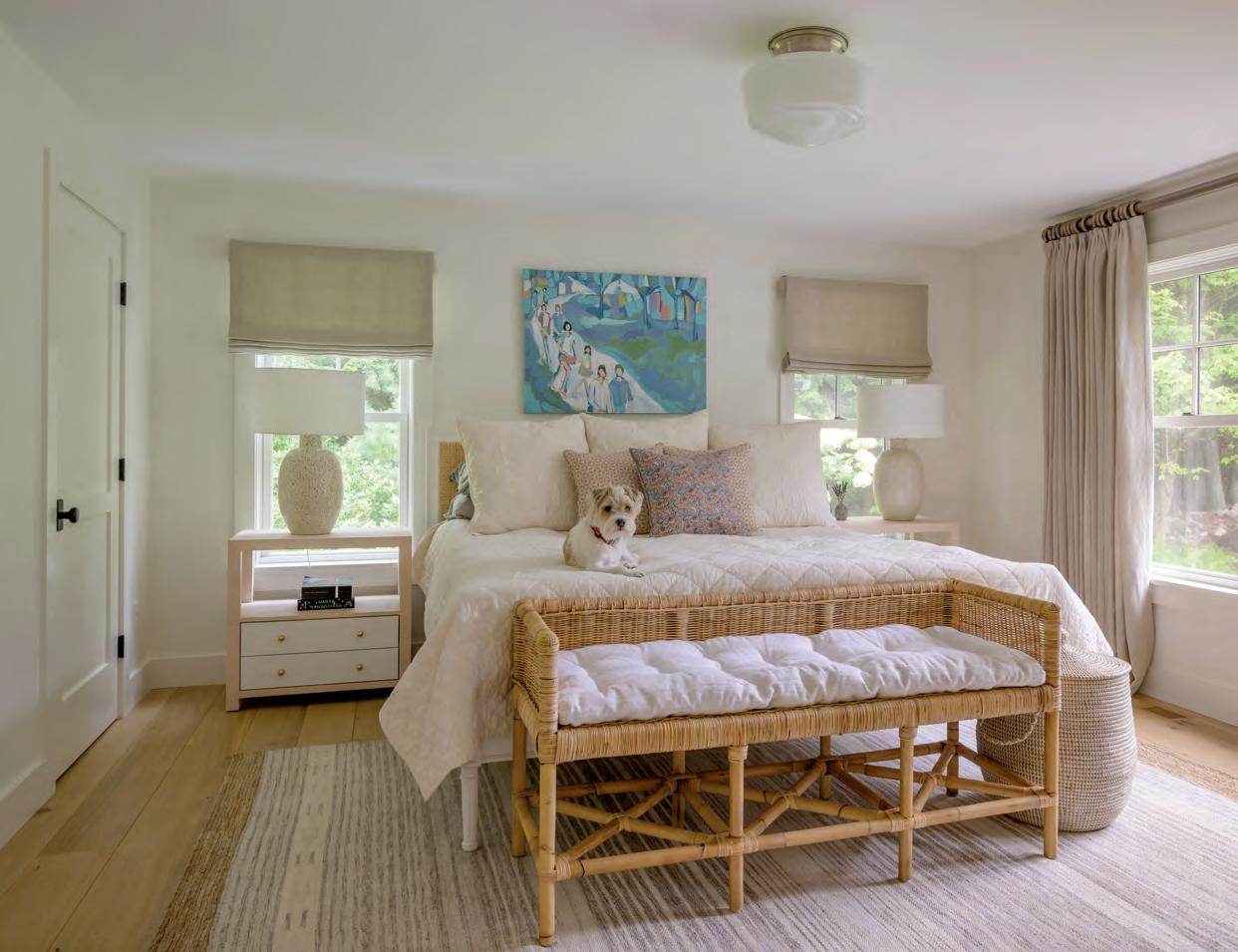

Against the whites—Benjamin Moore Dove Wing walls and White Dove trim—the accent colors are a nice balance of warm and cool tones, with grays, blues, rusts and dusty rose predominating. This layer of a well-rounded color palette against the neutral background of the whites pulls in warm tones from the concrete floor tiles used in parts of the home.
“Adding layers on top of layers is what makes this space feel so comfortable and lived-in,” notes Raymond.
Just as the interior design pulls elements in from the rustic outdoor environment, the architectural intent ensures a flow from the
Above: As in the rest of the home, the primary bedroom sports a neutral color palette with texture brought in through the window treatments, rug and foot-of-the-bed bench.
At right: The sunny laundry room is conveniently located off of the mudroom.
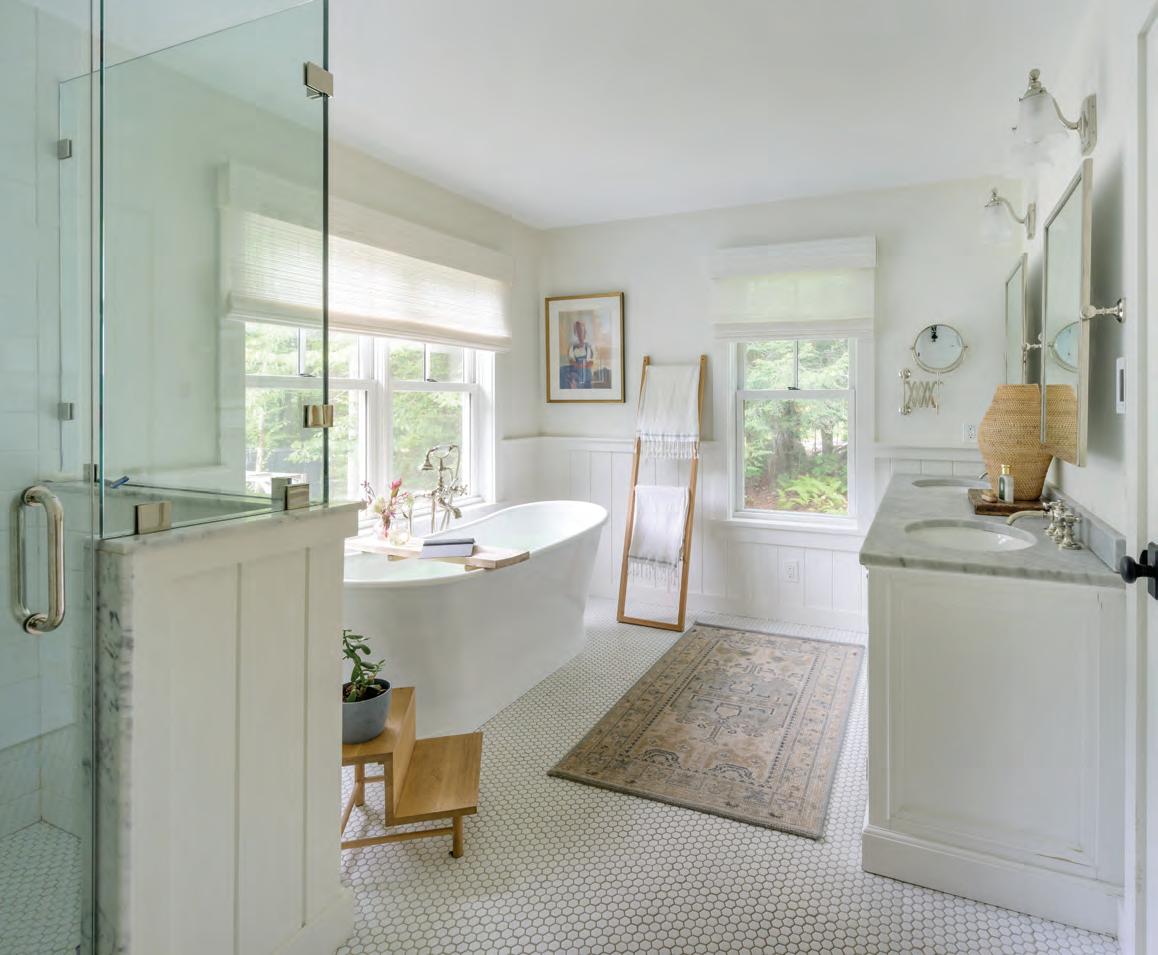
outside-in and vice versa. “Because they have a nice, private yard, being able to see outside changed the interior space,” says Anzalone, who, by incorporating two sets of French doors in the family room, linked a pair of outdoor spaces to the indoors. One is a stone patio that you can see from the kitchen, with a trellis. The other, south-facing patio has stone steps leading down to it. “When you live here (in New Hampshire) you should feel like you have a connection to the outdoors,” says Anzalone.
Like Anzalone, the Cushmans, a family that likes to swim, ski and hike, feel strongly
about a tie between their house and the land surrounding it. “We have so much glass in the house, we wanted everything to transition well from inside to outside,” shares Leah, who is as passionate about gardening as she is baking.
“The landscaping was a design-build with Leah,” says Porter Weeks, project manager at Warner Stone, which executed a design drawn up by Gradient Landscape Architects. “Our overall goal was to develop what was built as an outdoor entertaining space and also to establish an open, level area where the kids could play.” To this end, Weeks and Warner
With a soaking tub next to the picture window, the primary bath is a serene, spa-like space.

sweet space
a
Stone owner Chris Collins used bluestone—a combination of oversized, irregular slabs for walkways and dimensional pieces for the main gathering spaces. Woodbury gray granite was chosen for most of the steps. In addition, boulders, many found on site, were used in the creation of terraced spaces. “A lot of the material choices that were extended into the
landscape were to reinforce a lot of the interior design,” says Weeks.
The planting plan is free-flowing and includes varieties that guarantee bloom color from early spring into late fall. Featured among the 20 or so species are native catmint, allium, plethora and cornflower, and nonnative iris, peonies, geraniums and salvia.
A
with
wicker bar cart and landscape painting leads into the dining area.
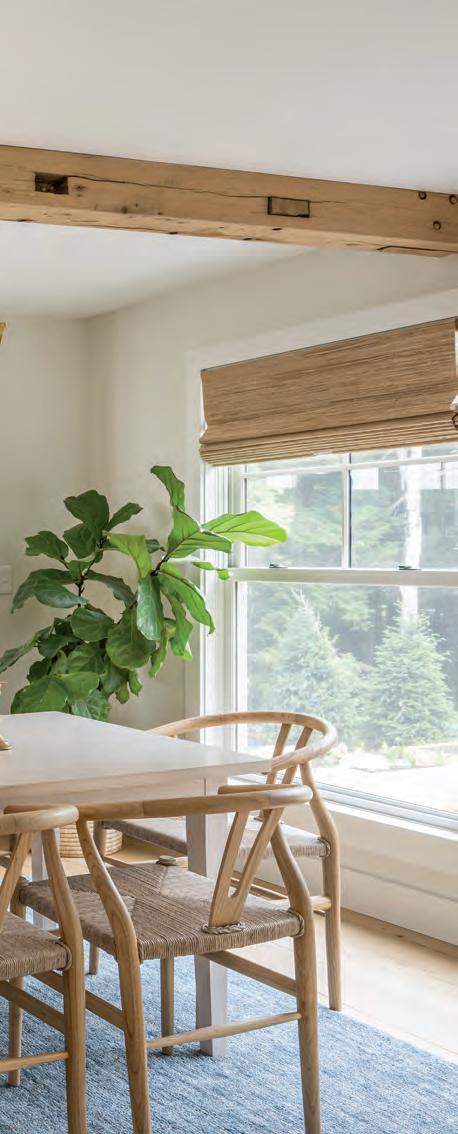
“My girls help with digging and planting bulbs and picking flowers,” says Leah, who looks forward to planting raised beds come spring.
Added into the landscape as one-gallon and four-quart specimens, the flowers and shrubs will fill in nicely over the years as they mature. Likewise, the house—conceived
RESOURCES
Bennett Builders • (603) 456-8942 • bennettbuildersllc.com
Candita Clayton Gallery • (603) 748-6986 • candidaclaytongallery.com
Frank Anzalone Associates • (603) 526-8911 • faa-arch.com
Gradient Landscape Architects • gradientpllc.com
Shaker Hill Granite Company • (603) 632-9800 •shakerhillgranite.com
Studio Sage • (603) 526-2121 • studiosageinteriors.com
Warner Stone LLC • (603) 456-2696 • warnerstonellc@gmail.com

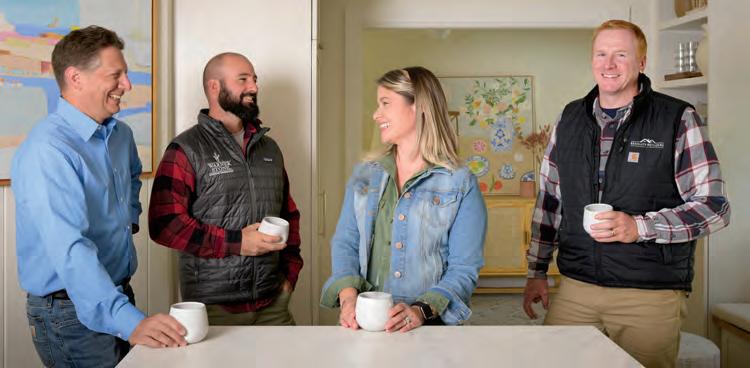
with the future in mind—will age well.
“One of the things I love about this house,” says Raymond, “is that Leah and Jon designed their home to incorporate their children now and as they grow.”
As for the homeowners, We’re really happy,” says Leah. “It all finally came together.” NHH
Top: In a daughter’s upstairs bedroom, custom trim on the chair skirt and drapes is a nice touch.
Above: From left to right, the “dream team” of collaborators: architect Frank Anzalone; Chris Collins, owner, Warner Stone LLC; Studio Sage owner and pincipal designer Amanda Raymond; and builder Jonathan Bennett.
Expressions in Furniture
Designs from history are translated into museum-quality reproductions
Douglas P. Dimes, 56, knows instinctively how to make an American Windsor chair— it’s all he’s ever known or wanted to do. At age 10, the secondgeneration owner of D.R. Dimes & Company began sweeping the floors of the shop where his father, Douglas R. Dimes, specialized in Colonial furniture like the Windsor chair, whose origins stem from 18th-century England.
Founded in 1964, D.R. Dimes & Company is known nationally for its faithful, museum-quality reproductions of Colonial furniture. Through expert craftsmanship and with a dedicated team, Douglas R. Dimes & Company brought the Windsor chair widespread popularity by designing the Limited Edition Writing Arm Chair during America’s Bicentennial in 1976. Meanwhile, Douglas P. Dimes would continue learning processing, assembly, carving and hand-turning—all skills needed to make a quality chair. Dimes wanted to especially thank junior partner Tom Lavigne, who worked for the company for 50 years, as being instrumental to its success.
For the last 35 years, Doug has been designing furniture by following his father’s example and those same 18thcentury standards of quality. For his dad’s birthday in 1992, Doug gave him the first Windsor chair he designed and put together—a reproduction from Independence Hall.
The company’s work has appeared in dramatic movies and been commissioned by several historical sites and museums, including Colonial Williamsburg, Independence Hall, Old Sturbridge
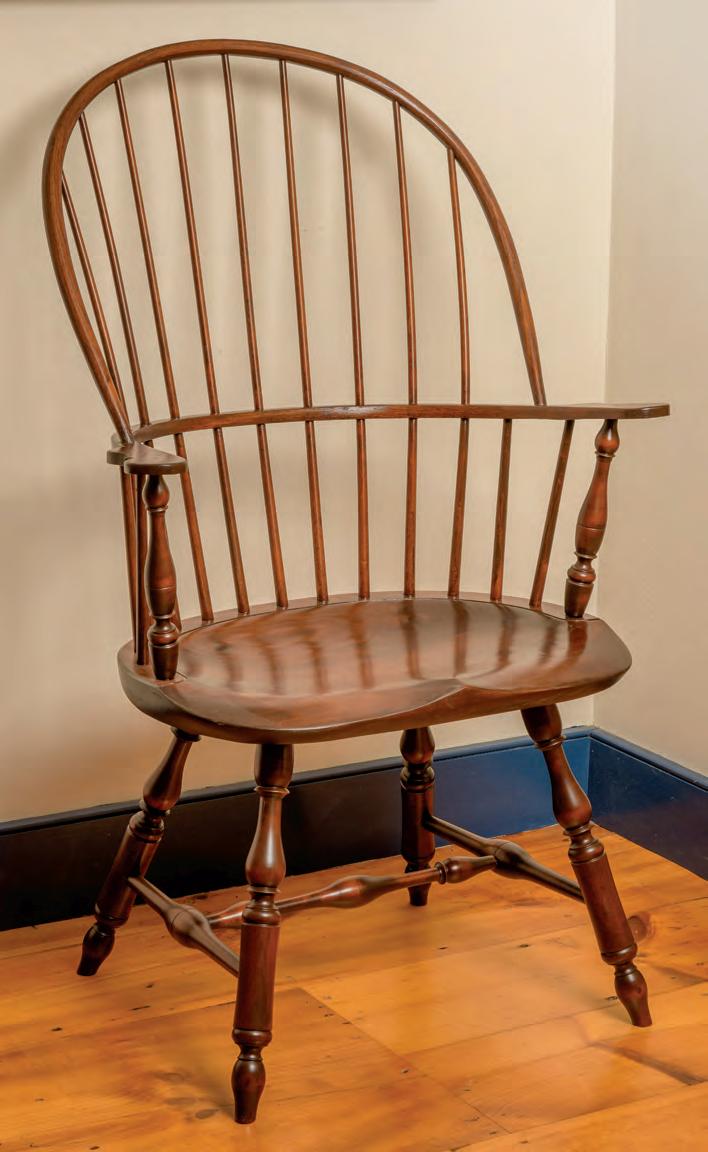
BY EMILY REILY | PHOTOGRAPHY BY JOHN W. HESSION
A Henzey Sackback Windsor Arm Chair finished in claret. The style originated in 18th-century Philadelphia.
In his workshop, Dimes uses a pump sander to shape a comb for a Philadelphia Writing Arm Chair. Behind Dimes are various arm and comb patterns. Dimes makes more than 100 styles of chairs.
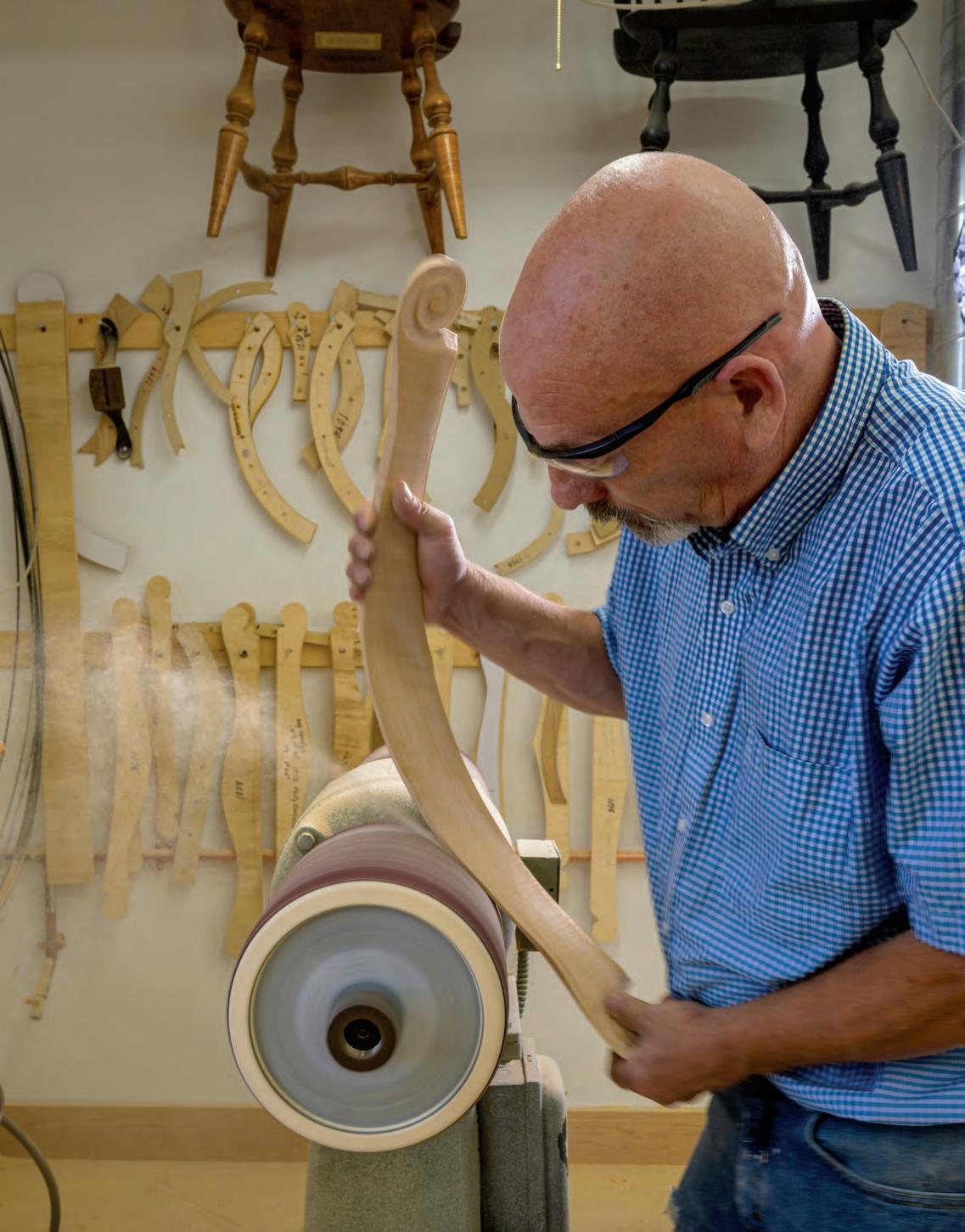
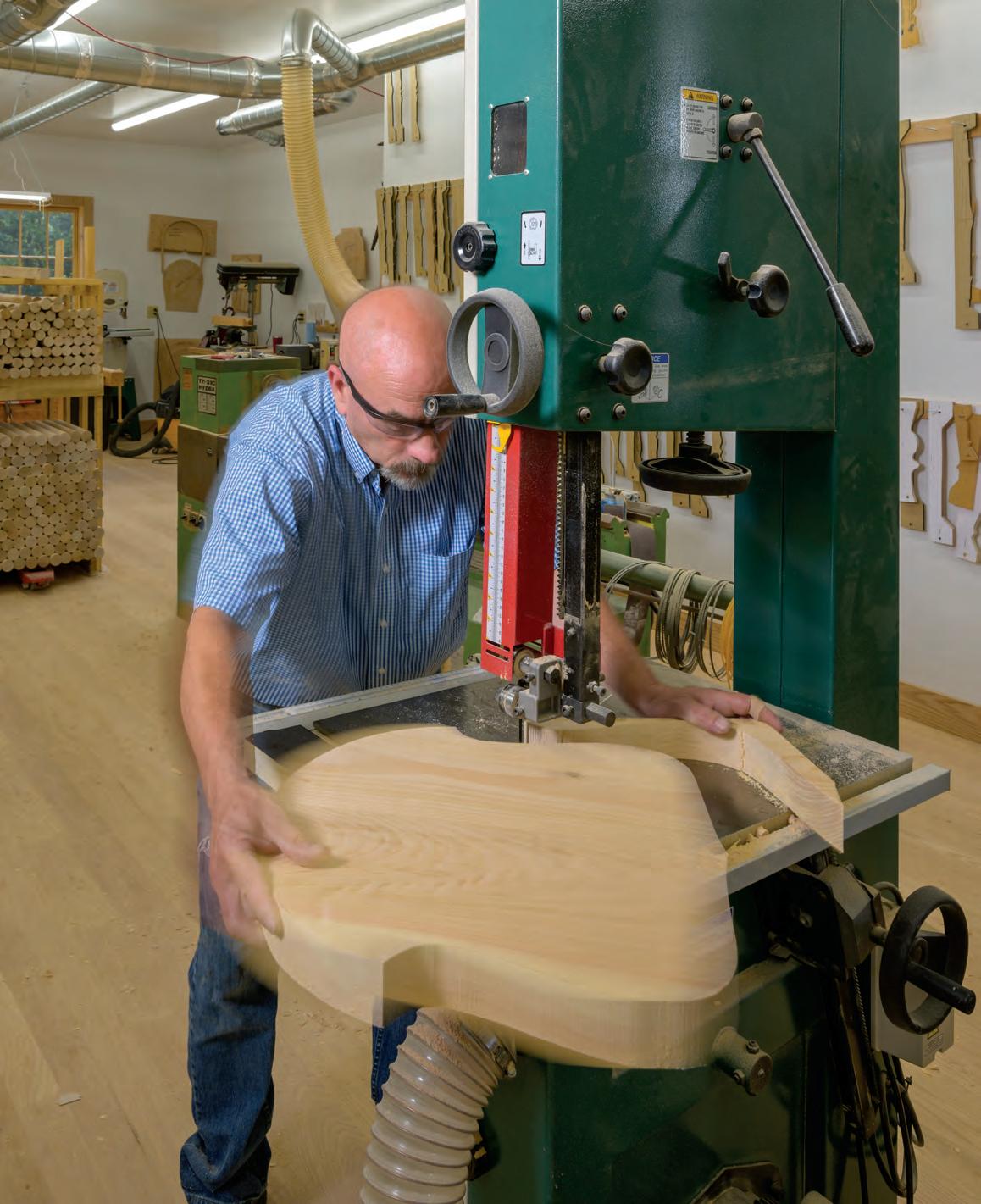
Dimes uses a band saw to cut out a chair seat for a Henzey Bowback side chair. According to Dimes, the most prolific chairmakers in the 18th century lived in Boston, Philadelphia and parts of Connecticut.
Village, Historic Deerfield, the Smithsonian, Historic Charleston County Courthouse, Winterthur Museum in Delaware, the Museum of the American Revolution in Philadelphia and the Edward M. Kennedy Institute, where Doug reproduced desks for the U.S. Senate chamber.
Dimes, now a team of one, continues to make Windsor chairs and plans to spend a lifetime carrying on the strong work ethic passed down from his father, who died earlier this year.
Of 18th-century American design, Dimes says, “I think it’s the best stuff ever made. So why reinvent the wheel? You can make it different, but you can’t make it better.”
Dimes talks with New Hampshire Home about the history of the company, his dad’s influence and the essentials to being a top-notch furniture-maker.
New Hampshire Home [NHH]: How did you become a chairmaker?
Doug Dimes [DD]: When they started restoring houses, some people who studied it really hard had to rediscover how the houses were built, how the furniture was built. Now there’s a YouTube video for everything. But in 1964, there was nothing. There was no fine woodworking magazine. My father was more of a pioneer of figuring it out.
NHH: What is the quality you look for in furniture?
DD: It’s scholarship. I was always pushing to try to learn more and do more. The only way you can identify the best stuff is by scholarship. You just have to study it all the time and become an expert in it to be able to know the difference.
At Independence Hall, we made these Philadelphia low-back benches, I think in 1980. Millions, literally millions of people, have sat in those chairs over the years. That’s a long time.
NHH: Is making a good piece like breaking things down, then building them back up?
DD: That’s true of anything. It’s easy if
Prospect Hill



January 24, 2023
The Barn at Bull Meadow, Concord, NH
Award categories include residential construction, remodeling, interior design, landscape design, energy efficieny and more. 603-228-0351 · info@nhhba.com · www.nhcornerstoneawards.com
SPONSORED BY:

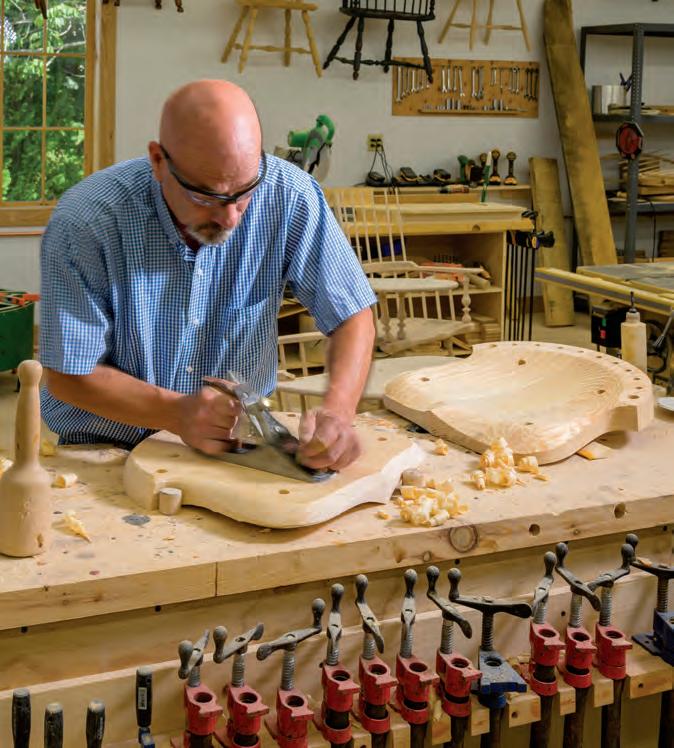
you know how to do it. It’s second nature to me. When you break it down into each individual element, it may not be that easy. But once you get it there, it just works. Those guys in the 18th century, they were talented. Holy smokes! They did work by hand. It’s amazing.
NHH: What’s one example of a great Windsor chair?
DD: The most beautiful Windsor chair, the most sophisticated chair ever made, was called a Philadelphia Queen Anne Combback, that was made in Philadelphia, right around the time of the Revolution.
NHH: You started carving wooden chairs when you were 21. Has your style evolved since then?
DD: It was never static. It has evolved over the years. And hopefully for the better, always for the better, more stylish. Then you figure out different techniques to do it more efficiently, more accurately.
All the chairs are a little different, but they shouldn’t appear to be different. They should be exactly what they should be. And if they’re not, then they’re less than they should be.
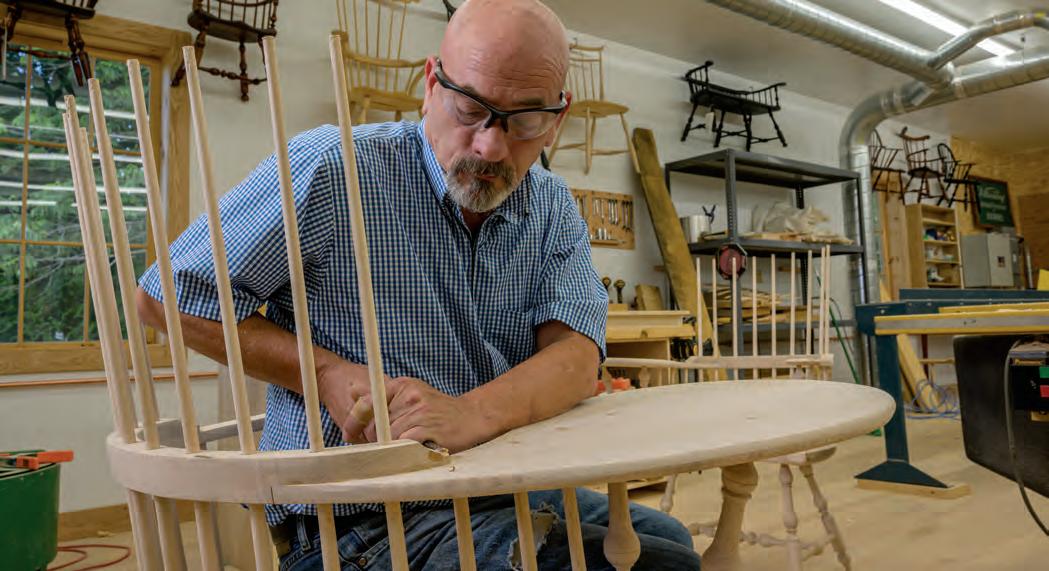
Dimes uses a hand chisel to finish a curved detail on a writing arm chair. “There’s lots of small details that just have to be done by hand. There’s no way around it,” Dimes says.
Dimes hand-planes a Henzey Bowback Side Windsor Chair seat before putting the Dimes name on the bottom.

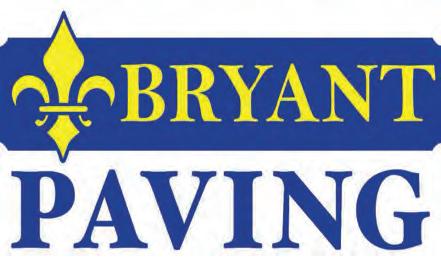



I can tell you pretty much everything I’ve made in my life will outlast everybody who’s currently alive on the planet. That’s the standard.
NHH: What is D.R. Dimes like today?
DD: I couldn’t bring myself to be thinking about selling it—I closed it. It became financially untenable. My name is Dimes. I am a Dimes. It’s the only thing I’ve ever done. Closing almost killed me; I was so distraught.
Times change, things change, circumstances change. There is a lot of great companies that are no longer in existence. What we were doing wasn’t practical anymore.
NHH: How do you continue to grow?
DD: I am always pushing forward. I do a lot of reading. I have a huge library of books, and from a very young age, I met very influential antique dealers.
NHH: Can anyone do this?
DD: It takes a lot of experience, rewinding and repetition to get it right. Repetition, repetition. And, boy, it is helpful if you have somebody there giving you some pointers. My father had to figure it out himself.
NHH: Are you a big history buff?
DD: We’re in the history business, recreating the very best of 18th-century designs from all over the country, and doing it as well as we possibly could.
NHH: Do you have any hobbies?
DD: I’ve always been just a grinder. My buddy Tom, who used to work for us, and I would both be at the shop early in the morning. Everybody ran a really tight ship. I love it. And I’m very proud of it. But it’s a job.
Landscaping, if anything, is my hobby— trying to make things look good. I want them to be pretty.
NHH: What about vacations?
DD: I hate vacation. I like to be in the shop. That’s where I’m comfortable. Sometimes, I’ll go to a museum. Last weekend, I went down to the Peabody Essex Museum in Salem, Massachusetts. NHH
RESOURCE
D.R. Dimes & Company, LTD • drdimes.com
A finished Philadelphia Writing Arm Windsor Chair, with storage under the arm and seat, in solid tiger maple with an olde amber finish.
Top: Dimes installs a comb onto a chair, one of the last steps when making a Windsor Chair.
KITCHENS
Accent on Kitchens

Your home should reflect who you are and what you love. The Accent team is creative and committed—combining experience and innovation with a friendly, low-key approach. The results are rooms that become the heart of your home: beautifully designed spaces that will be an expression of your lifestyle for years to come.
112 Lafayette Road, North Hampton (603) 964-1771 • accentonkitchens.com
FLOORING
Ponders Hollow Custom Wood Flooring

As a fourth-generation, family-run sawmill, Ponders Hollow is fortunate to provide some of the finest timber in the world. The diverse grains and colors of New England trees make it the ideal flooring option for any household. Every project is special, that’s why we use state-of-the-art machinery and hand-grading to tailor each board to your specifications.
16 Ponders Hollow Rd., Westfield, MA • (413) 562-8730 pondershollow.com
OUTDOOR LIVING
Soake Pools

Create a spa-like experience in your own backyard. We manufacture four-season, luxury plunge pools designed to be warm in winter, cool in summer and small enough to fit almost any backyard space. Soake Pools are made in New Hampshire, and delivered tiled and ready for your finishing touches. Small pools, big benefits. Visit our website, and contact us for more information. Start planning now for 2023!
In Pembroke • (603) 749-0665 • soakepools.com
KITCHENS AND BATHROOMS Belletetes

Whether your project is large or small, complicated or simple, Belletetes takes your ideas and makes them happen. We have all the tools, products and skills necessary to make your project a complete success. Specializing in lumber, decking, windows, doors, paint, stains and flooring—as well as fixtures and cabinets for kitchens and bathrooms—we have everything for your remodeling needs. And don’t forget to take advantage of our free estimates!
51 Peterborough St., Jaffrey • (603) 532-7716 • belletetes.com
SPECIALTY WOOD PRODUCTS
Ponders Hollow Custom Millwork

Whether you’d like to call attention to the architectural details of your room or create a crisp contrast of styles, Ponders Hollow provides a vast array of handcrafted custom millwork. We offer countless traditional and contemporary designs in numerous wood species to fit the needs of any finishing wood project.
16 Ponders Hollow Rd., Westfield, MA • (413) 562-8730 pondershollow.com
KITCHENS AND BATHROOMS
Rumford Stone

Rumford Stone is the choice of homeowners and design professionals when it comes to the finest in natural stone, quartz and porcelain surfaces. Begin creating a new countertop for your kitchen or bath at the Rumford Stone Design Center featuring the region’s largest slab yard. If you can dream it, it is probably here. From selection to fabrication to installation, our experienced staff will make the process easy and enjoyable.
Pembroke and Bow • (603) 224-9876 • rumfordstone.com
RESOURCES
Photograph by Jon Caron
Events AROUND THE STATE
Ready or not, here come the holidays! Looking for that perfect locally made gift? Want to immerse yourself in festive décor? Craving a dose of your favorite Christmas music? The next couple of months feature everything from an inspiring showhouse and beautifully decorated trees to pops concerts and artisan fairs.
NOVEMBER 4
The Distiller’s Showcase of Premium Spirits
Call it gift-giving research. This annual event and benefit for the New Hampshire Food Bank offers the chance to taste hundreds of spirits. In addition to more than 130 tables of premium and ultra-premium spirits available for sampling, you’ll also have the opportunity to meet distillers from around the world while enjoying bites from the state’s top restaurants. The showcase is the culmination of Distiller’s Week, which is filled with seminars, tastings, celebrity panels and more. Distiller’s Week details will be posted at distillersshowcase.com, so check back often for new and exciting events. Distiller’s Showcase of Premium Spirits, 6-8:30 p.m. Tickets are $60. DoubleTree by Hilton Manchester Downtown, 700 Elm St., Manchester, distillersshowcase.com
NOVEMBER 6-7
Holiday Open House and Kitty Angels Weekend
Now celebrating 31 years, this pet- and kidfriendly event offers special sales of vintage Christmas and holiday décor, plus a number of activities and entertainment. The two-day event includes raffles, music, horse and pony rides, demonstrations by artists, food vendors, a petting zoo and more. Kitty Angels will be offering information on the organization, adoptions and donations. Representatives from the Amherst Animal Hospital, who have worked alongside Kitty Angels for decades, will also be on hand. 10 a.m.-4 p.m. Treasures Antiques, Collectables
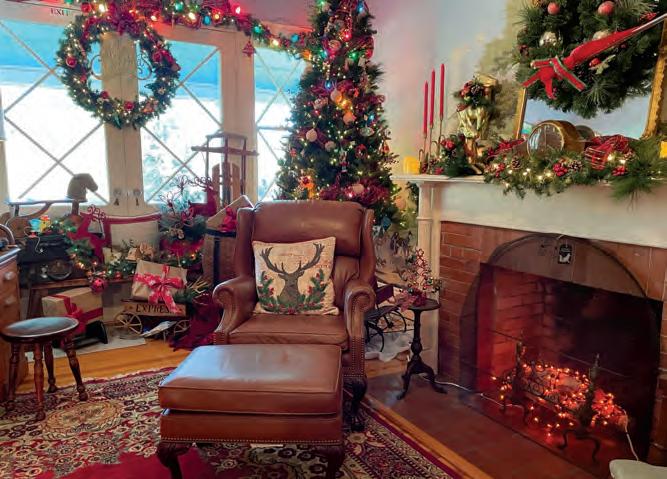
NOVEMBER 6-14
Christmas at The Fells Decorator Showhouse
In need of holiday décor inspiration? Tour the main house at The Fells to see how professional interior designers, floral artists, decorators and talented volunteers use their personal sense of style and interpretation of Christmas cheer to transform the gorgeous historic home. On weekends, tour-goers can enjoy lunch in the dining room café. Also open is the holiday gift boutique, where you can find items created by regional artisans. The showhouse begins with the preview gala on November 5 from 5-7 p.m., which includes music, appetizers and a chance to meet the designers. Gala tickets are $100 and reservations are required. The price includes one return ticket per person. Weekdays, 1-3 p.m.; weekends, 10 a.m.-3 p.m. Admission is $25 for adults, $8 for children and free for children under 5.

NOVEMBER 14
Bedford Handmade
The Bedford High School Handmade Fair is a celebration of local artists and artisans. Get your start on the shopping season and support local businesses. 10 a.m.3 p.m. The fair will benefit all of the class student council accounts and the Manchester Animal Shelter. Bedford High School, 47 Nashua Rd., Bedford, facebook.com/ bedfordhandmade
NOVEMBER 19-20
Farm
Fare
Keep your holiday celebration local by shopping for everything you need to make a delicious feast and more at Farm Fare at Stonewall Farm in Keene. You’ll find items from area farms and specialty food producers who will be selling locally raised meats, produce, bread and stuffing mixes, berries, appetizers, wine and beer, desserts, condiments, rubs and herbs. Farm Fare will also feature crafts and other handmade goods perfect for gift-giving. Stonewall Farm, 242 Chesterfield Rd., Keene, (603) 357-7278, stonewallfarm.org
NOVEMBER 20
Great New England Craft & Artisans Show
In addition to the more than 100 juried artisans, craftspeople and specialty food vendors, the fair also includes activities, live holiday music, food samples, demonstrations, door prizes and a café. Handmade items for sale range from apparel and jewelry to wood products and metal art. 9 a.m.-4 p.m. Entry is $5. The Rim Sports Complex, 311 Winnacunnet Rd., Hampton, gnecraftartisanshows.com
NOVEMBER 20-28
Bektash Feztival of Trees
This year the Bektash Shriners of New Hampshire are planning both in-person and virtual experiences. What remains the same are the beautifully decorated artificial trees, which are available for purchase, and the chance to win raffle prizes. Bektash Shriners of New Hampshire, 189 Pembroke Rd., Concord, (603) 225-5372, nhshriners.org
NOVEMBER 20-21
Portsmouth Holiday Arts Tour
Fair warning: It might be tough to pass up the many lovely items you’ll discover on this selfguided tour. Each year on the weekend before Thanksgiving, a number of artists open their homes and studios to the public in a celebration of art, community and the holidays. Admission is free. Portsmouth, portsmouthartstour.com

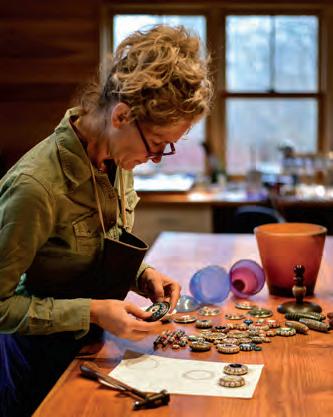
NOVEMBER 20-21, 26-28
Christmas at the Castle
Tour the Lucknow mansion at the Castle in the Clouds, festively dressed for the holidays by creative businesses and designers to reflect their take on holiday carols. Browse the artisan fair, and have fun making crafts. Tickets and times vary. Castle in the Clouds, Route 171, 455 Old Mountain Rd., Moultonborough, (603) 476-5900, castleintheclouds.org
Kristina Logan will be opening her studio during Portsmouth‘s Holiday Arts Tour.
NOVEMBER 26-28
Littleton Festival of Trees
The Festival of Trees celebrates the season and community by gathering a collection of trees decorated by local businesses and putting them on display at the Littleton Opera House. All tree displays will be raffled off. The event is offered both virtually and in-person. Friday, 1-7 p.m.; Saturday, 10 a.m.-7 p.m.; Sunday, 8 a.m.-2 p.m. Admission to the Opera House is $5, online admission is by donation. Littleton Opera House, 2 Union St., Littleton, (603) 575-5324, leadlittletonnh.com/festival-of-trees
NOVEMBER 26
Trans-Siberian Orchestra
For 2022, TSO brings a completely updated presentation of the unforgettable, multigenerational holiday tradition, “The Ghosts of Christmas Eve,” to 60 cities across the nation. This event will sell out quickly, so get tickets while you can. $53-$103. Shows at 3 and 7:30 p.m., SNHU Arena, 555 Elm St., Manchester, (603) 644-5000, snhuarena.com
NOVEMBER 26-DECEMBER 4
Southern New Hampshire Festival of Trees
This nine-day event is filled with food, fun, entertainment and, of course, decorated trees. This year, many of the trees will incorporate gift certificates in the décor. Enjoy baked goods and refreshments in the Candy Cane Café, and daily performances by local schools, dance studios, theatre and church groups. All trees will be raffled off at the close of the event. Nov. 26, 5-9 p.m.; Nov. 27, 10 a.m.-9 p.m.; Nov. 28, 12-5 p.m.; Nov. 29-Dec. 3, 5-9 p.m.; Dec. 4, 10 a.m.-5 p.m. Admission is $5 for ages 12 and over. Pelham Municipal Building, 6 Village Green, Pelham, snhfestivaloftrees.pelhamcommunityspirit.org

Keene Holiday Craft Show
Forget Black Friday and support small businesses at this annual fair held the Saturday after Thanksgiving. Shop for handmade goods from around New England, including pottery, artwork, glassware, al arrangements and designs, jewelry, photography, food products, knitting and more. The Annual Keene Holiday Craft Show has been kicking off the holiday season for over a decade now, and organizers carefully ate the selection of vendors. 9 a.m.-3 p.m. Keene High School, 43 Arch St., Keene, keenecraftshow.com
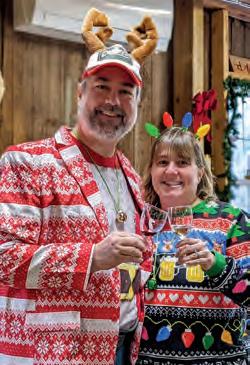
DECEMBER 1
Arts in Reach Tablescapes
NOVEMBER 19-DECEMBER 18
4th Annual NH Jingle Bells Winery Tour
Tour participants will have the opportunity to visit seven festive wineries throughout New Hampshire over the course of five weekends ending on December 18. This is a self-guided tour through New Hampshire wine country. The traveling tasters will have from November 19 through December 18 to receive a wine (or spirits at winery/distillery locations) tasting at each location accompanied by light hors d’oeuvres (available on weekends only). Along with the tastings, festivities will include a unique holiday ornament from each winery, music and a Holiday Spirit contest. The Holiday Spirit contest will feature the seven wineries and how they best display their holiday cheer. $40-$75. Saturdays and Sundays from 11 a.m. to 4 p.m., locations vary. (603) 659-2949, Facebook.
Arts In Reach (AIR) is partnering with Ethan Allen for the return of Tablescapes. This exciting event will showcase stunning holiday displays created by the Seacoast’s community of talented designers, artists and florists. The opening party will include a silent auction, light refreshments and award presentations. The tabletop designs also will be available for the public to view. All proceeds benefit Arts in Reach, a Portsmouthbased nonprofit that empowers teenage girls through inclusive, creative community. Opening party, Dec. 1, 5-7 p.m. Additional viewing Dec. 2, 10 a.m.-4 p.m. Suggested donation of $10. Ethan Allen, 775 Lafayette Rd., Portsmouth, (603) 433-4278, artsinreach.org
DECEMBER 1-2
Exeter Festival of Trees
Enjoy the festive atmosphere, admire the beautifully decorated trees, and stop in for a bake sale treat. Raffle tree tickets will be sold for a chance to win a special committee tree filled with local business gift cards and certificates. All proceeds from the festival go to the Community Children’s Fund providing warm clothing and bedding vouchers to Seacoast area children in need. Wednesday, 11 a.m.-6 p.m.; Thursday, 11 a.m.-8 p.m., Exeter Town Hall, 10 Front St., Exeter, (603) 772-2411, exeterareacharitablefoundation.org
DECEMBER 4-5, 8 AND 11-12
Wolfeboro Festival of Trees
Organizers of the Festival of Trees are optimistically planning to celebrate the 22nd Wolfeboro Festival. This annual benefit features more than 65 trees, uniquely decorated by area businesses and organizations, and displayed on two levels at the Wright Museum. In addition to the trees, the exhibit features continuous entertainment and light refreshments. The preview gala cocktail
reception takes place on December 2 from 6-8 p.m. Admission is $65. The Wright Museum, 77 Center St., Wolfeboro, (603) 569-2981, wolfeborofestivaloftrees.com
DECEMBER 11-12
Symphony NH Holiday Pops
This annual holiday concert will feature selections from the “Nutcracker” and “Sleigh Ride” as well as singalongs. Saturday, 6:45 p.m.; Sunday, 2:15 p.m. Tickets are $60. SATURDAY: Keefe Center for the Arts, 117 Elm St., Nashua. SUNDAY: Concord City Auditorium, 2 Prince St., Concord, (603) 595-9156, symphonynh.org
DECEMBER 11
Boston Pops Holiday Concert
Capturing the magic of the holiday season and the winter charms of New England, the Boston Pops will perform their signature “Sleigh Ride,” as well as other holiday classics and new arrangements of seasonal favorites. They are joined by the Metropolitan Chorale, known as one of Metro Boston’s premier choral ensembles. Santa Claus will make a guest appearance during the concert’s finale followed by the traditional Boston Pops holiday singalong to bring this special performance to a close. 7:30 p.m., SNUH Arena, 555 Elm St., Manchester, snhuarena.com
DECEMBER 18-19
Portsmouth Symphony Orchestra Holiday Pops
Join the PSO winter solstice weekend as we shift from darkness to light and celebrate the season with cheer and joy. A perennial family favorite, this year’s holiday pops program includes an international flavor that celebrates humanity during the holiday season. 3 and 7:30 p.m. Admission is $30 for adults, $25 for seniors and $15 for students and children. Portsmouth High School, 50 Andrew Jarvis Dr., Portsmouth, (603) 686-8133, portsmouthsymphony.org


2.
3.
4.
1.


AT
Ode to the Truth of Imagination
We are sauntering through the back side of Stratham Hill, a small park in Portsmouth with an observation tower and plenty of rocks. We are, in fact, looking for one rock in particular, the oddly named Kitty Rock—so named because of a small, curious metal plaque fastened to the rock that tells of a young girl, Margaret Consalvi, standing on it and saying the name of her kitty out loud. The cat’s name and the girl remain a mystery.
Still, my 7-year-old daughter, Little Bean, loves this place. The trails are mellow, there’s a playground and that tower gives us a sightline all the way to the ocean. We’ve been here many times.
Today we’re with a friend of hers and that changes the dynamic. The girls are a bit more rushed than usual, more interested in each other than in the outdoors, and that’s fine. The mosquitoes are fierce on this late summer day, however, and that’s not as fine. So, we’re hustling in a way contrary to how we usually do things.
The girls find the stone and then surprise me. They decide that the reason the little girl from the past recited her pet’s name was to bring the cat good luck and good fortune. They decide this rock is a Pet Protector Rock. The names of the girls’ pets—Lavender and Rosie—are spoken to the skies and we’re on our way. A new mythology of imagination is created.
Imagine, your first concert is The Beatles! She’ll understand one day that seeing that band is actually my own wish fulfillment, not hers, and that may become a complicated discussion.
But then again, she also believes a rock can protect her cat. And she believes in the tooth fairy. And, of course, in Santa Claus.
ing skills and the rituals we develop with our families.
Still … I don’t want her to think these lies are, well, lies. I want her to trust me.
After finding our rock, the girls and I bee-line it for the playground and they gab happily as they hike and swat away bugs. They make up stories about insects they encounter along the way, creating new creatures that live in holes along the trail. My daughter names an inchworm. She names him Rex, which seems to please the girls. I proffer the occasional factual tidbit about bees or geology or weather, but they’re perfectly happy making it up as they go. They are children living in a world where anything is possible, and maybe we adults are just jealous. I mean, I wish that I believed with all my heart that The Beatles still existed. I feel like even just that belief would make me a tiny bit wiser of a man.

I mention this story because it feels appropriate as we enter the holiday season, a time of ritual, mythology and, of course, imagination.
Recently, I found myself having to reinforce one of those myths. I suppose some would call what I did lying. Little Bean believes for example, that The Beatles still exist and that a particular Beatles cover band we venture out to see is the real thing.
We’re entering a tricky time in her life, a turning point that cognitive development pioneer psychologist Jean Piaget called the “concrete operational stage” of her thinking. In other words, she’s soon going to start asking questions and my wife and I are going to have to decide how to ease her into that fine space between the actual truth and the qualities that Santa represents—kindness, generosity, empathy.
Whether Santa is real, the Beatles still play or a boulder protects pets shouldn’t be as important as the flare of imagination, the process of developing critical learn-
Perhaps the takeaway from all this, as we enter yet another season of make- believe, is that everything comes from something. Ritual, no matter what flavor you celebrate, can provide a connection that—dare I say this— outweighs what we perceive to be true or at least relatively true.
Children are artists and philosophers and inventors. So what if the sky they draw isn’t always blue, nor the sun yellow. Let Santa come. There’s magic in imagination and there’s magic in just being together.
Back at home, my daughter finds her cat and lifts her into a snuggle, and for once Lavender doesn’t resist and gives herself over to my daughter’s affections. Maybe the cat felt a little something from the heavens when my daughter shared her name atop the rock. Who can say what the reality may be. NHH
BY DAN SZCZESNY | ILLUSTRATION BY CAROLYN VIBBERT
